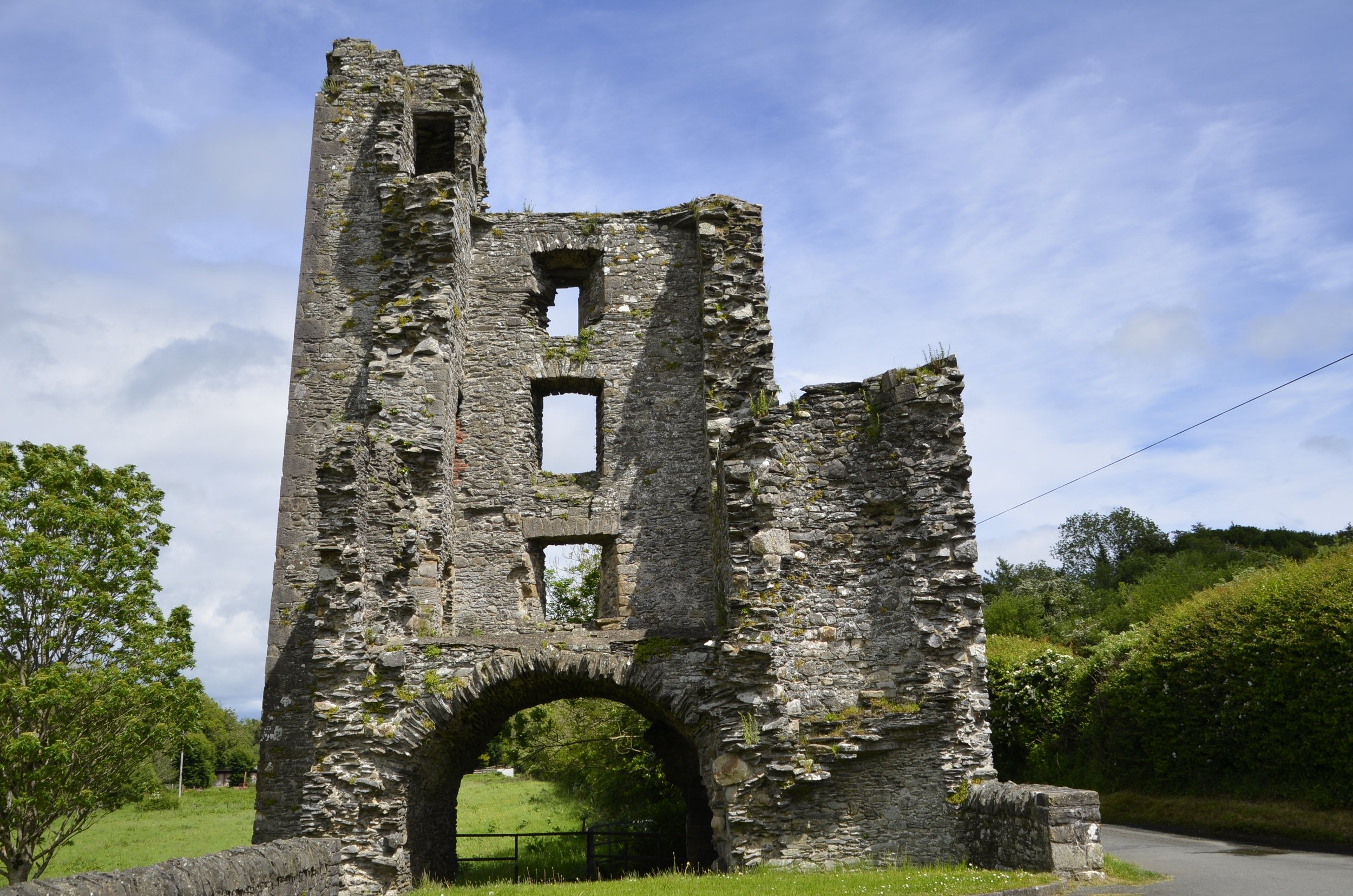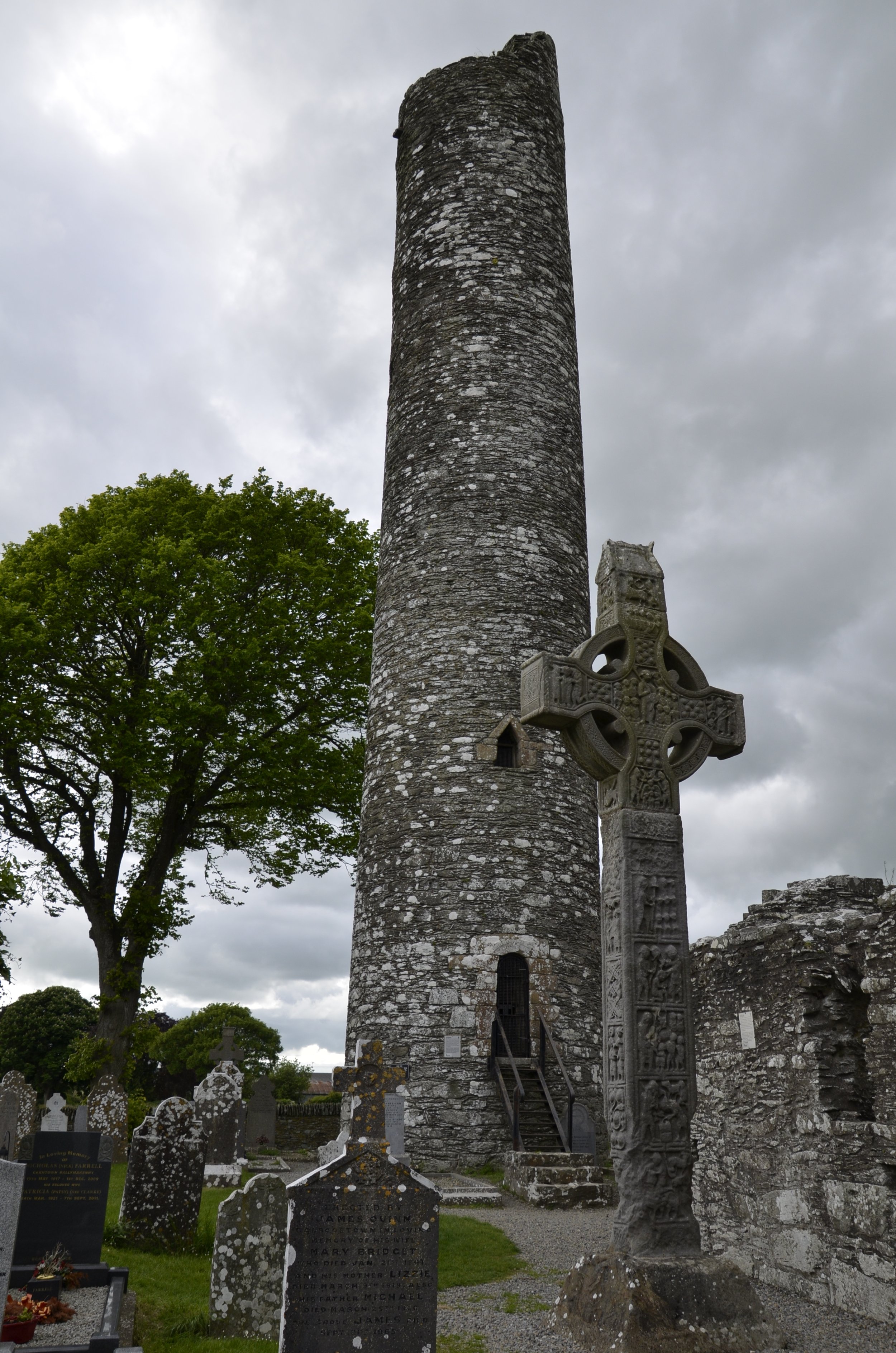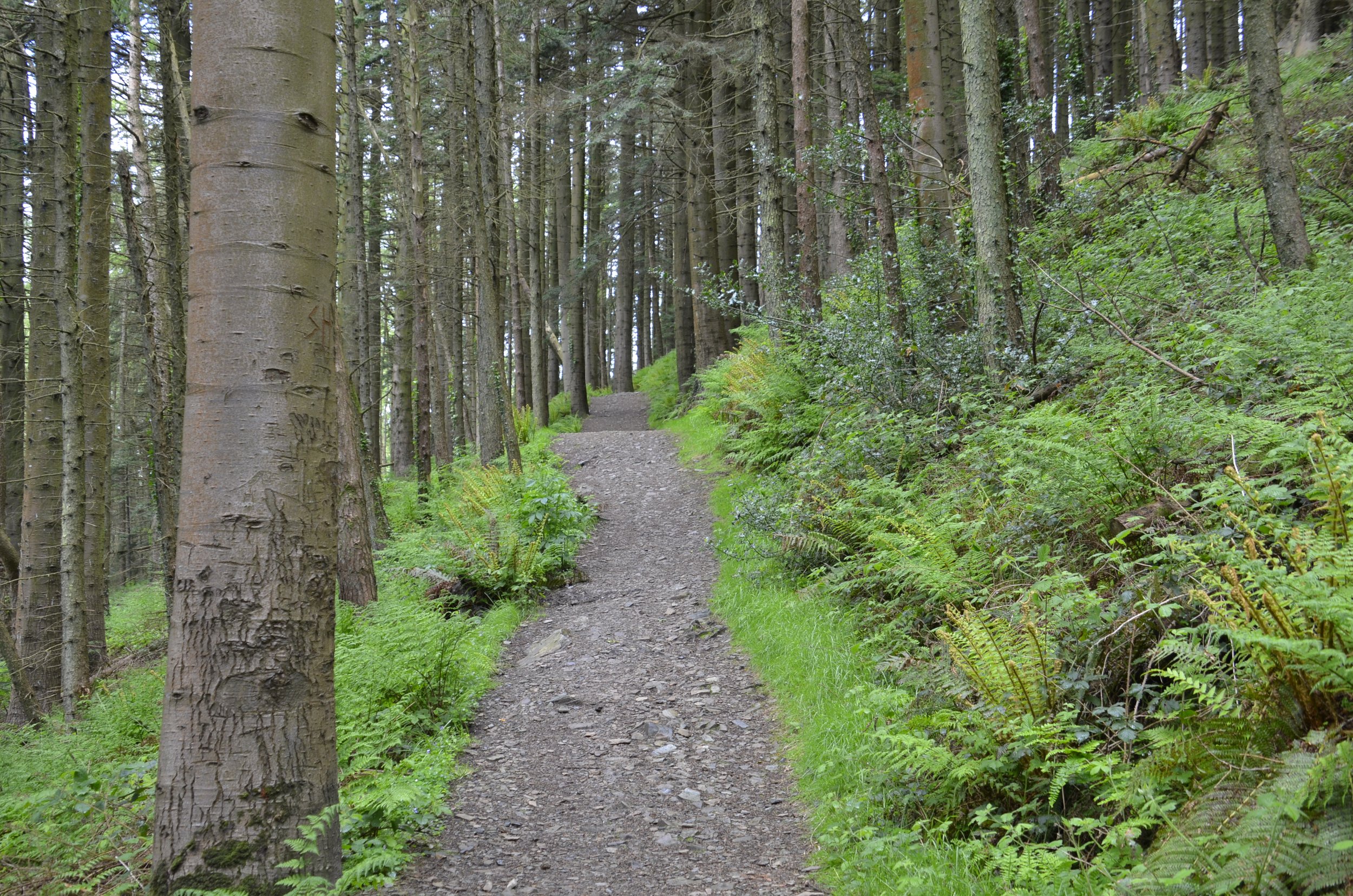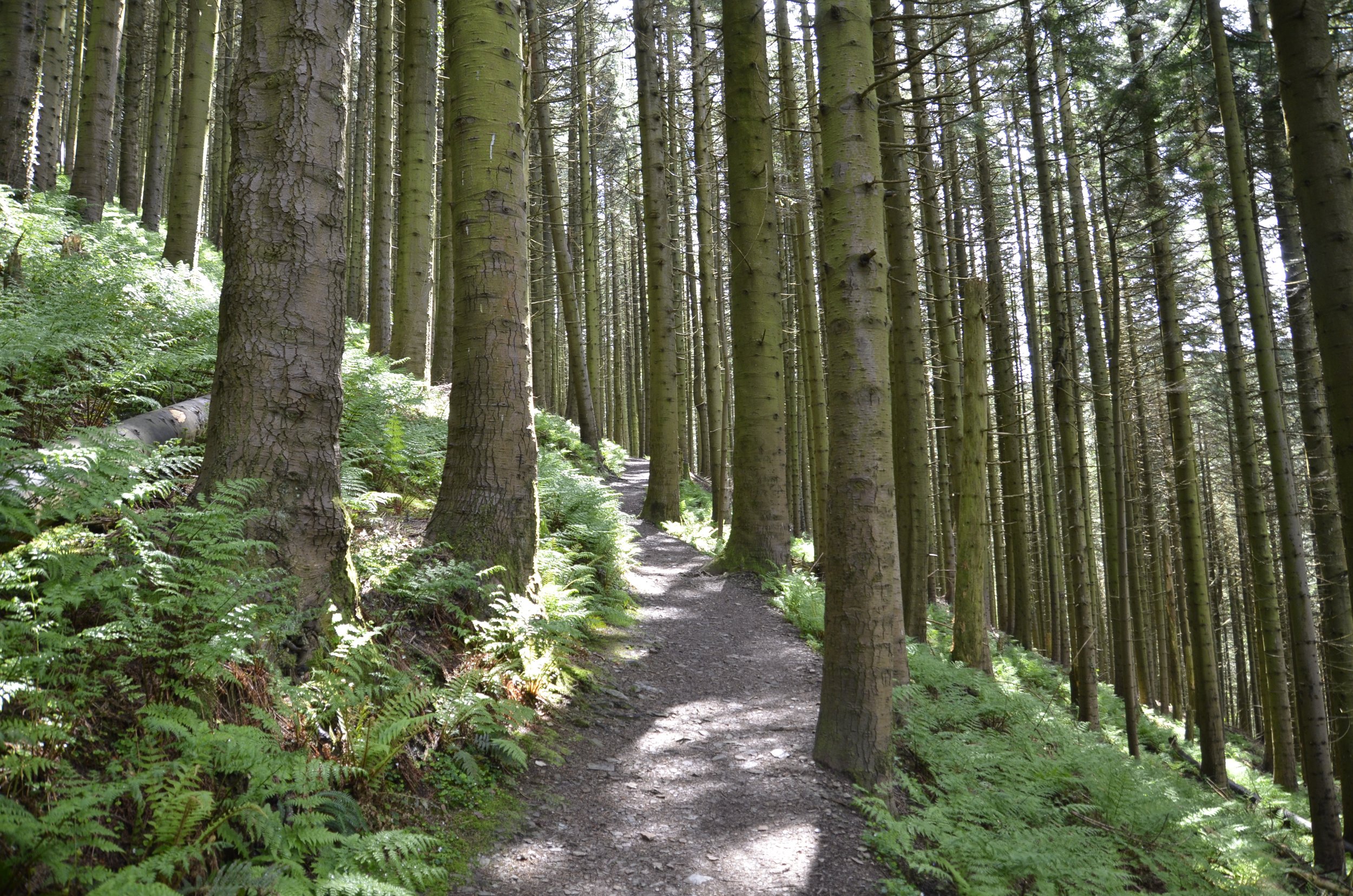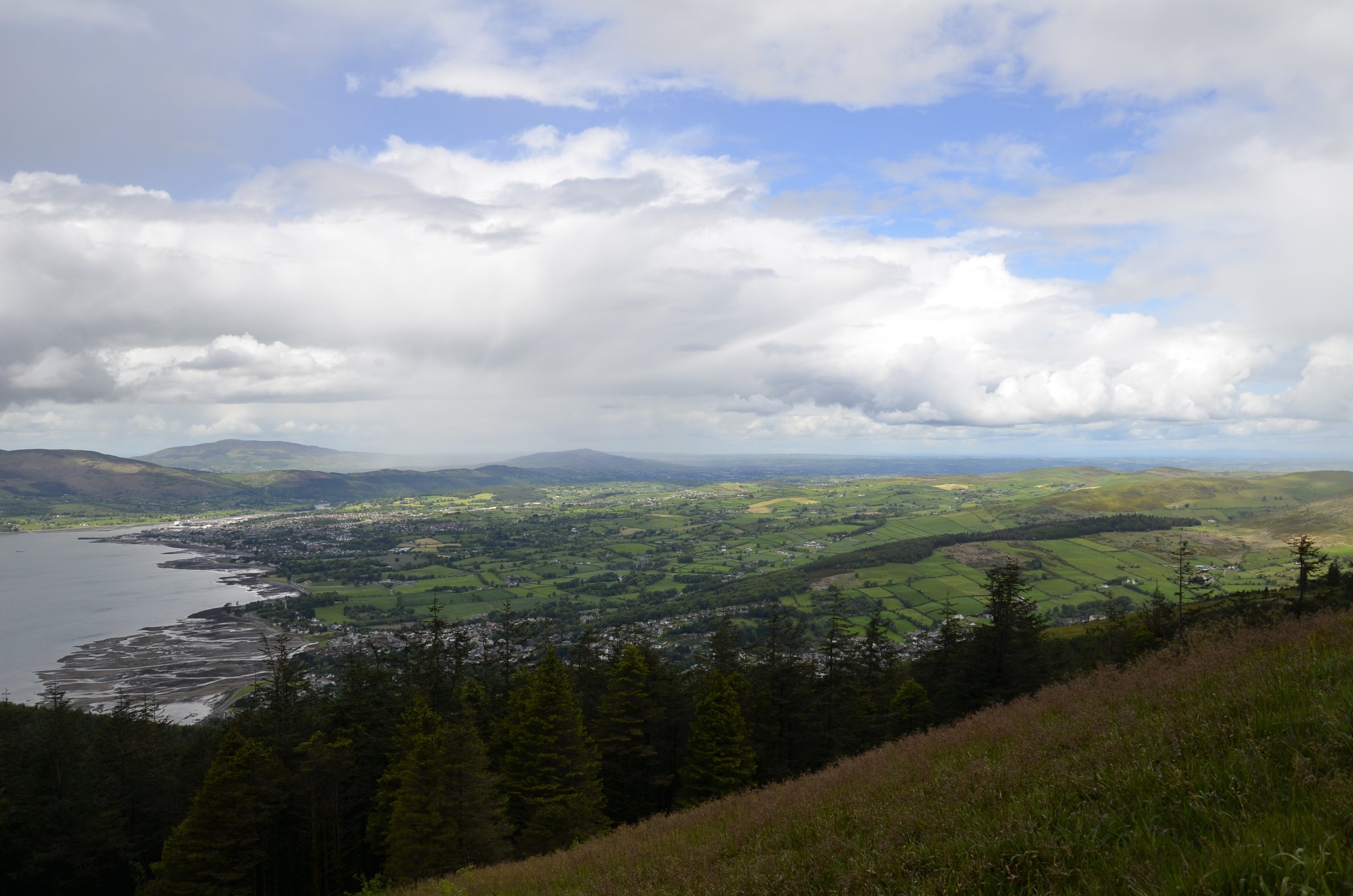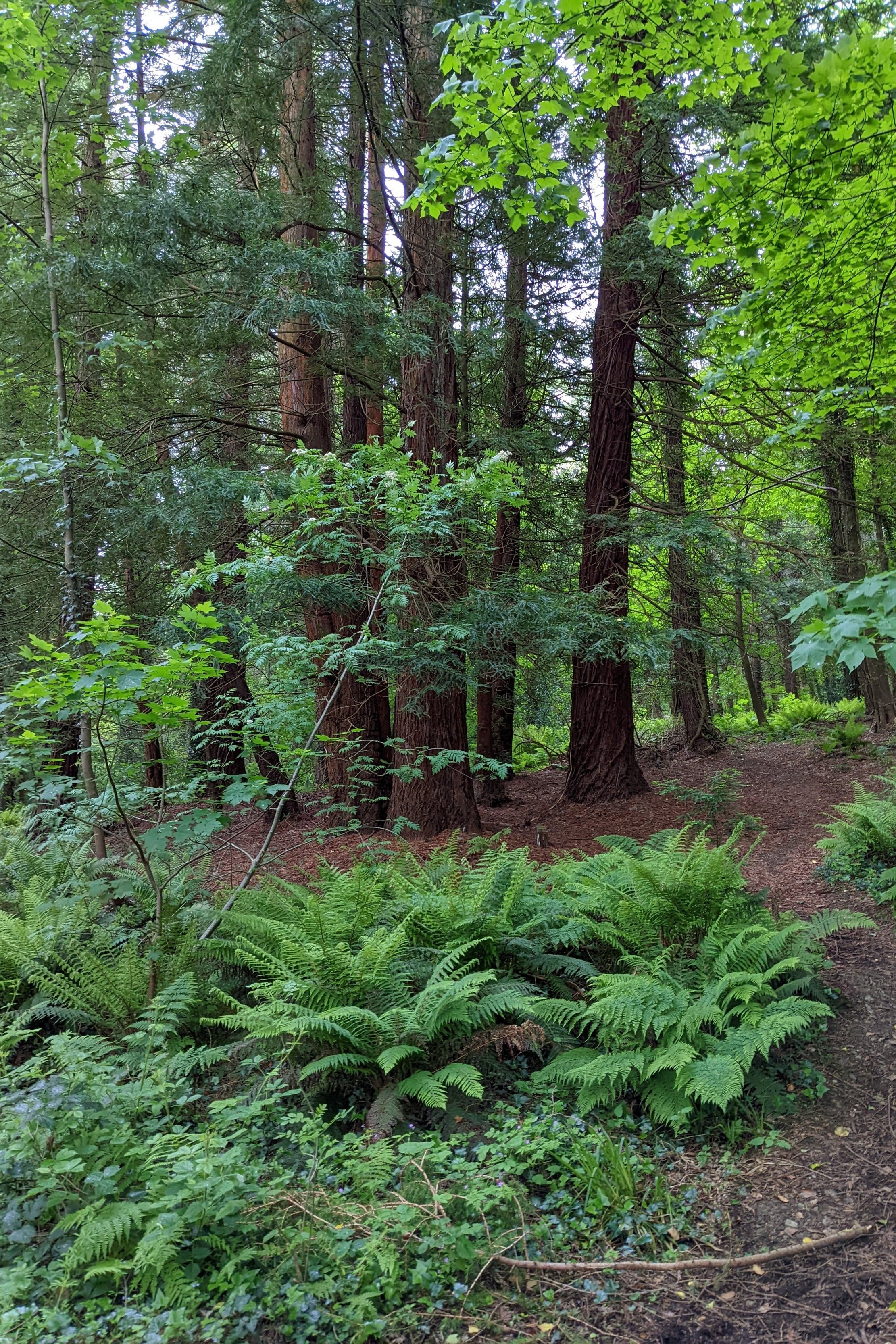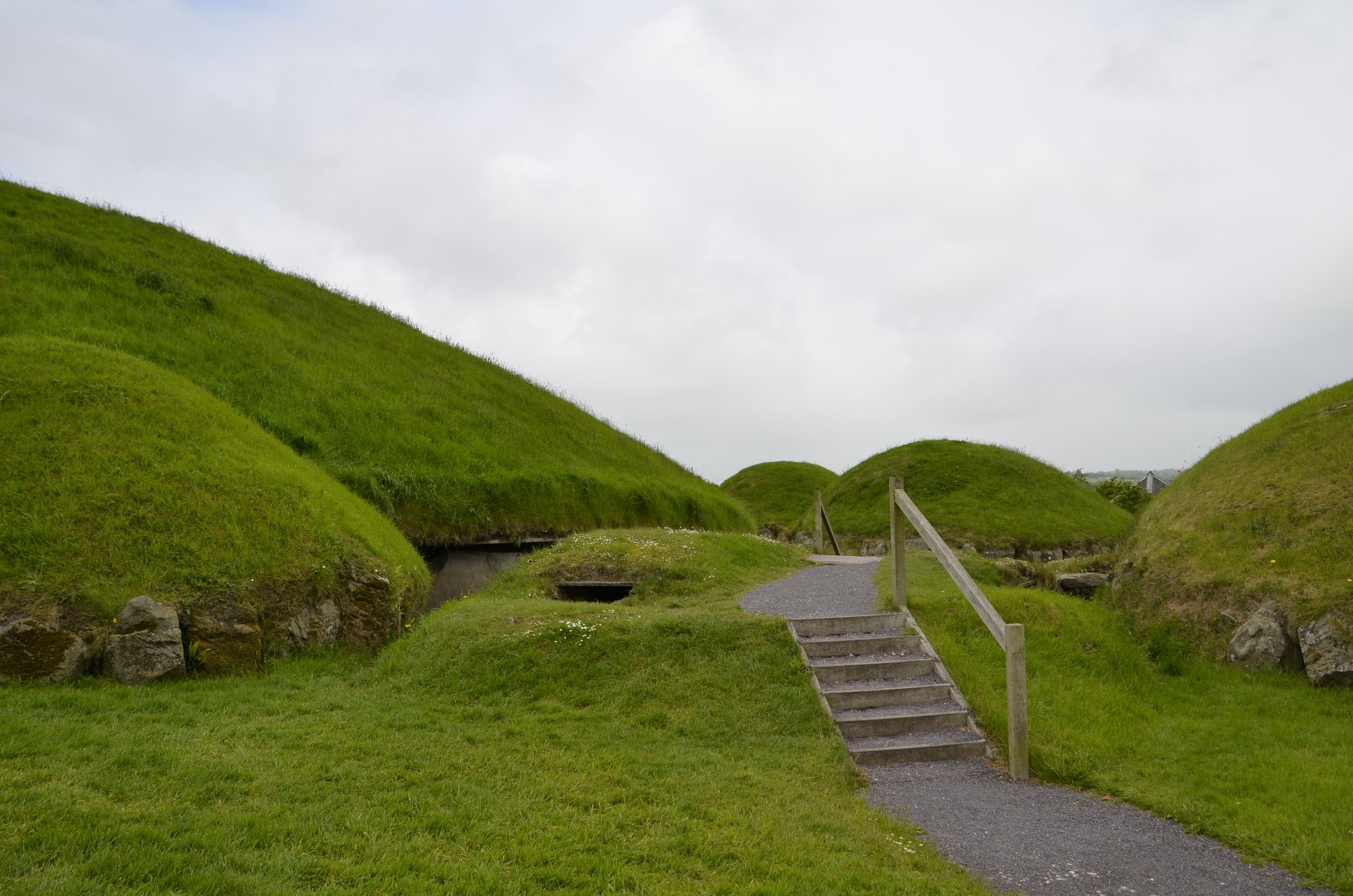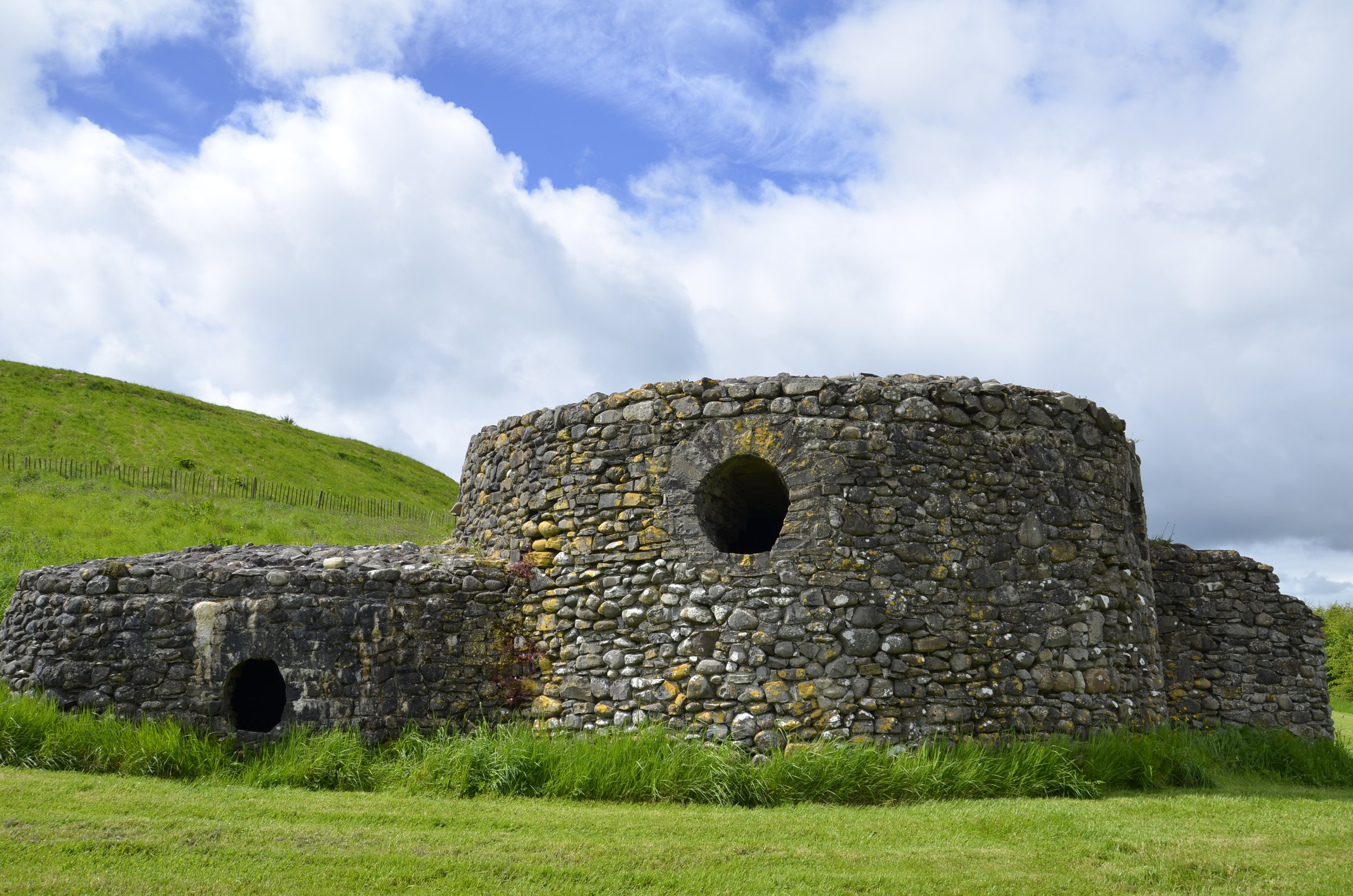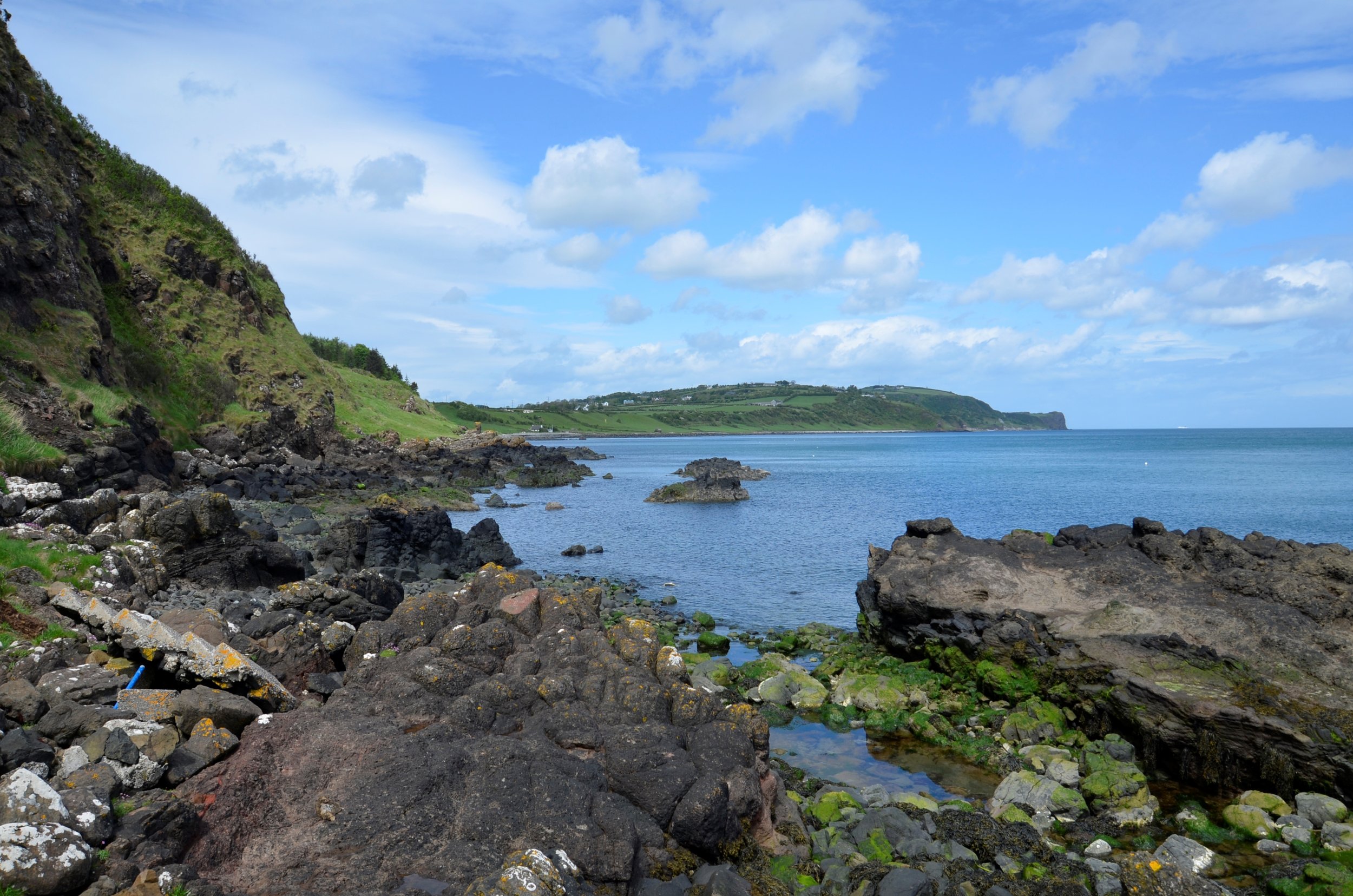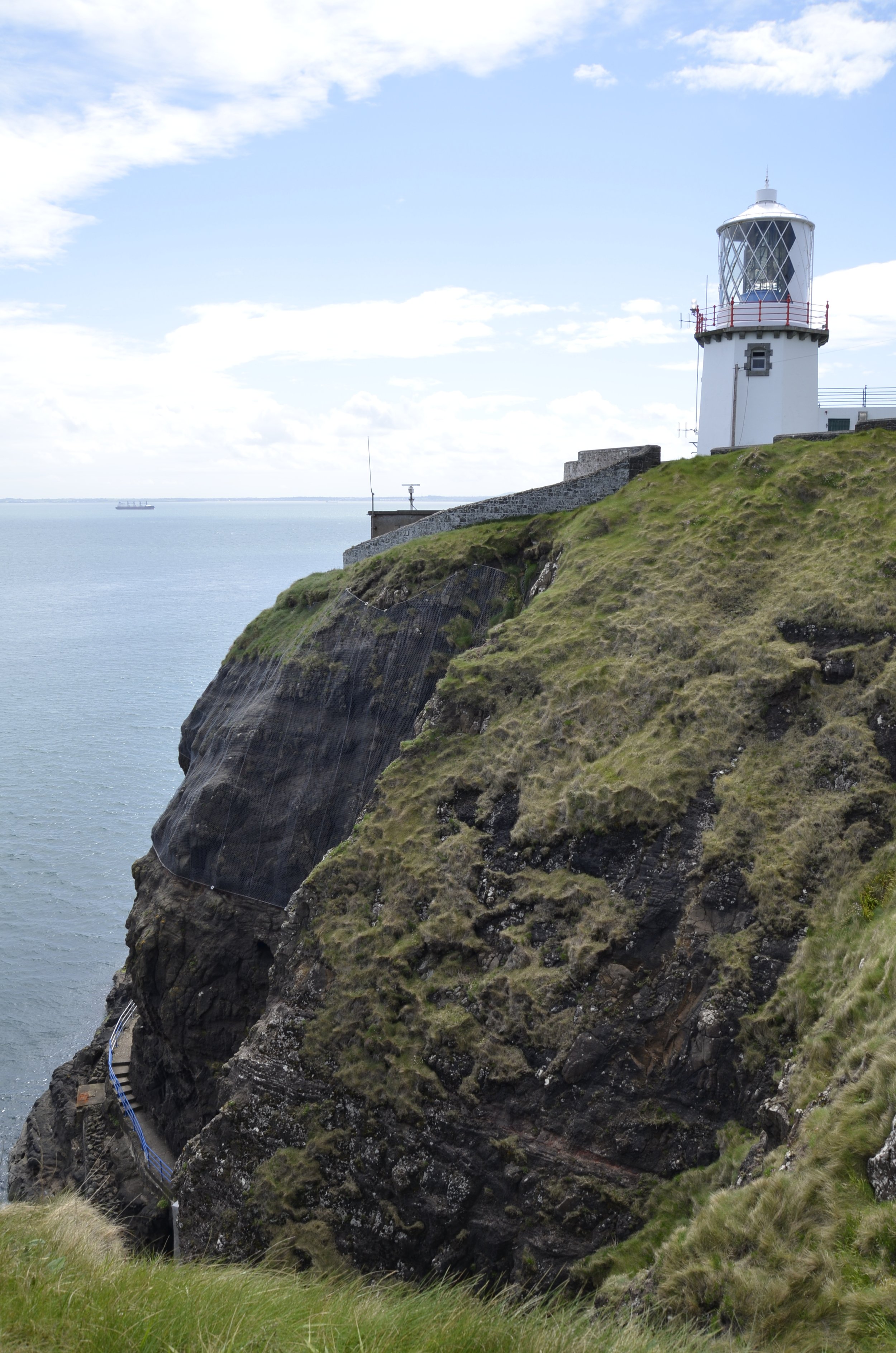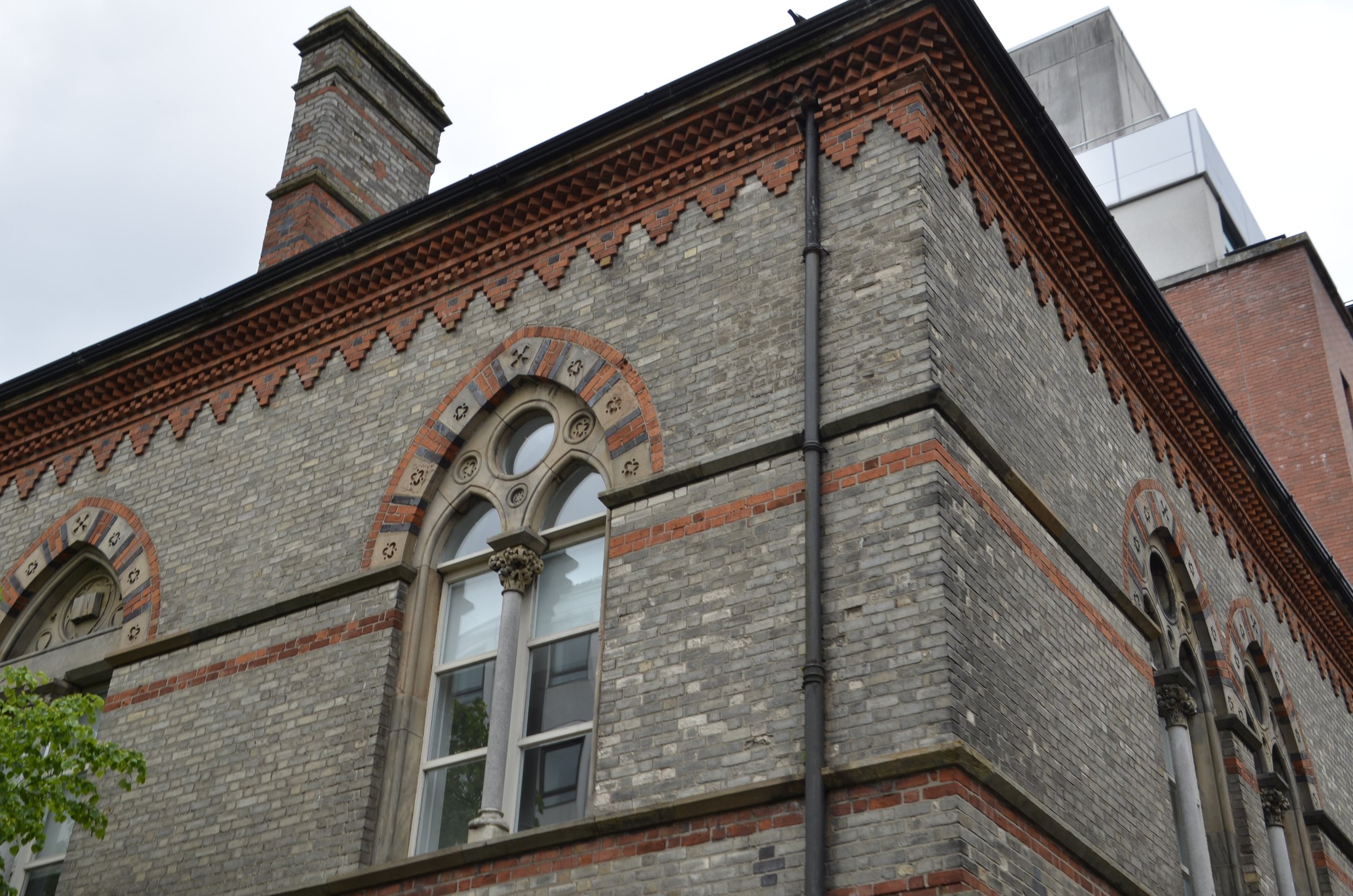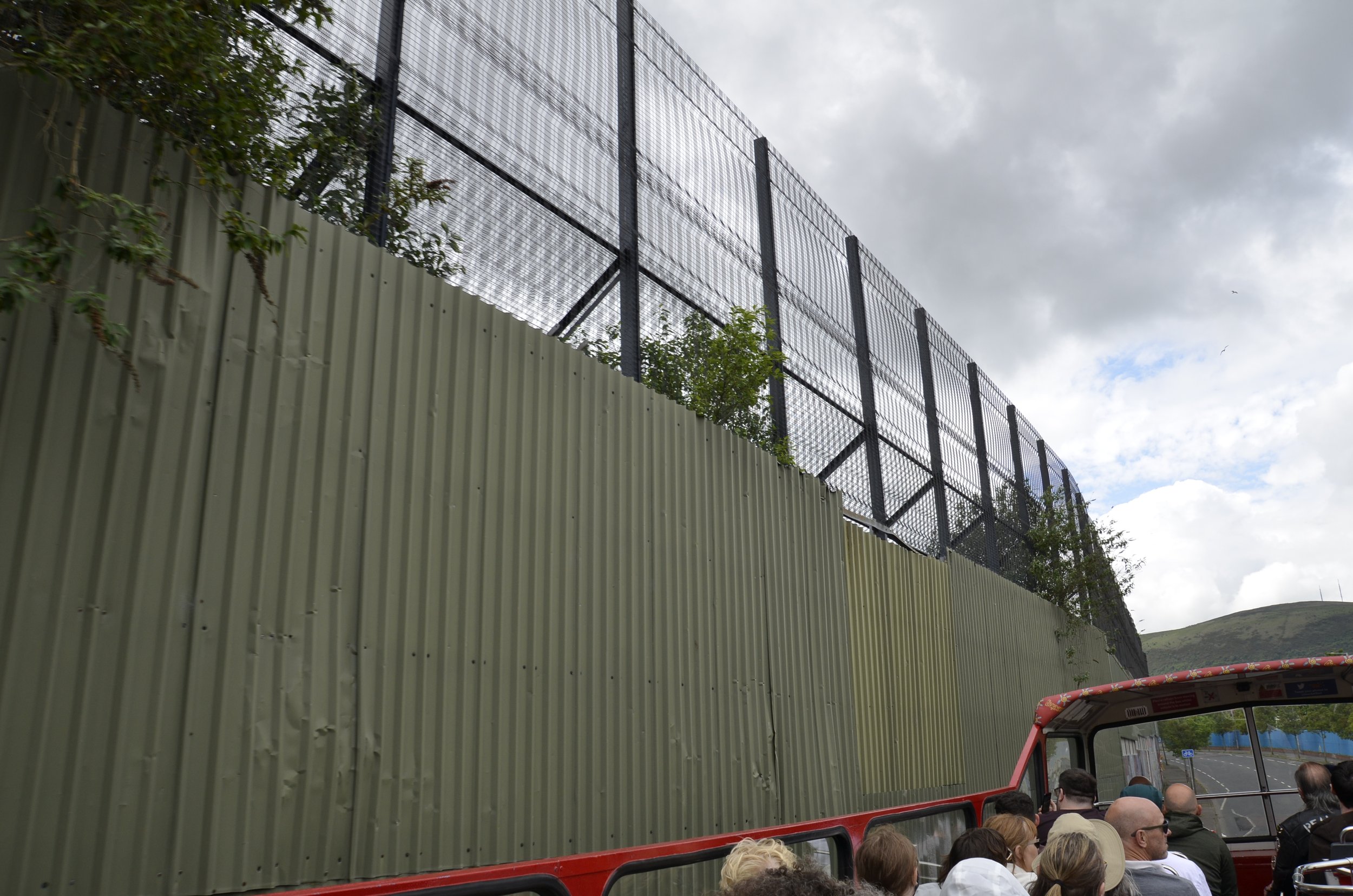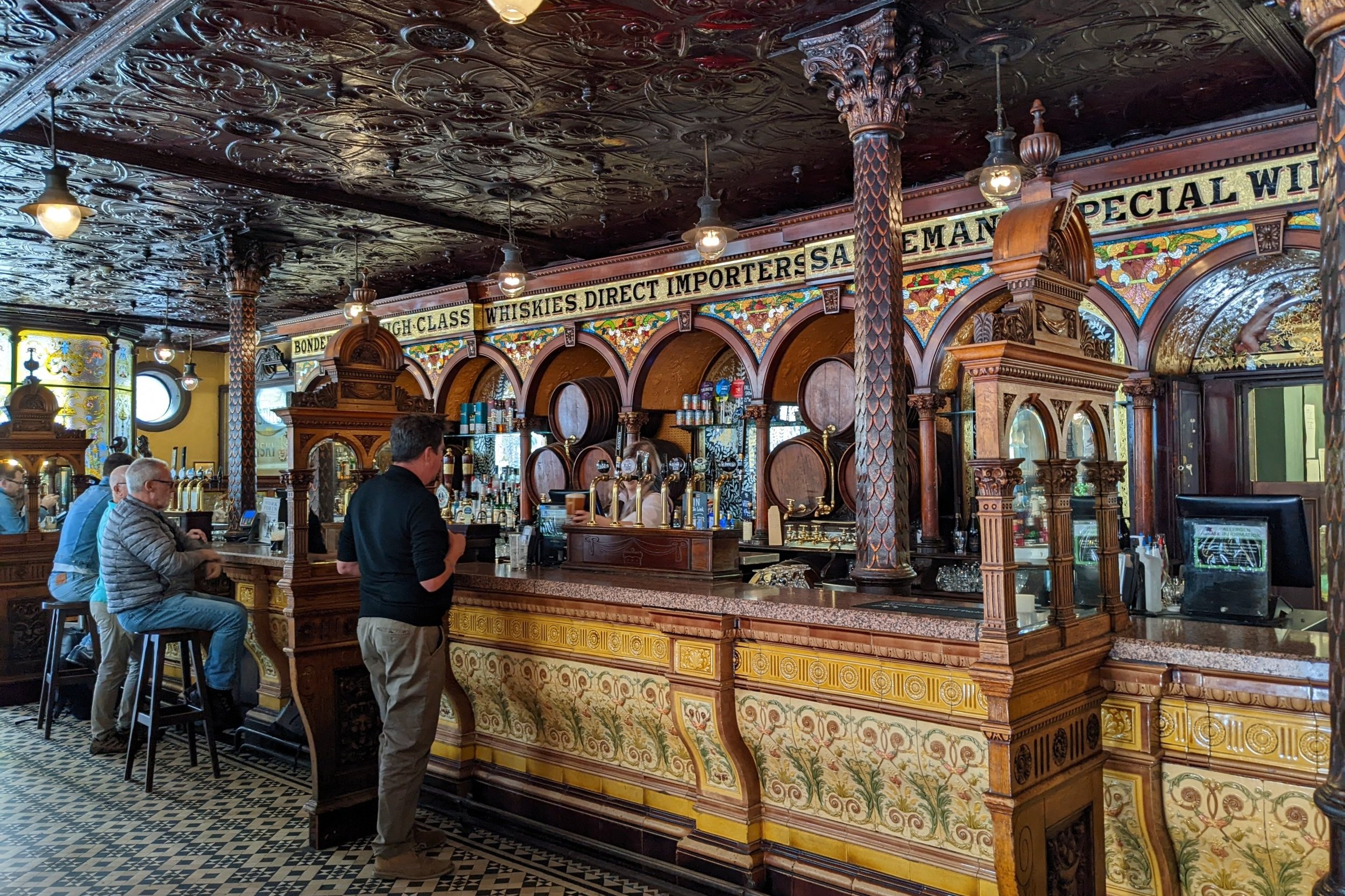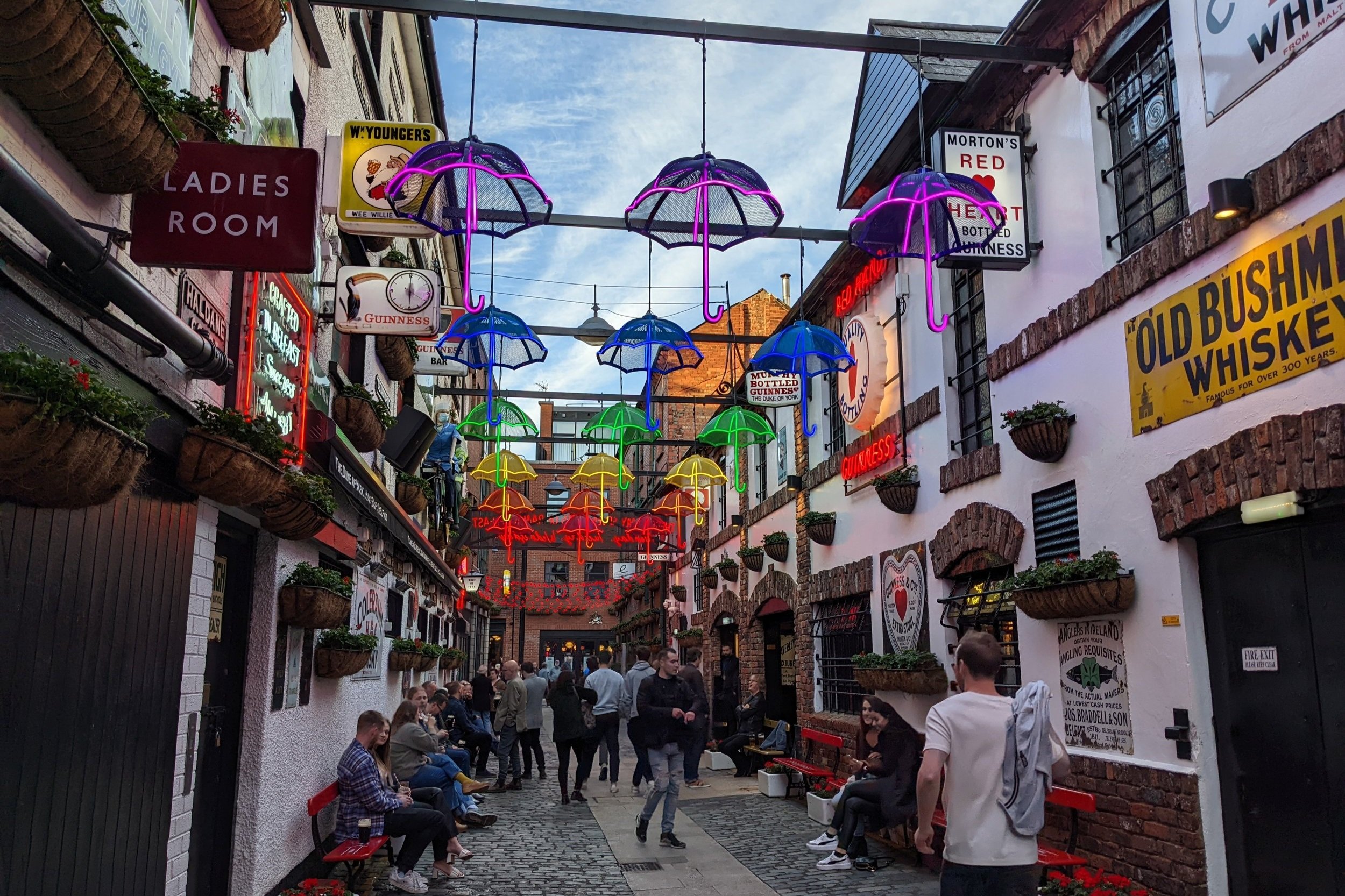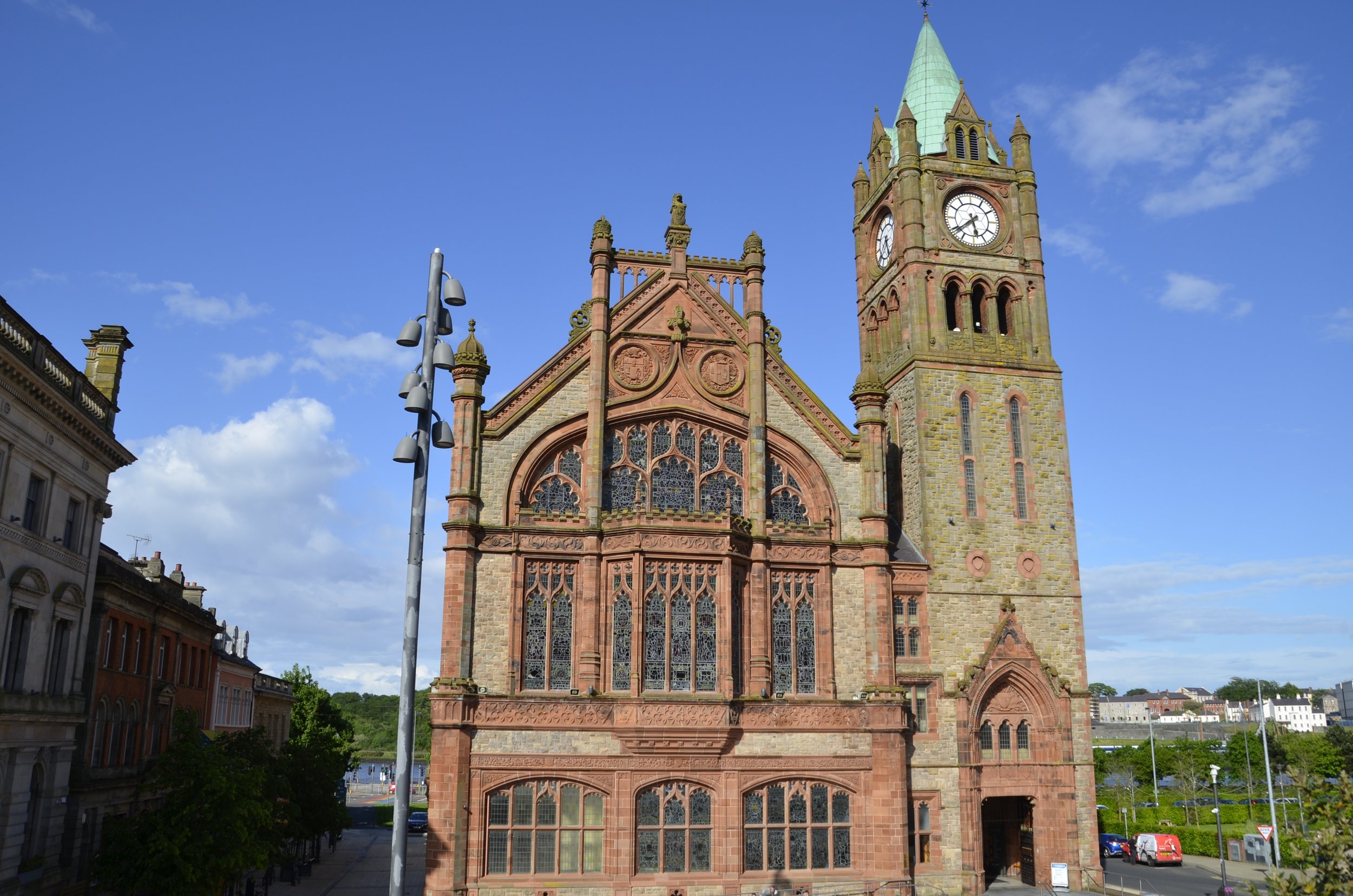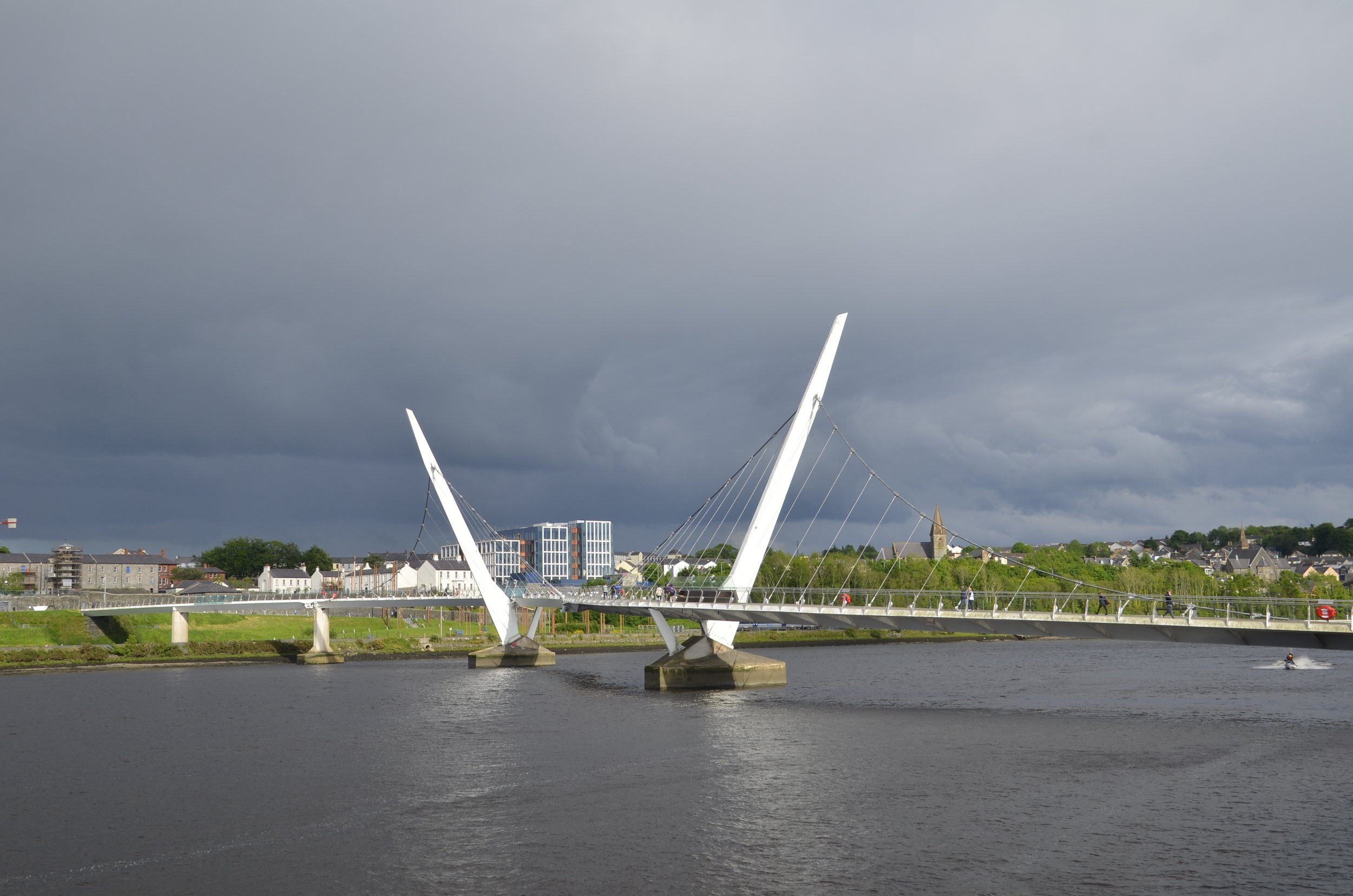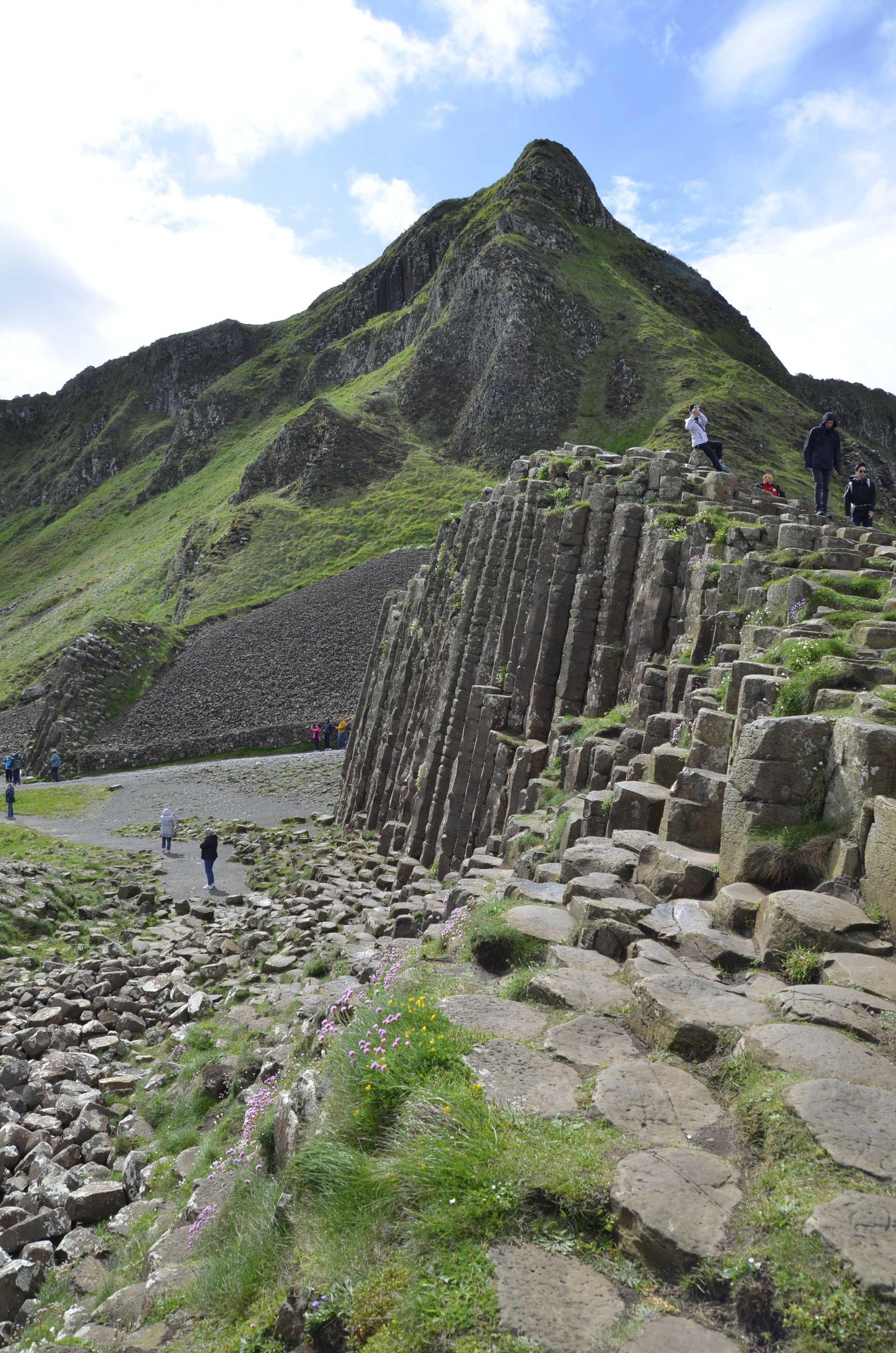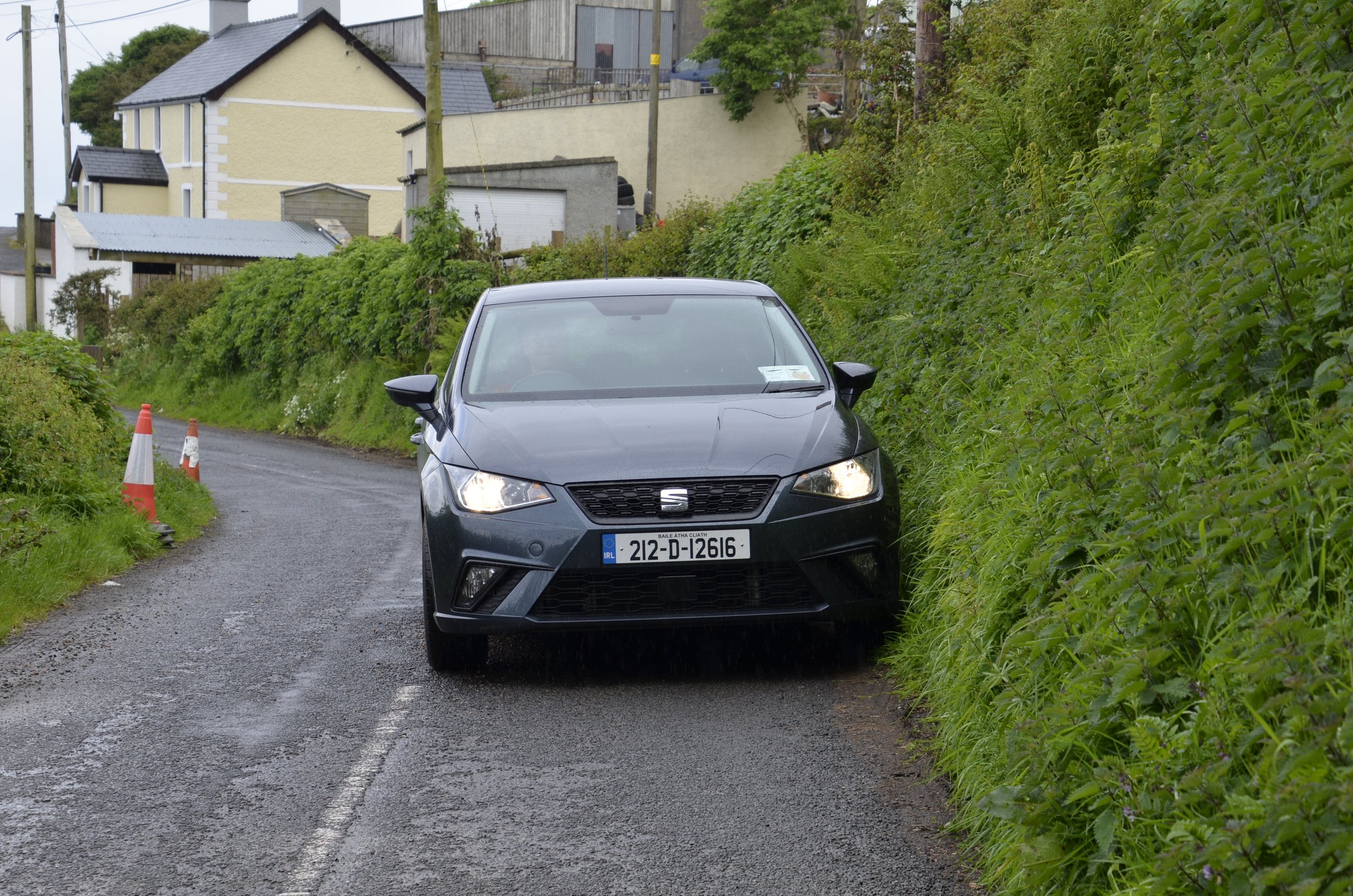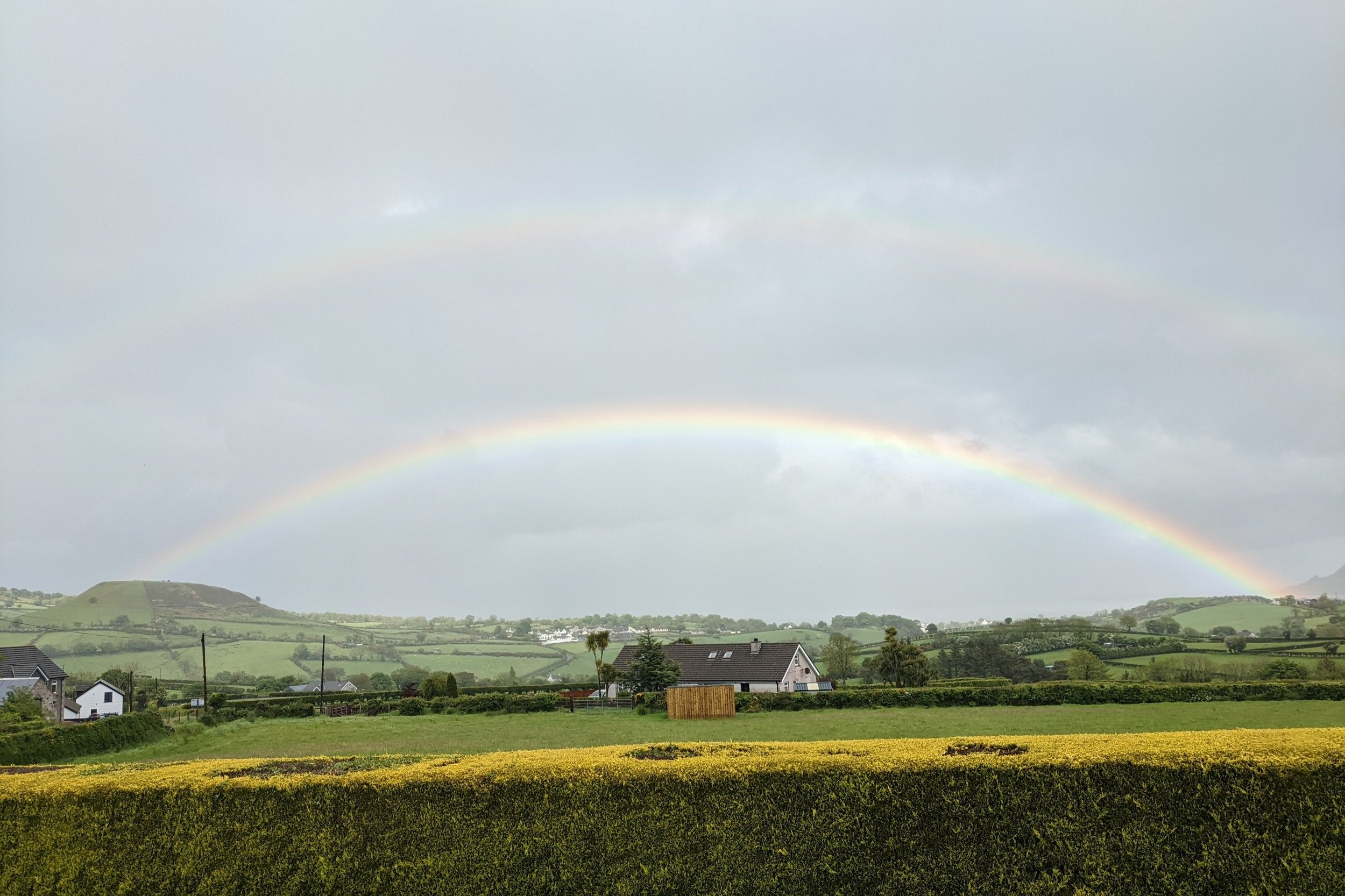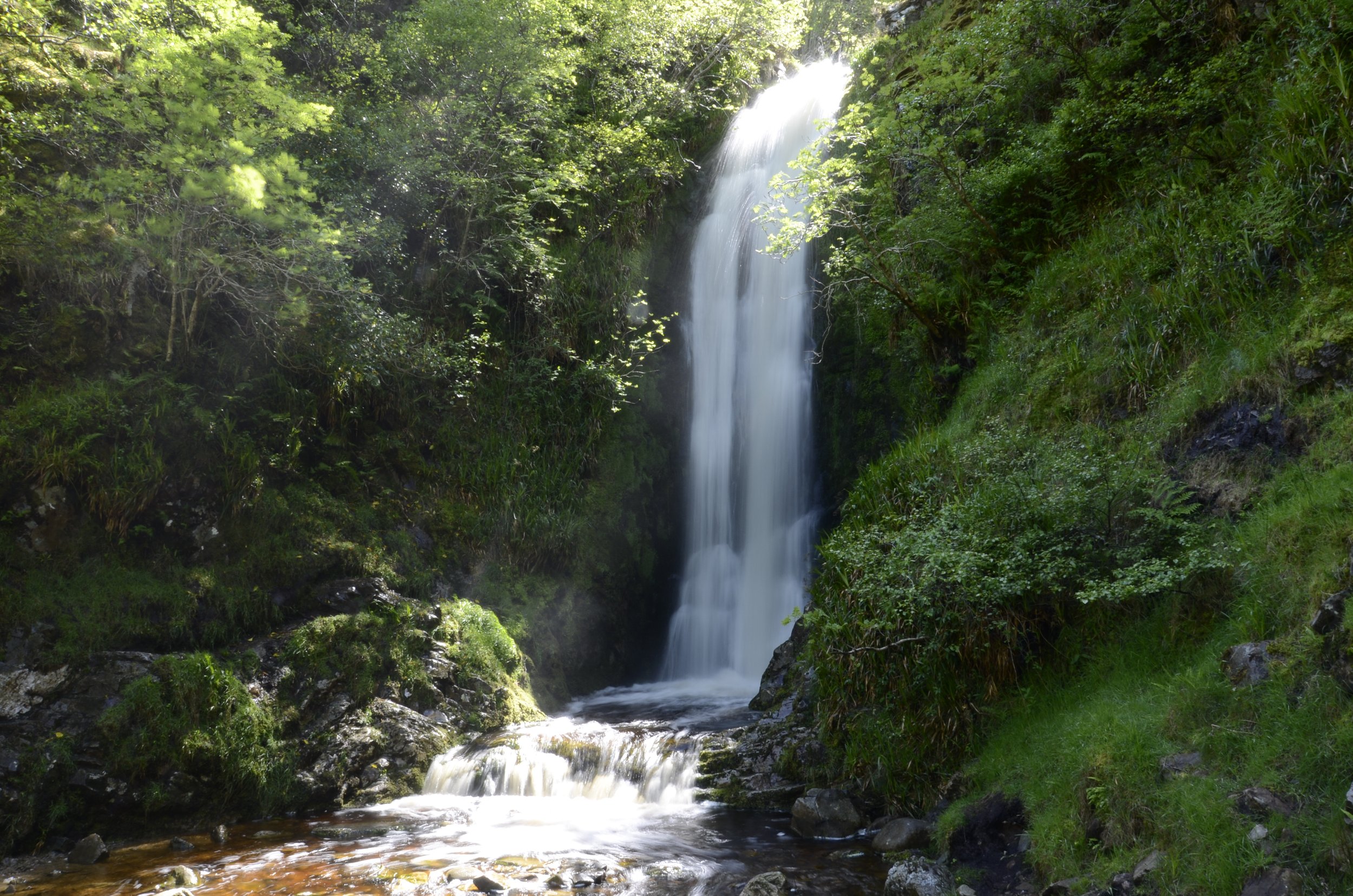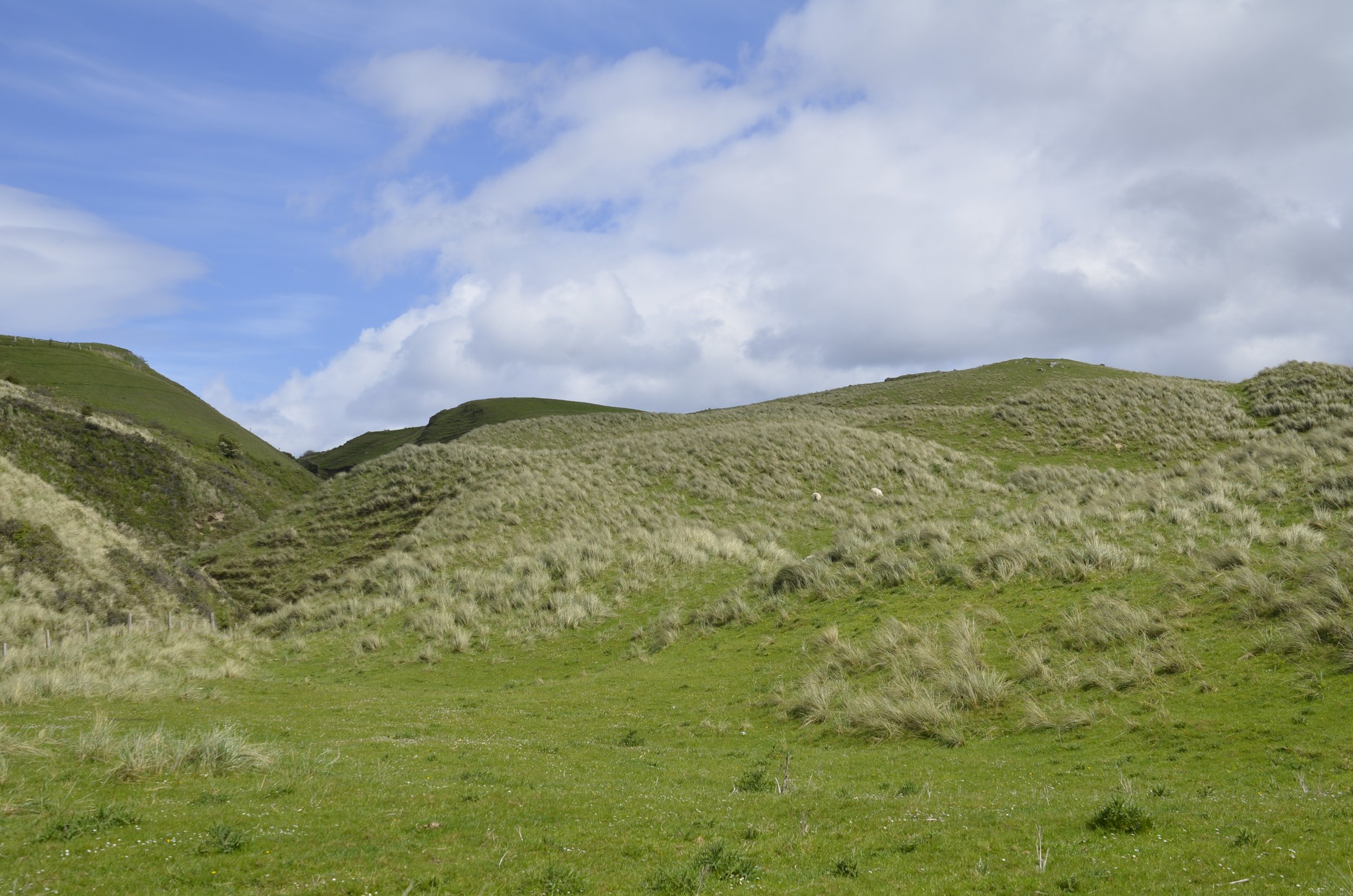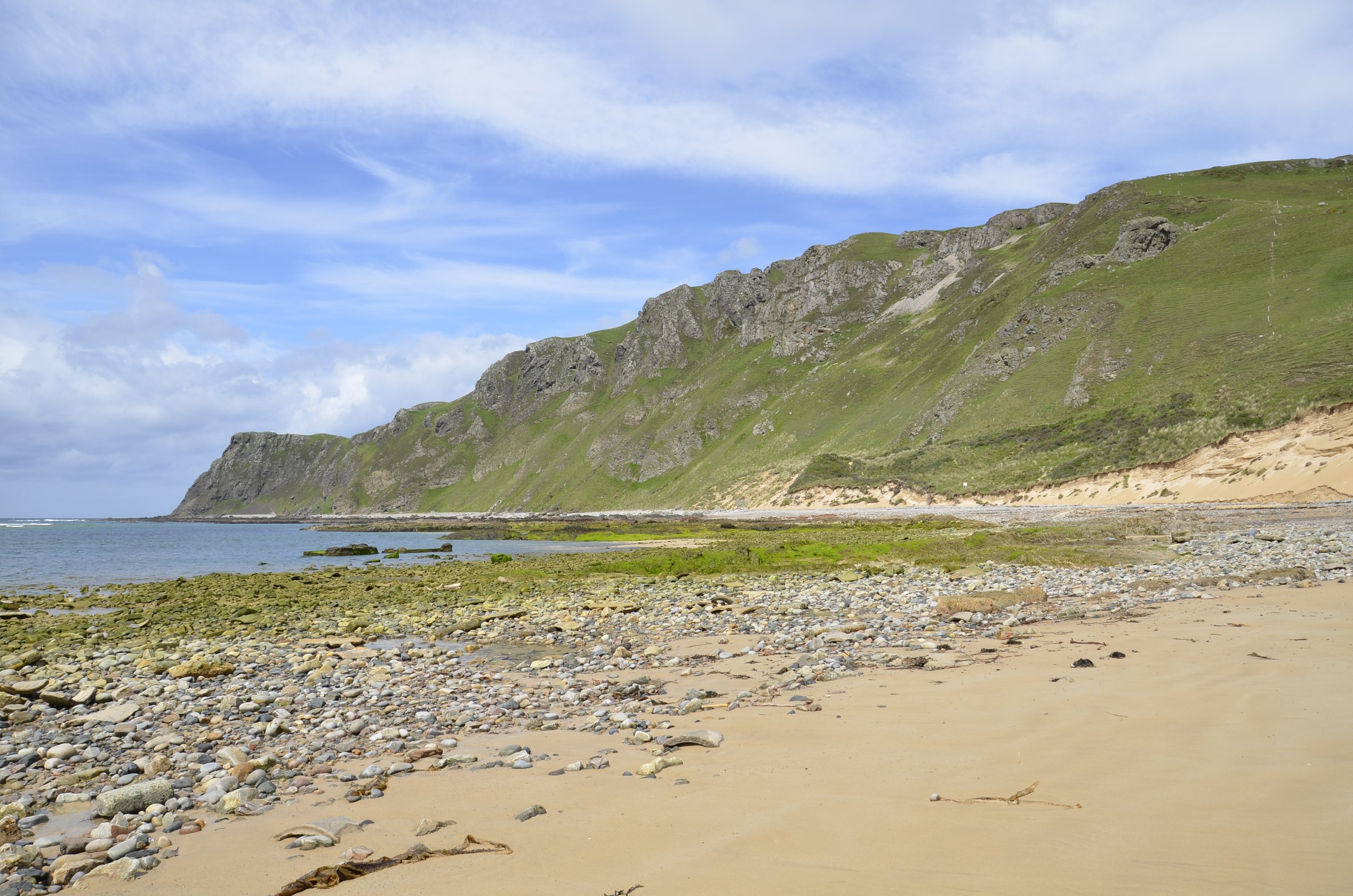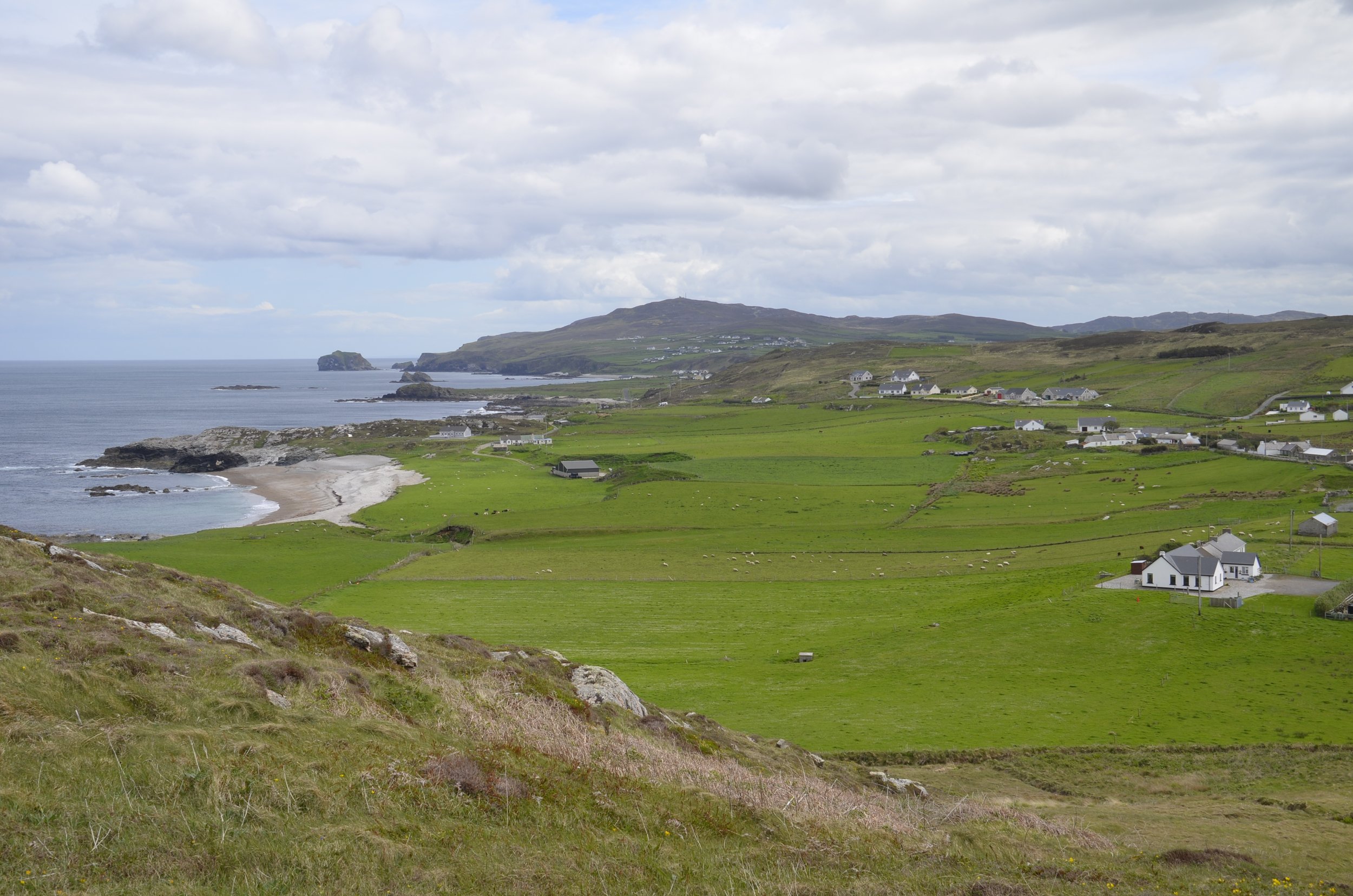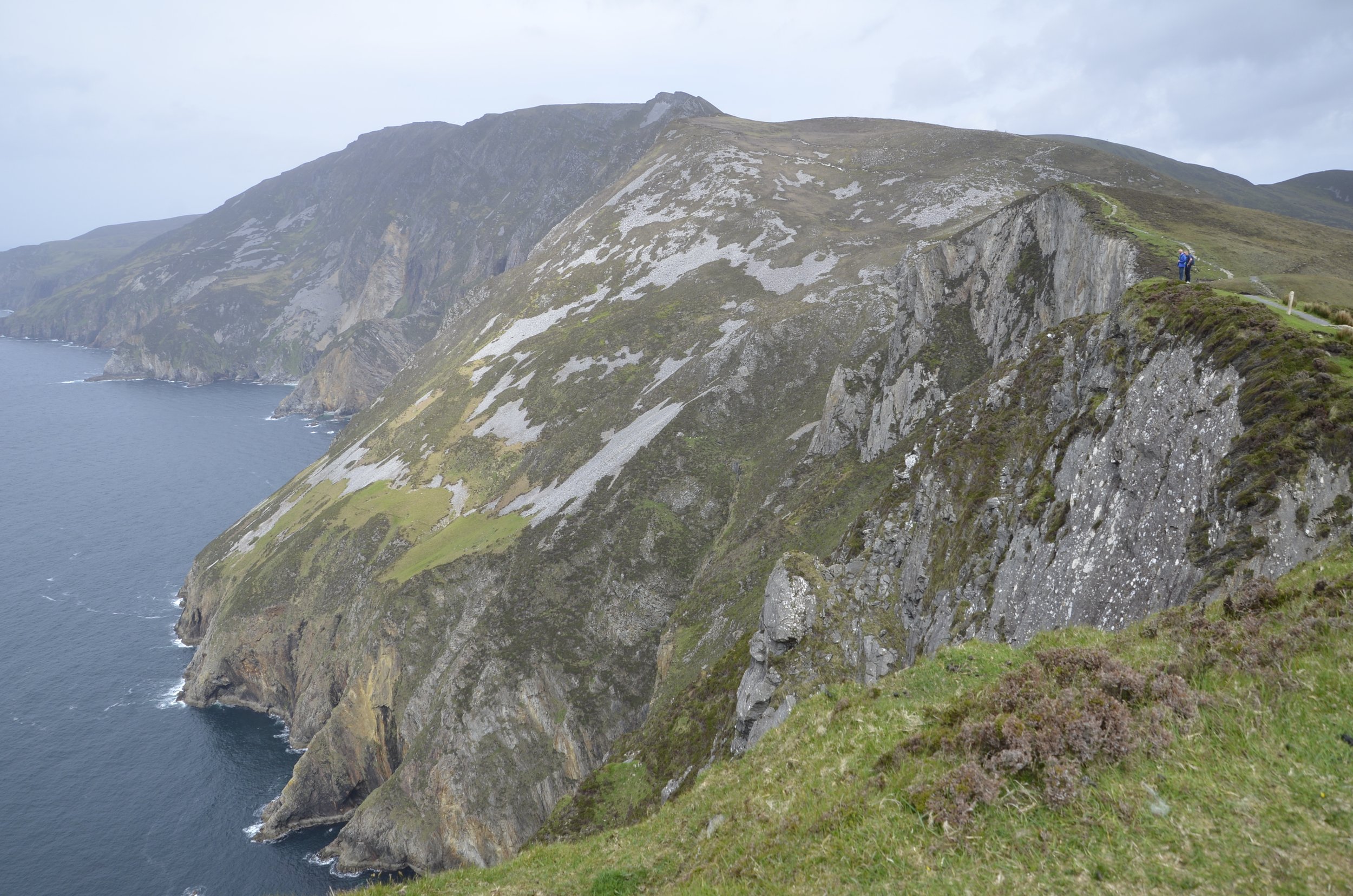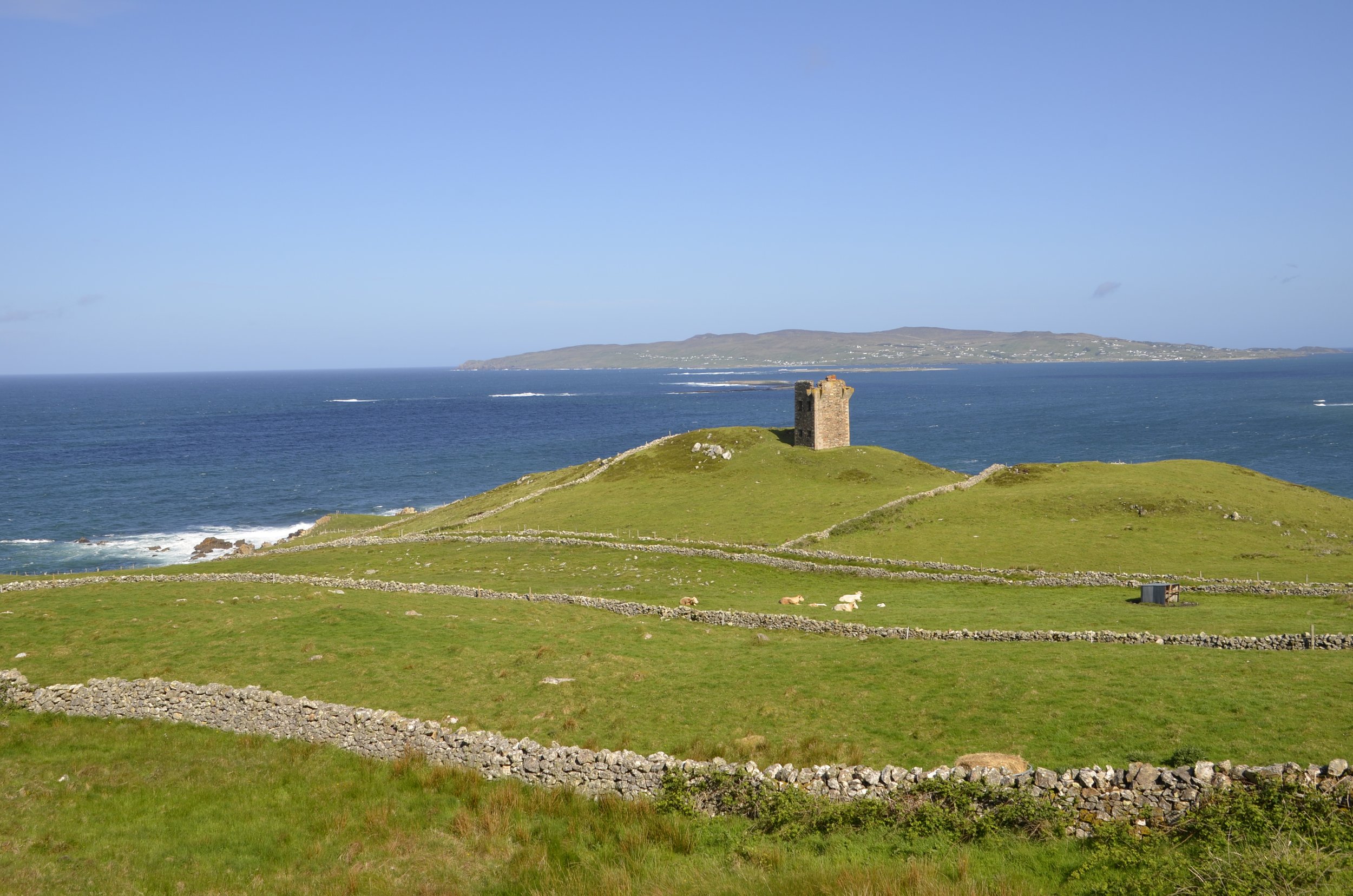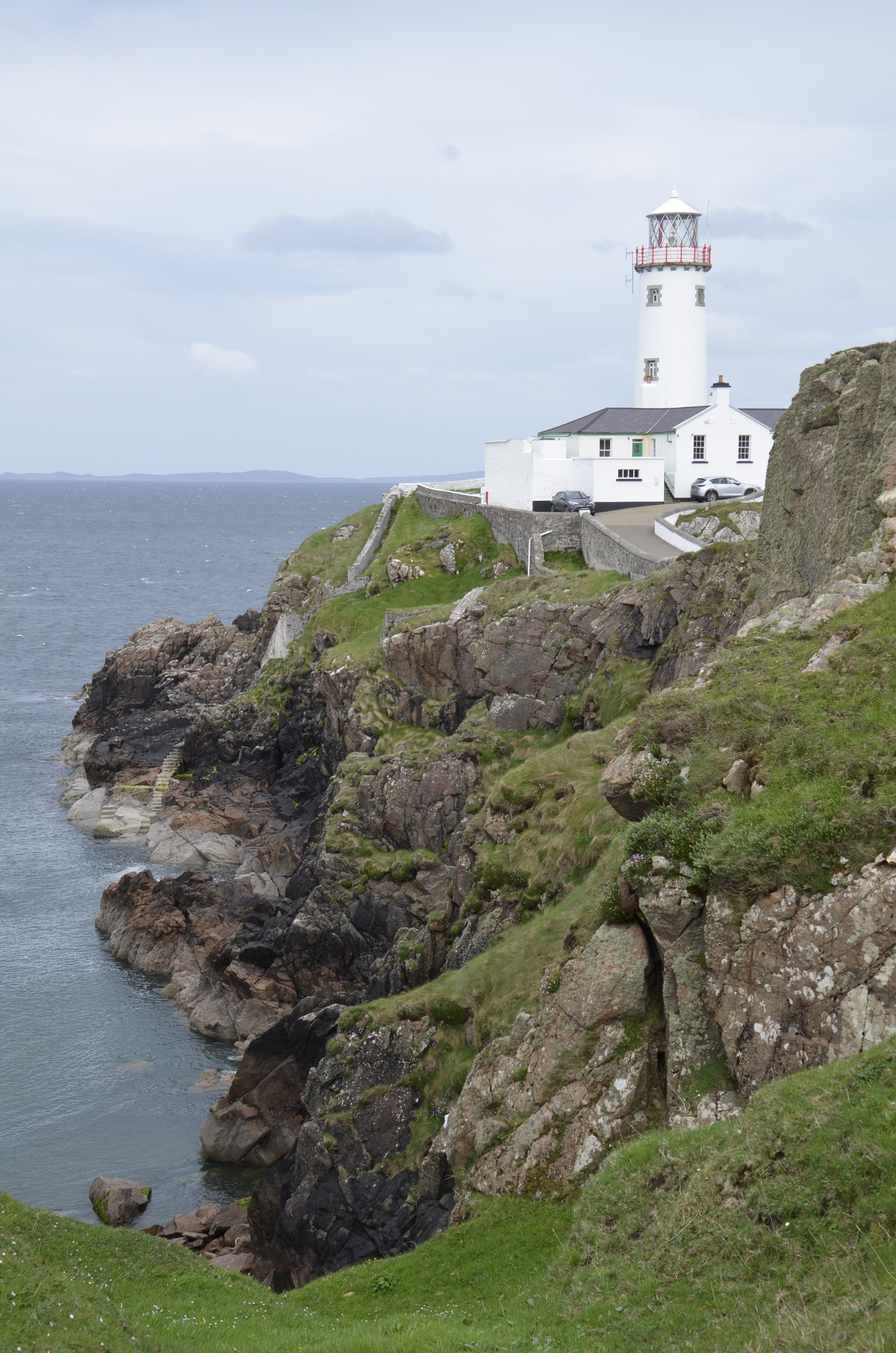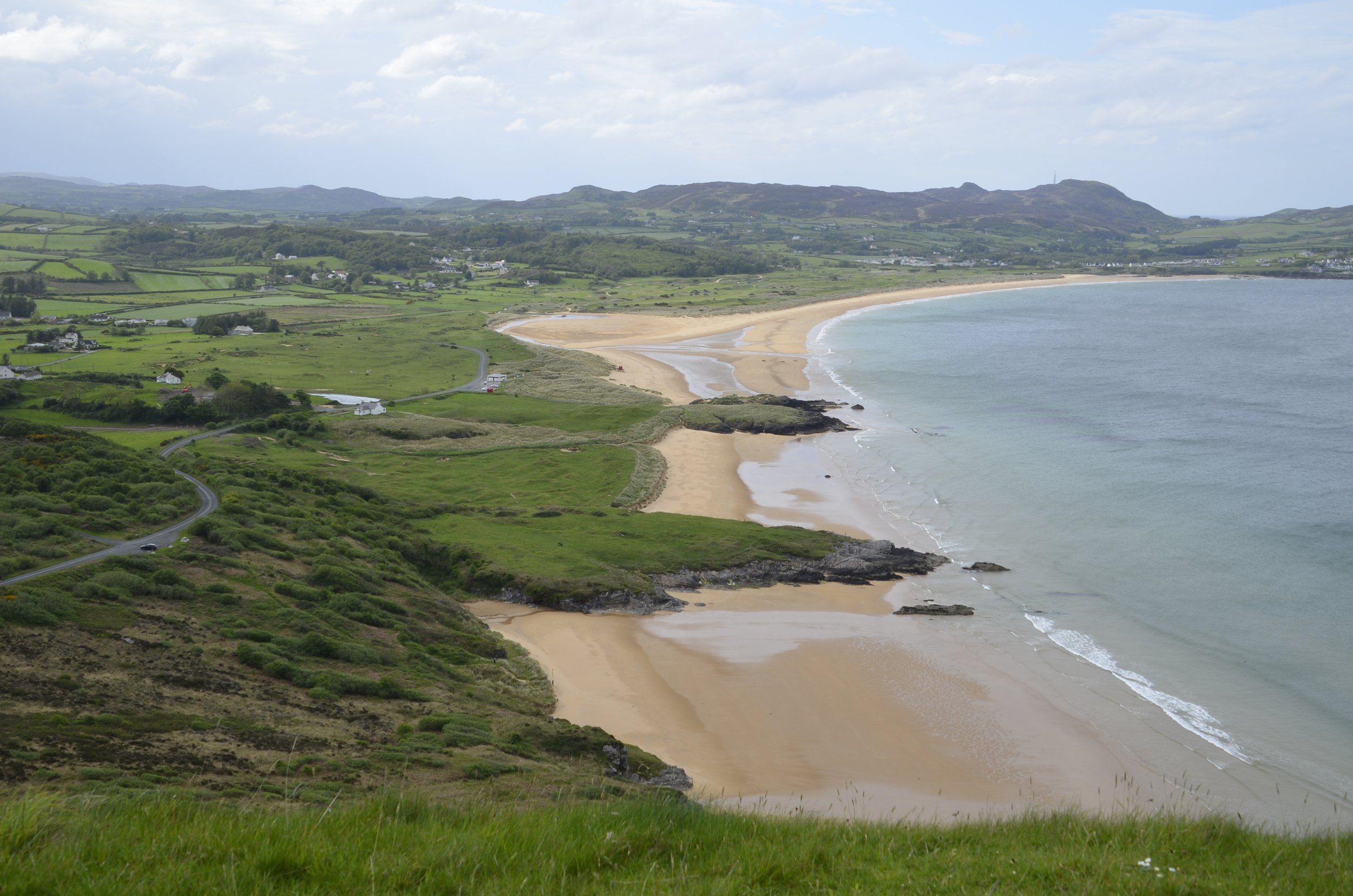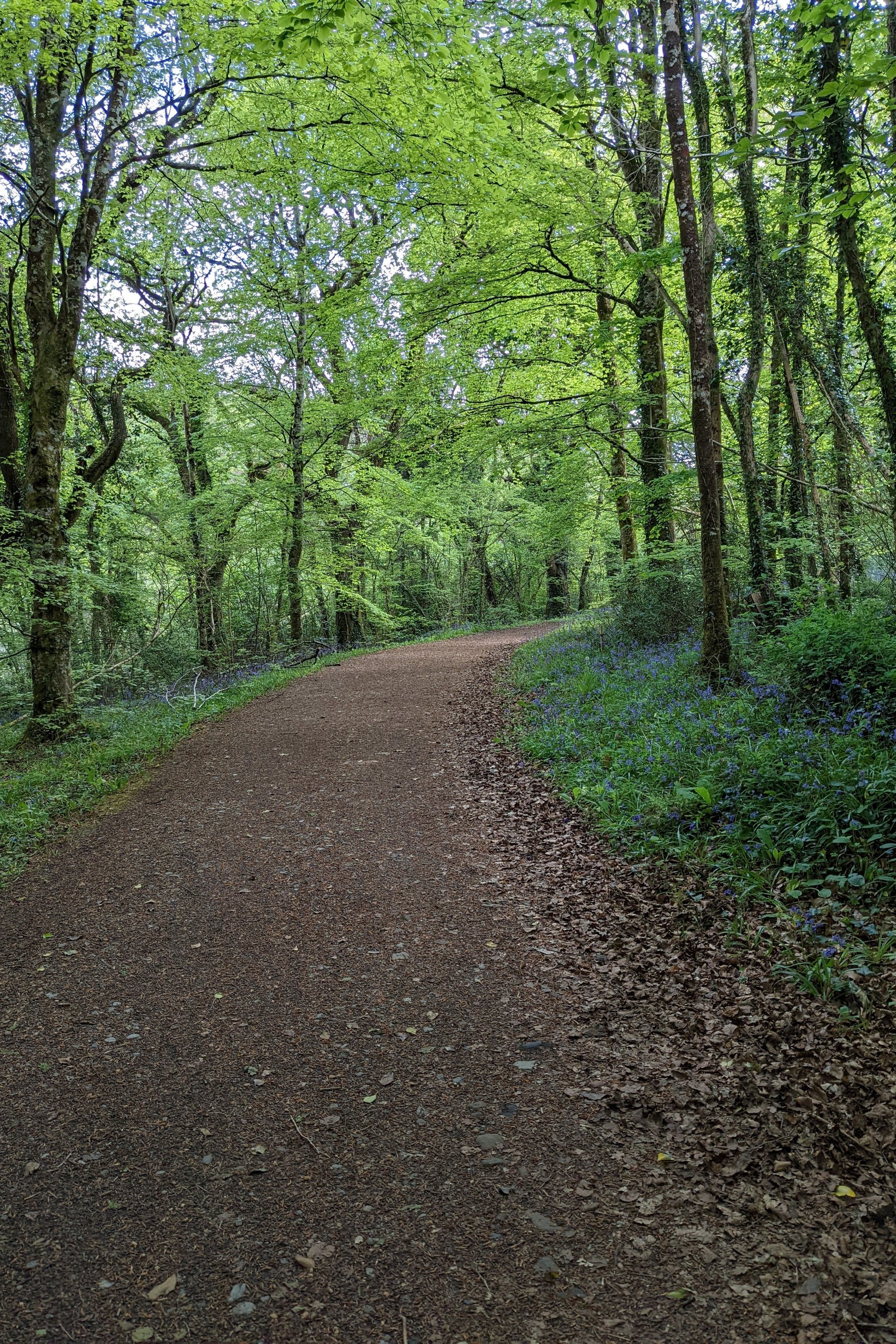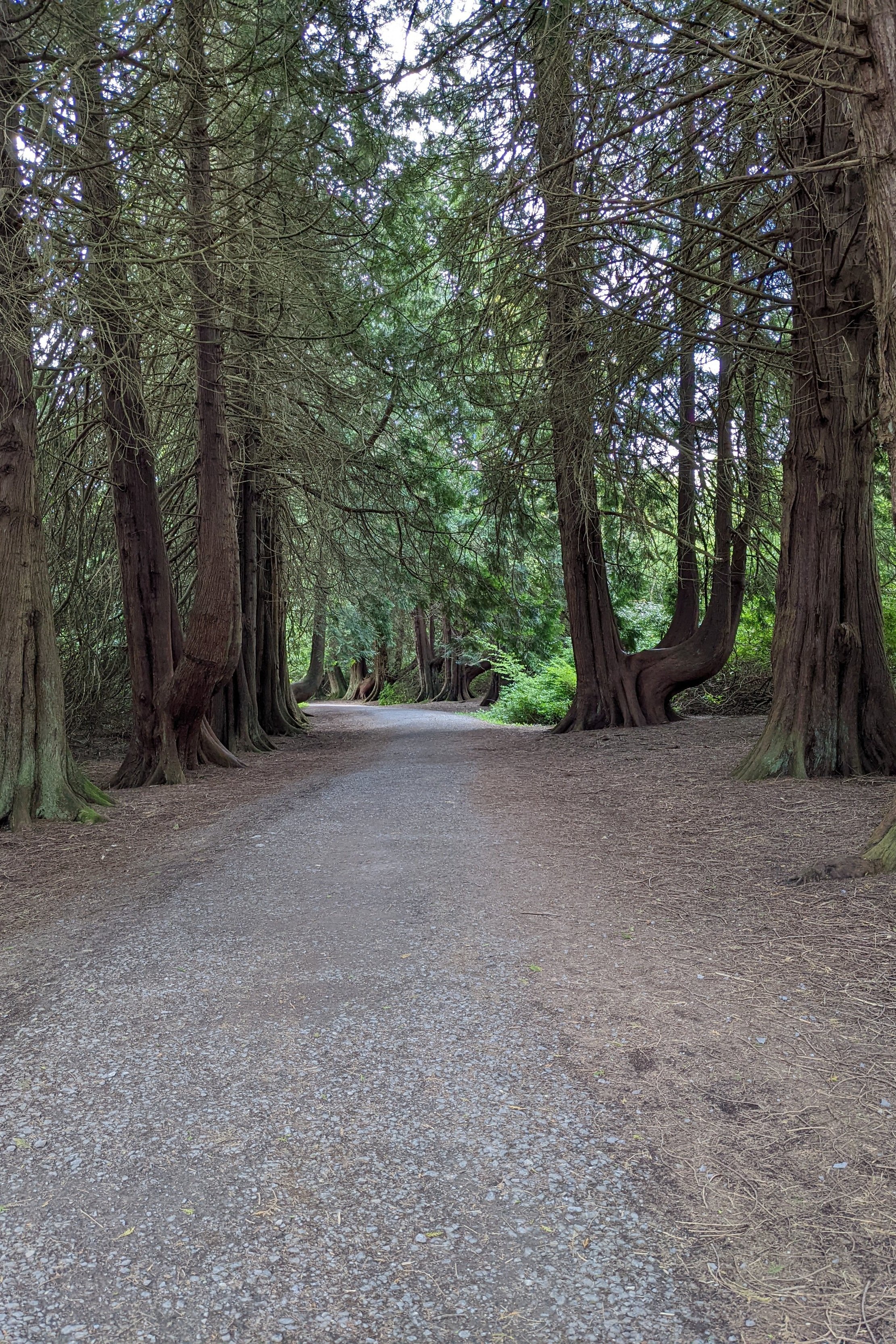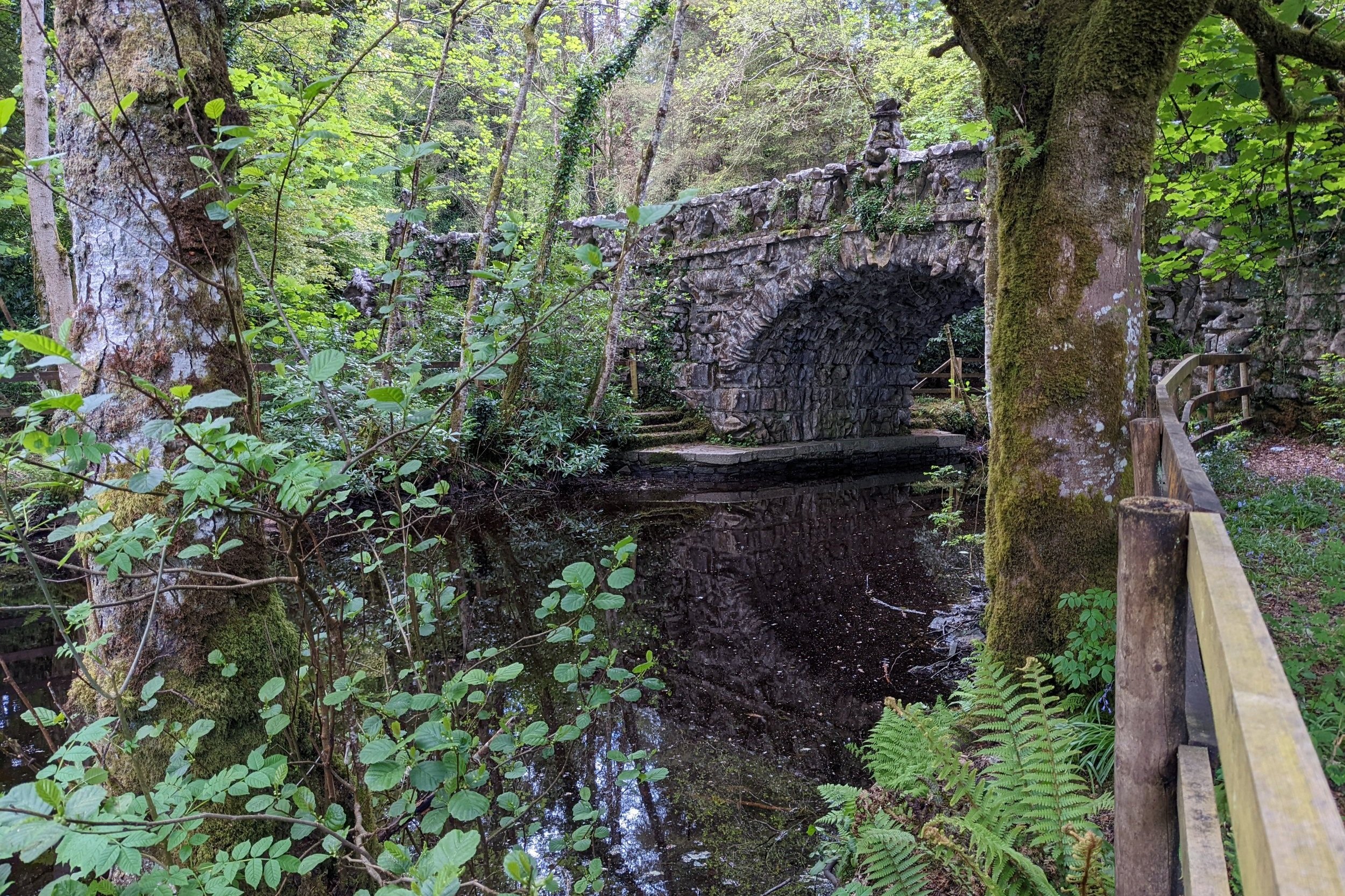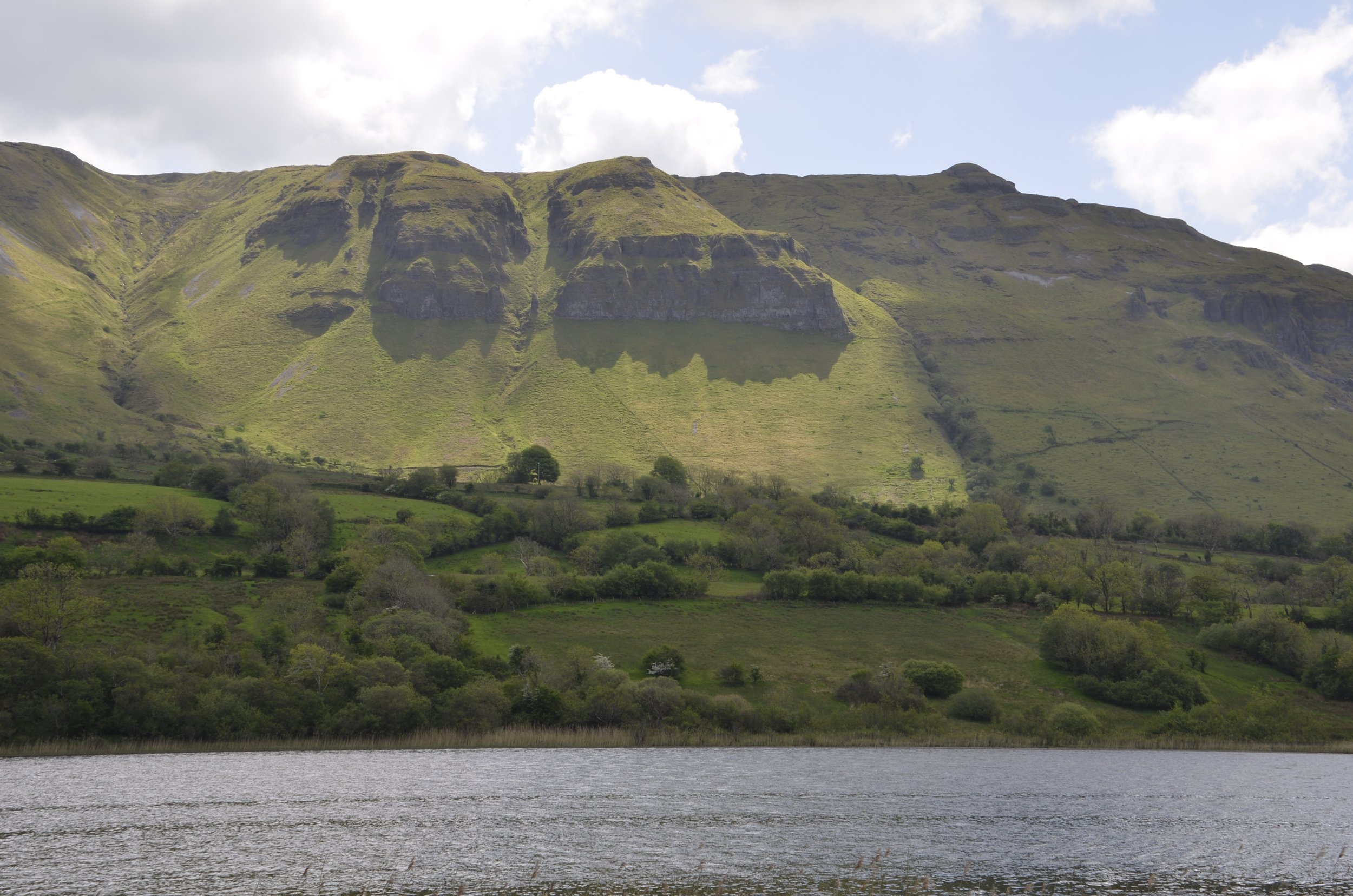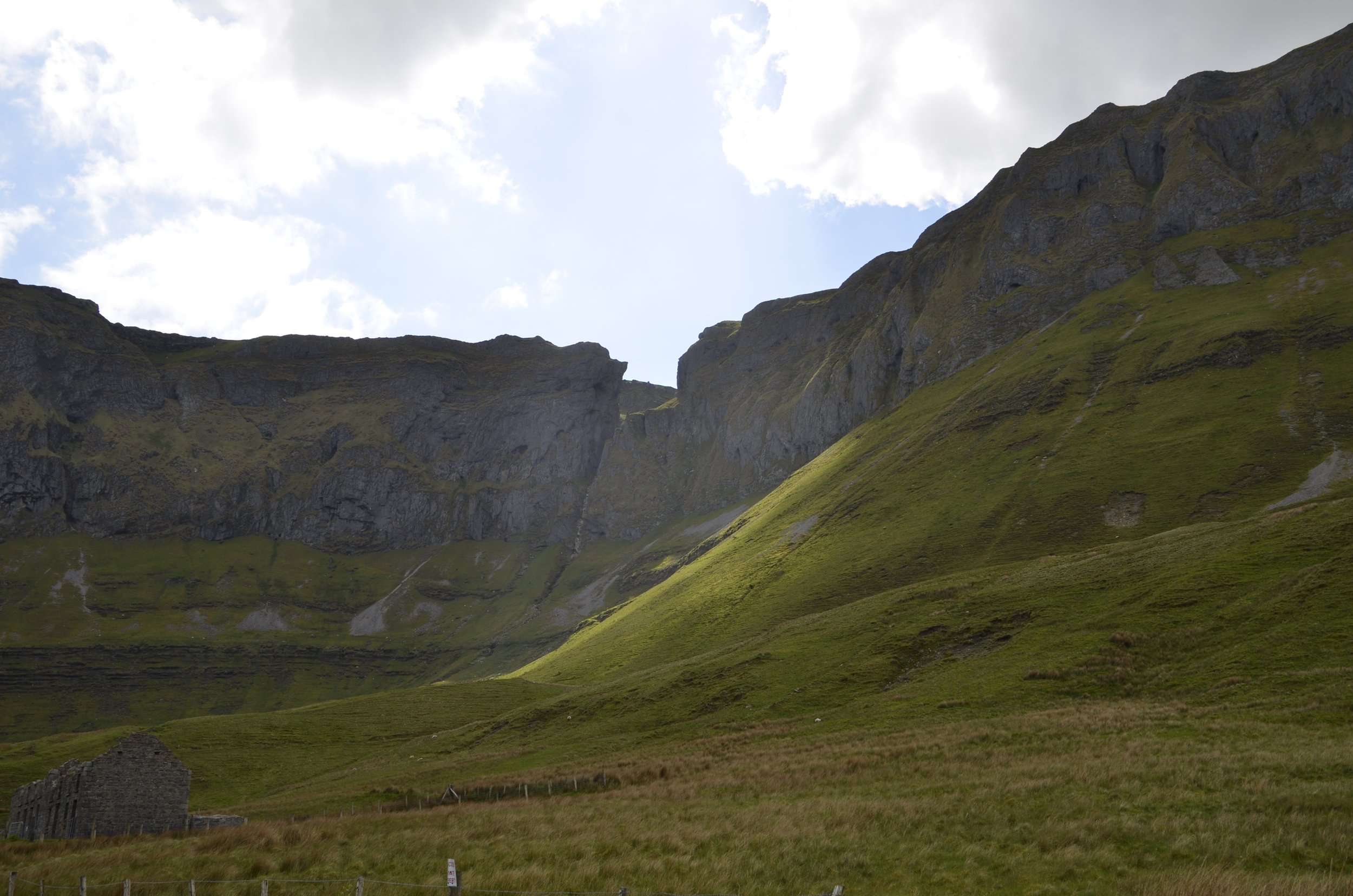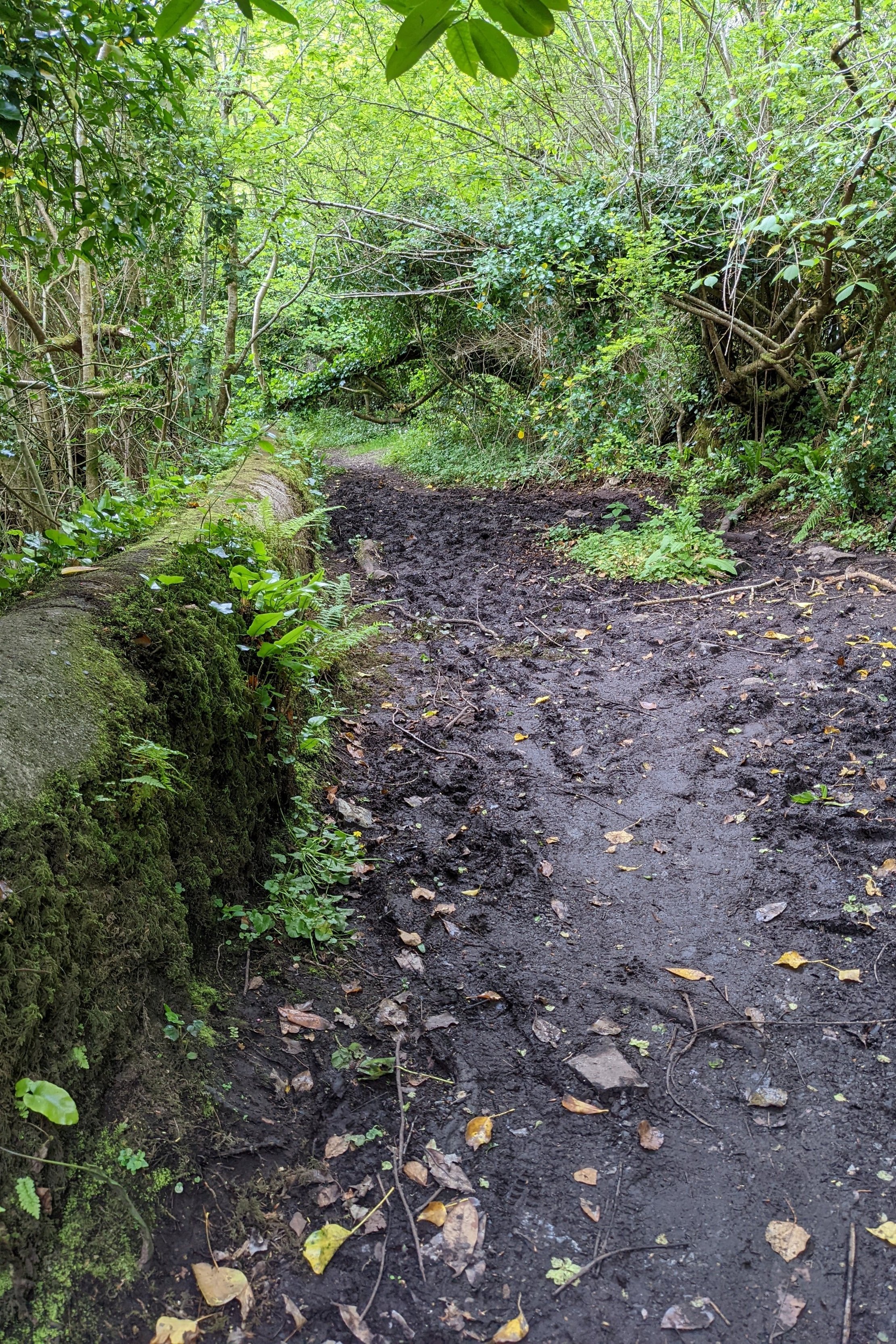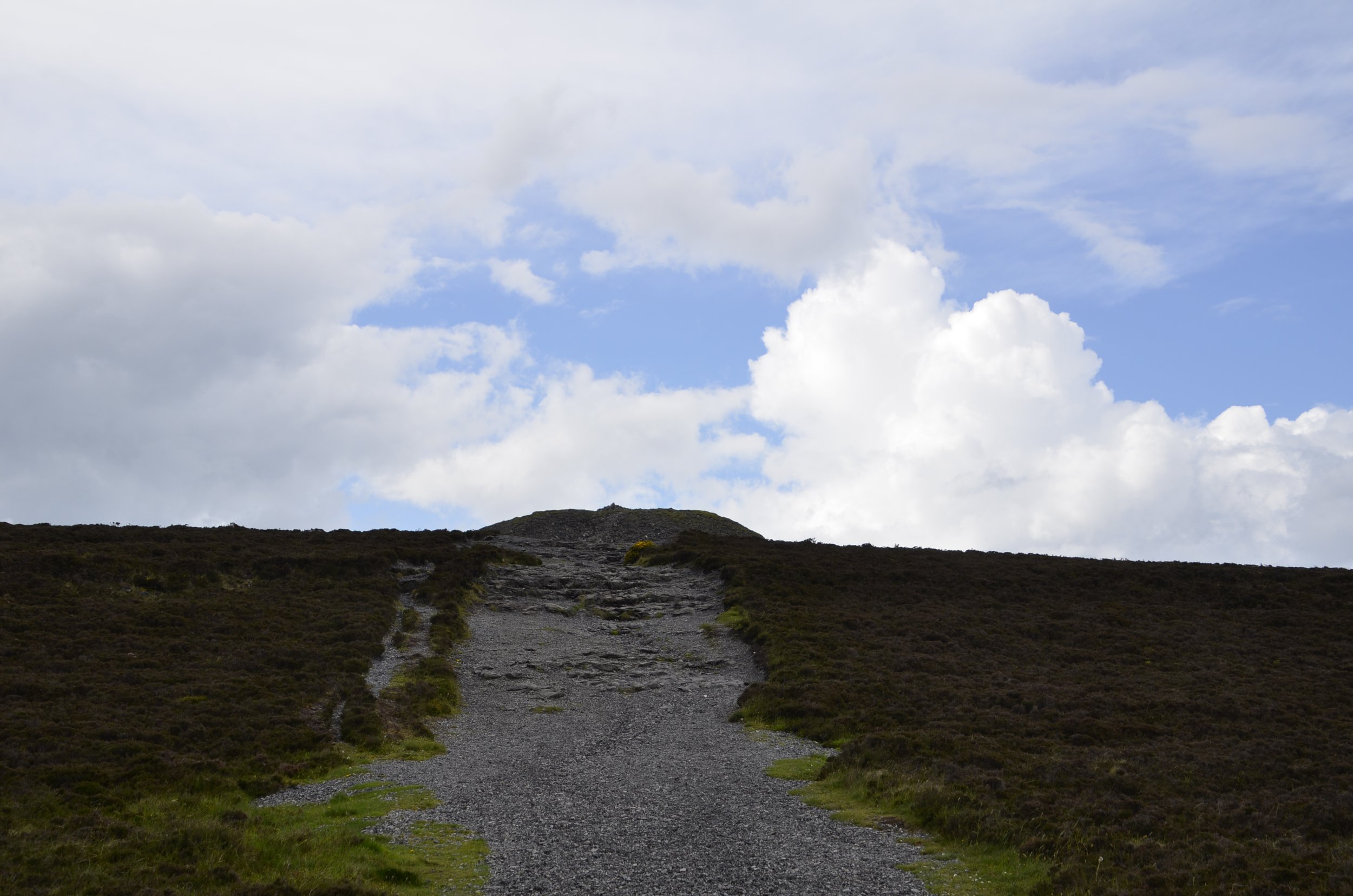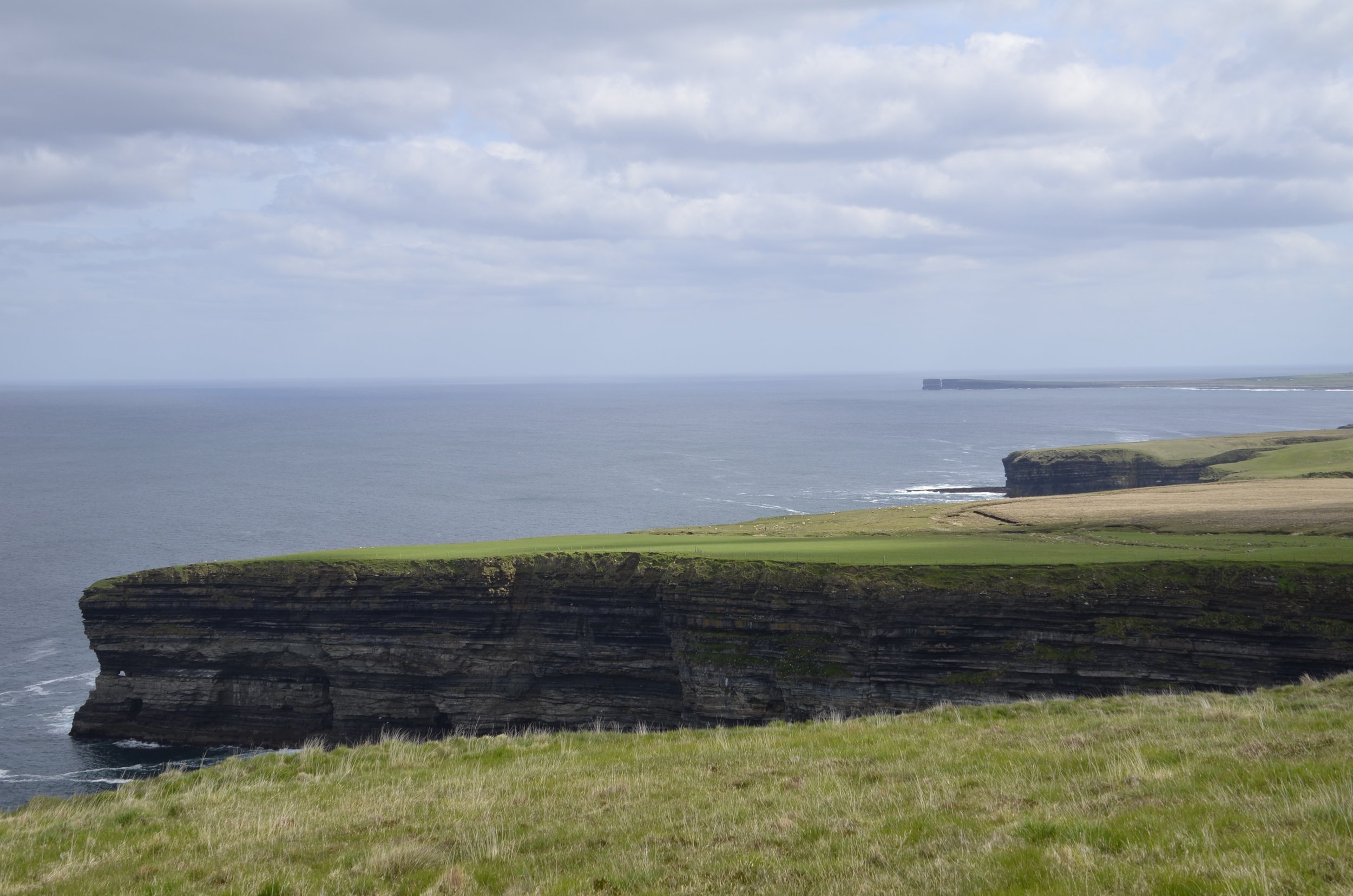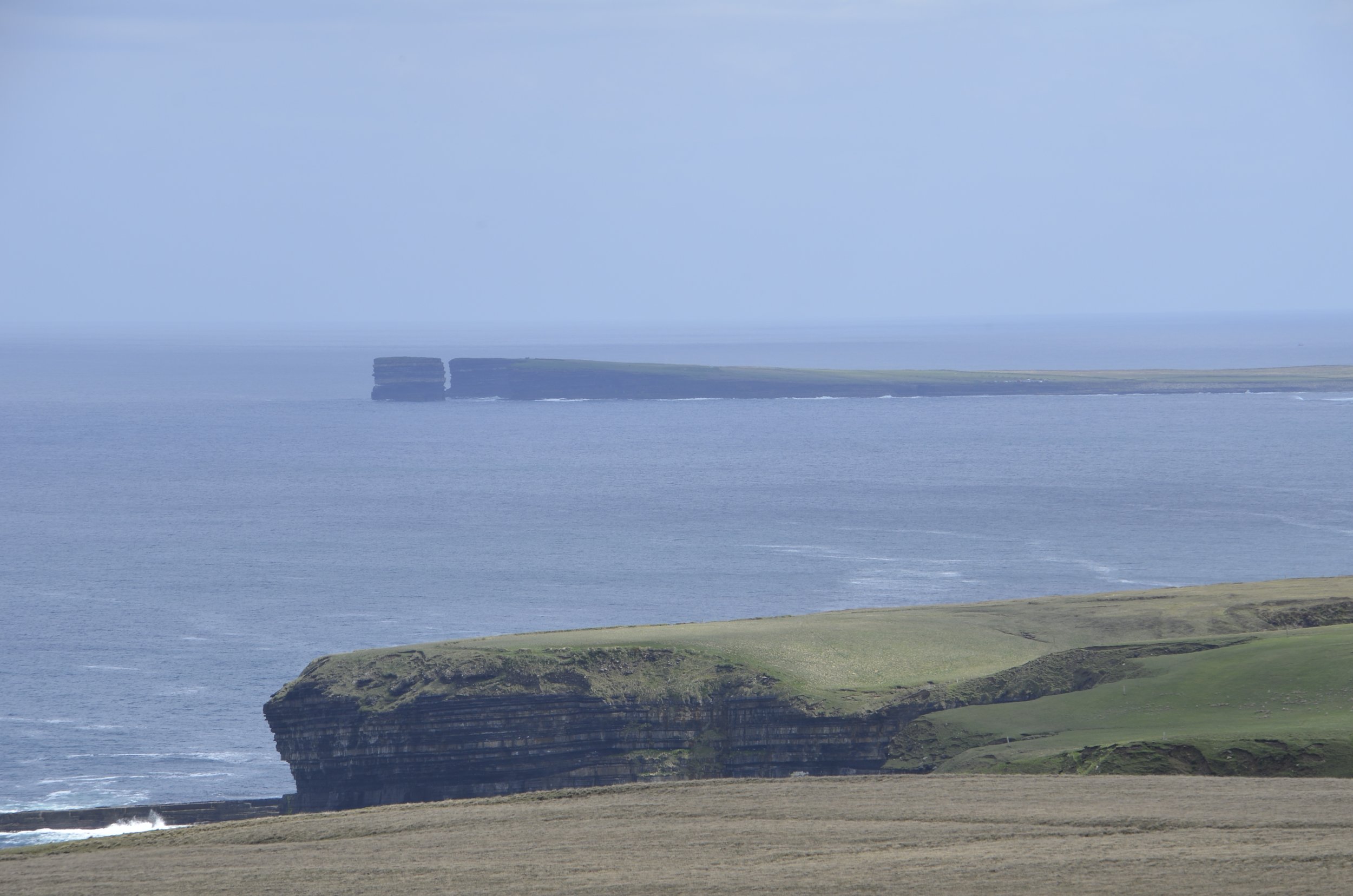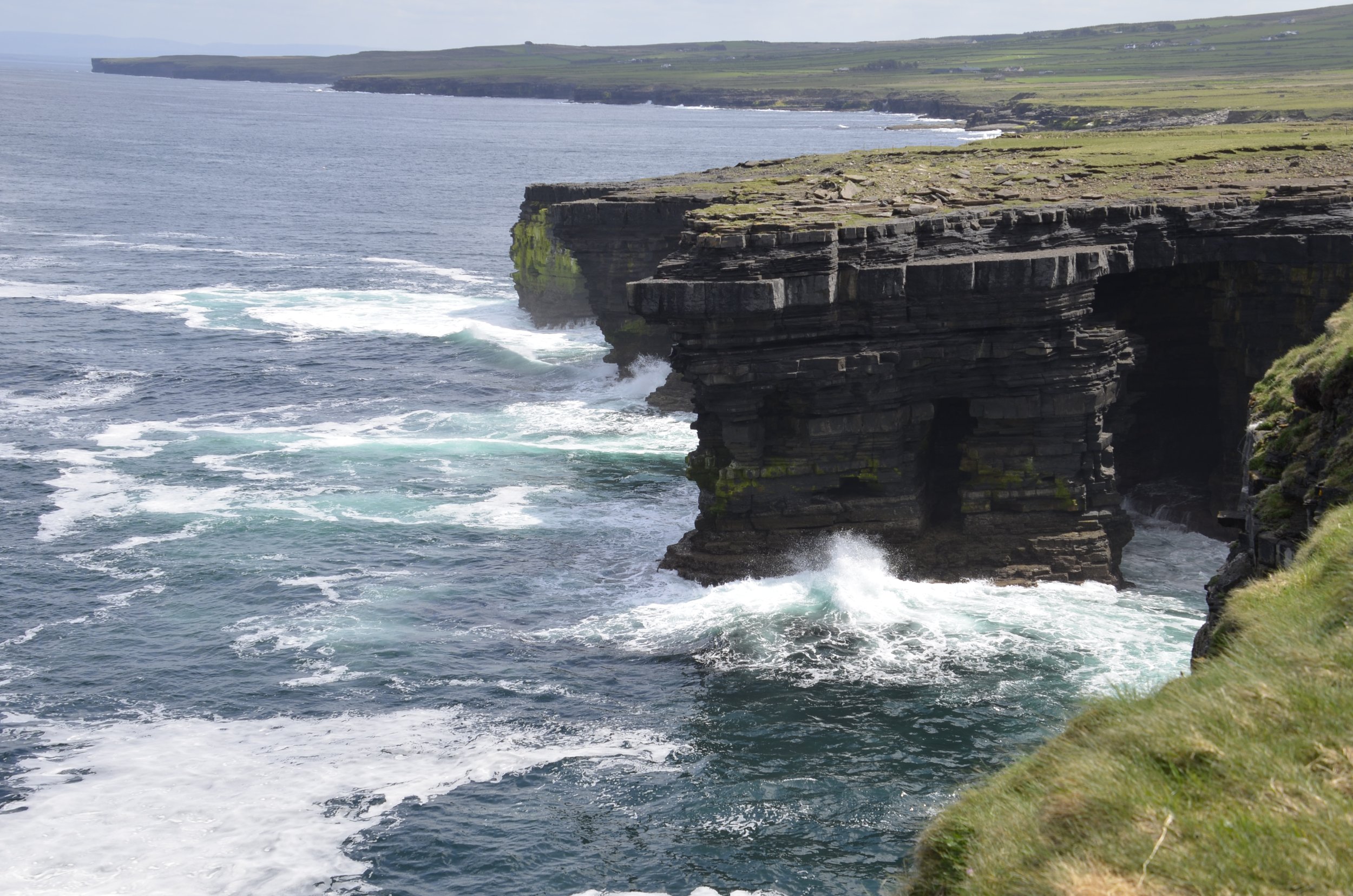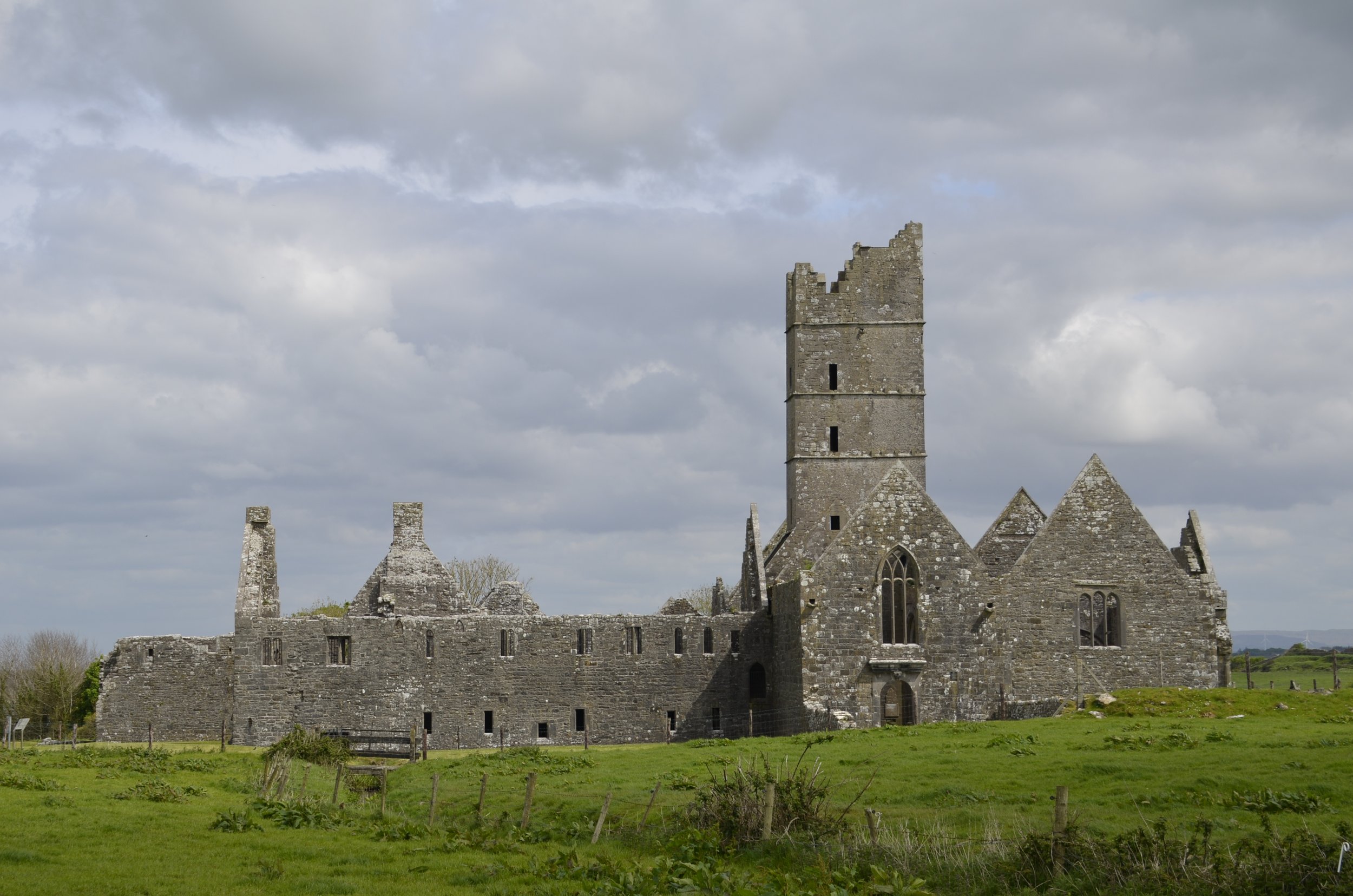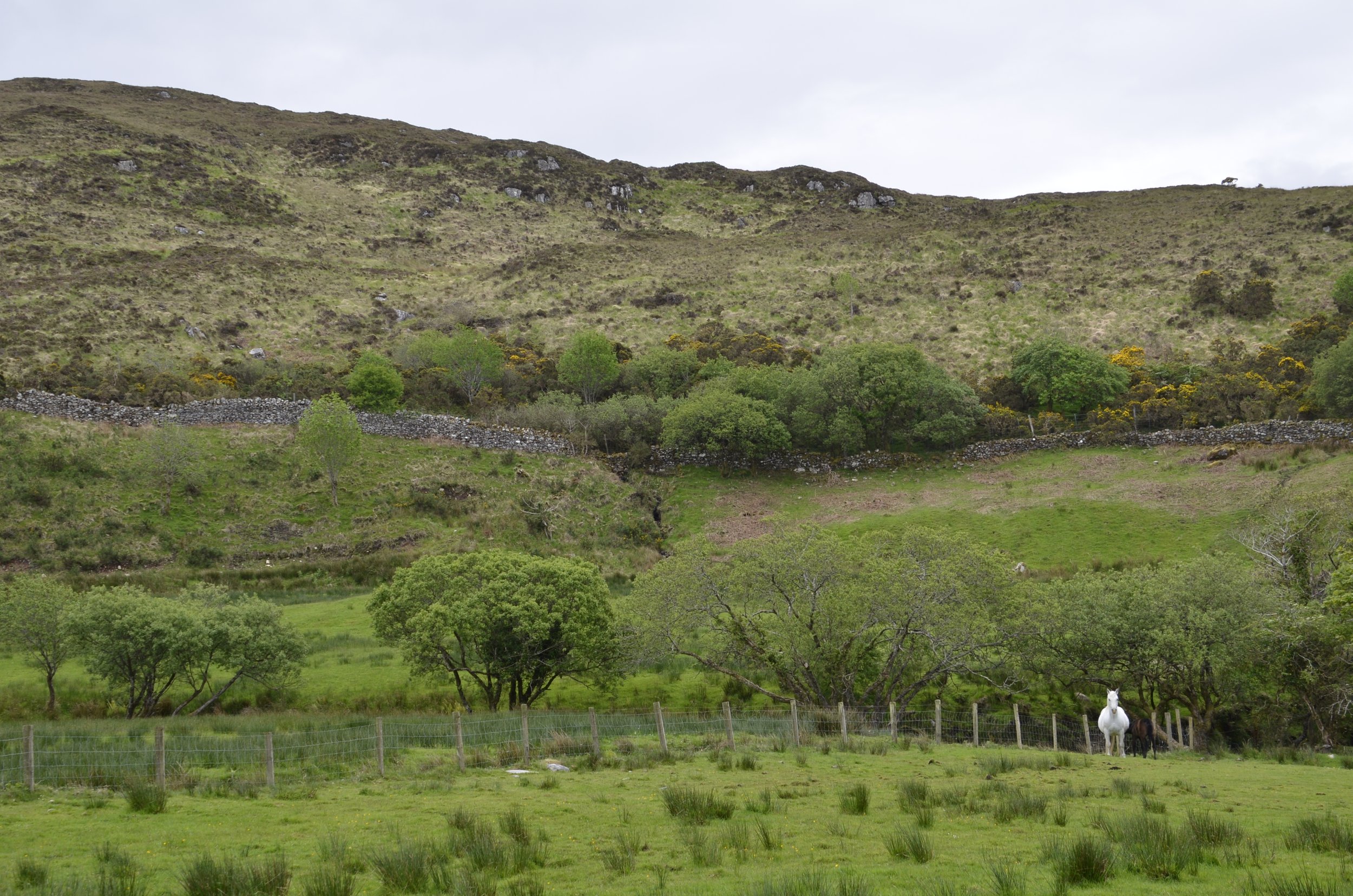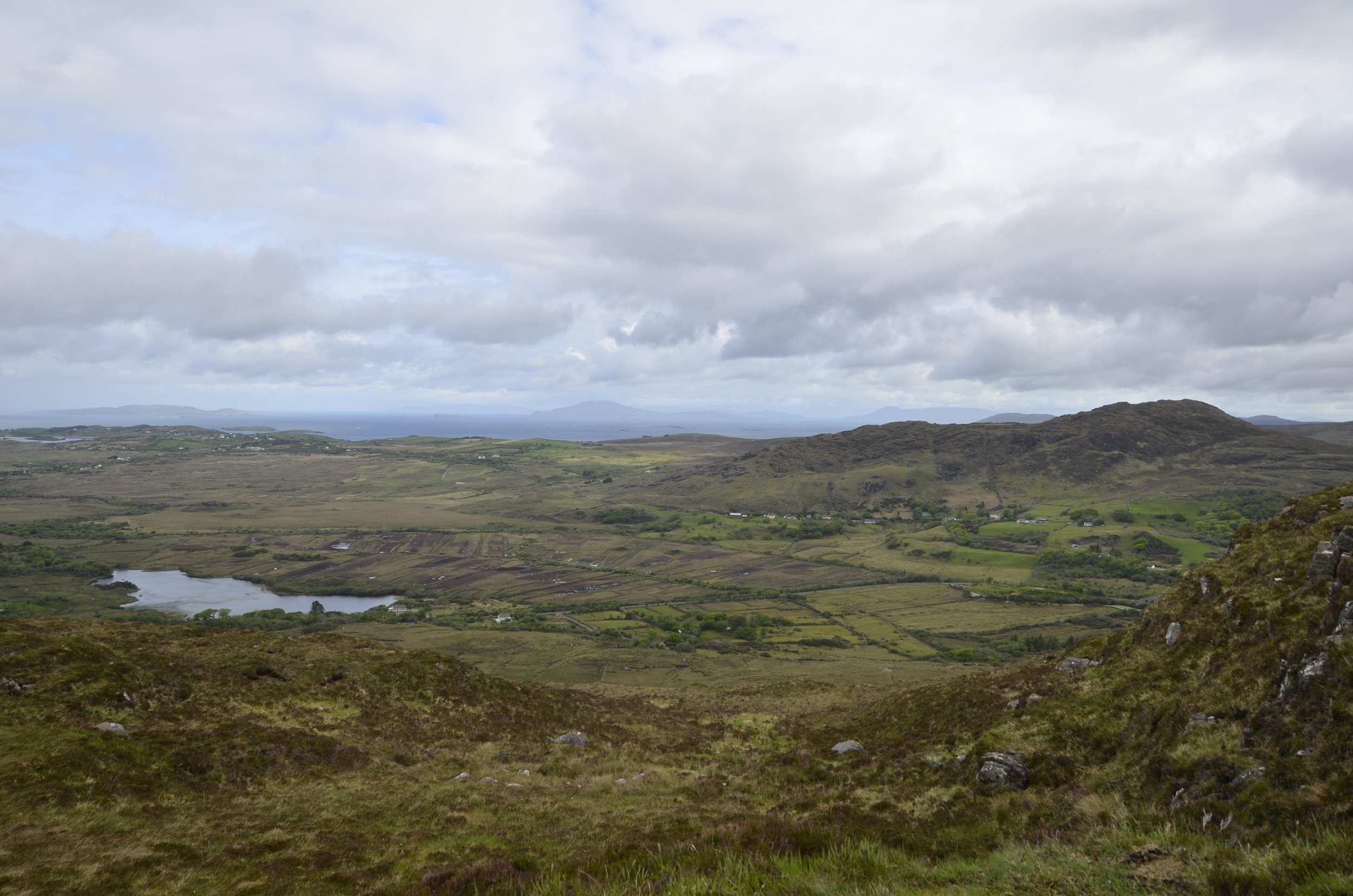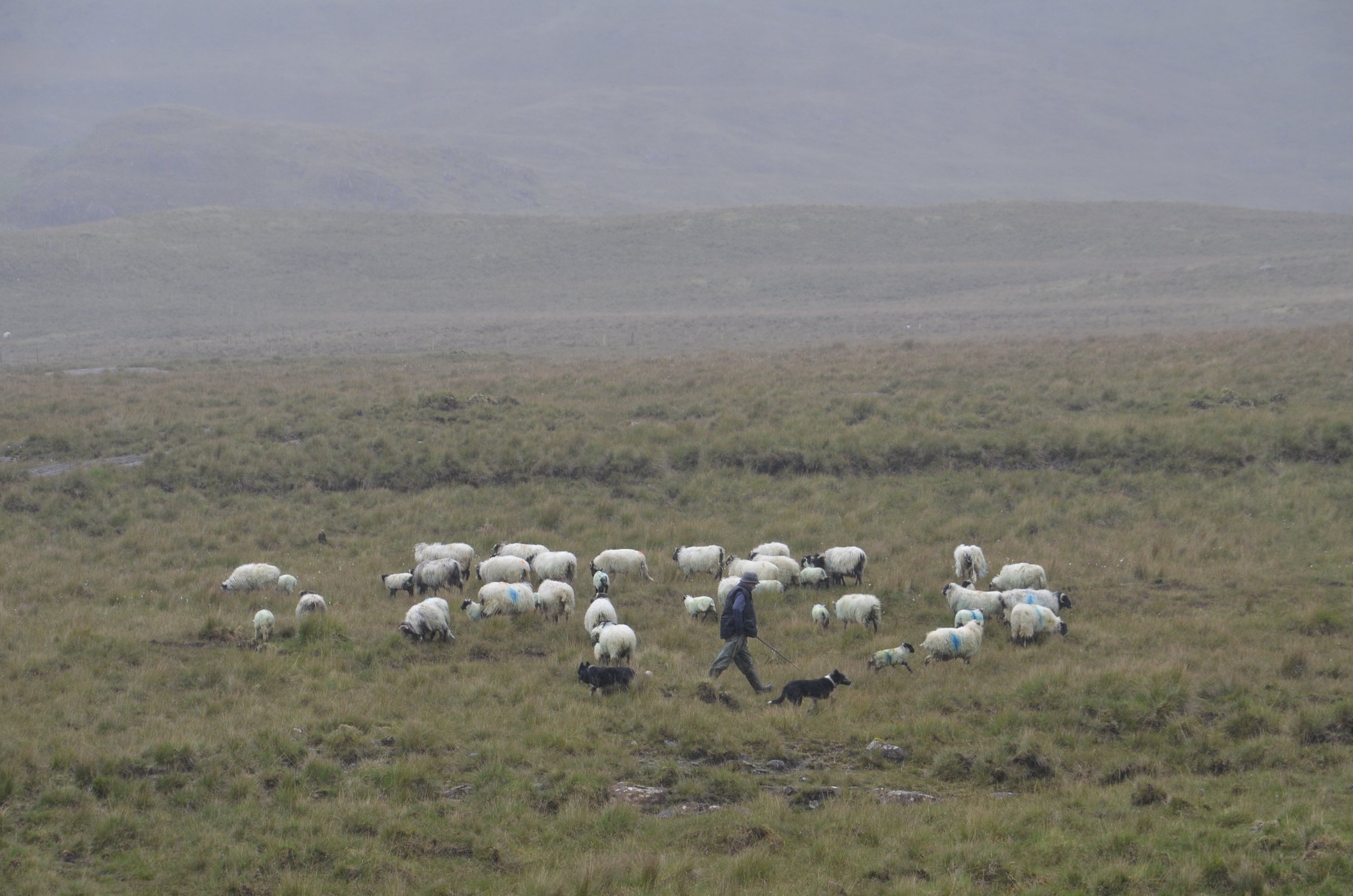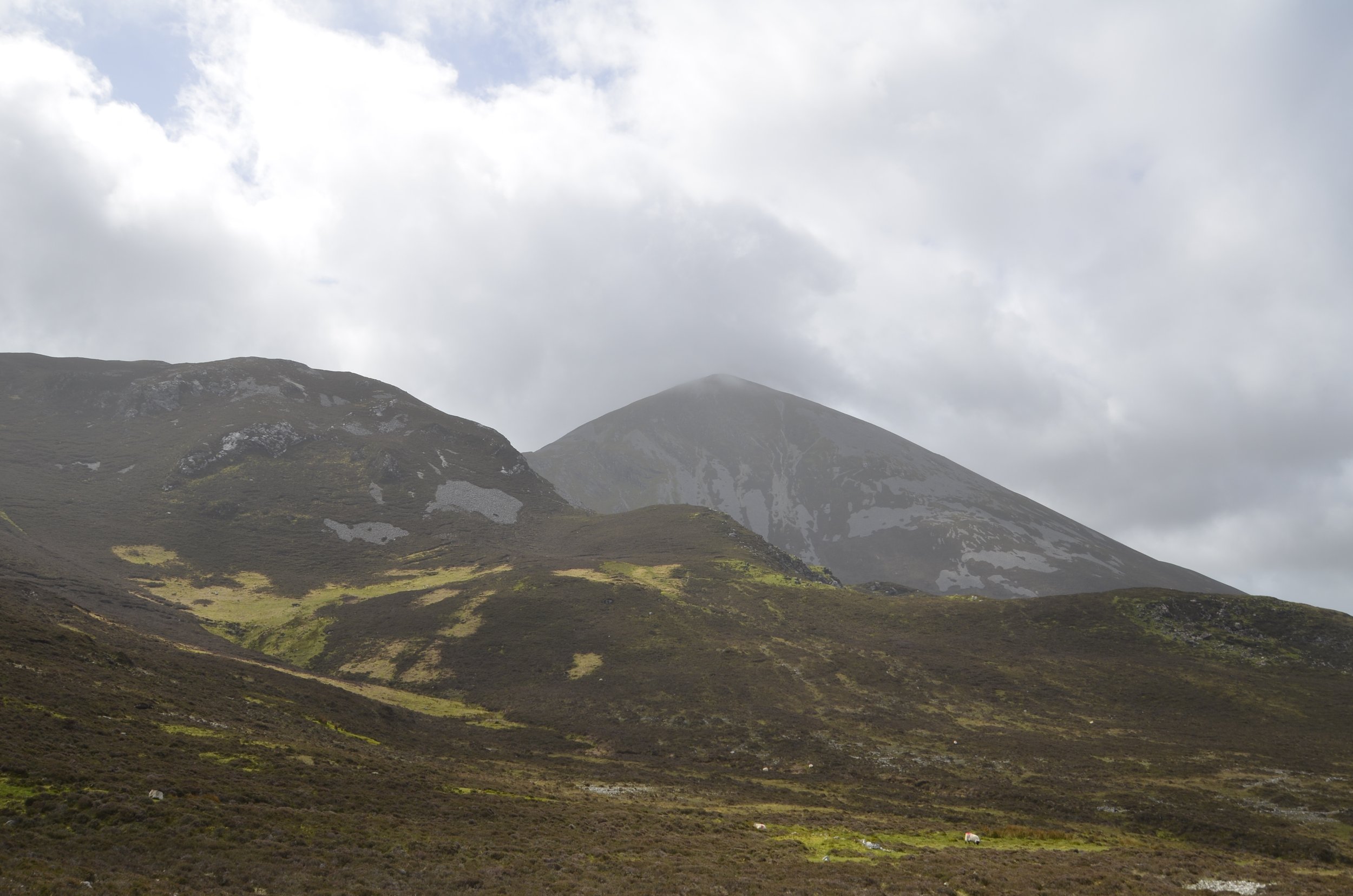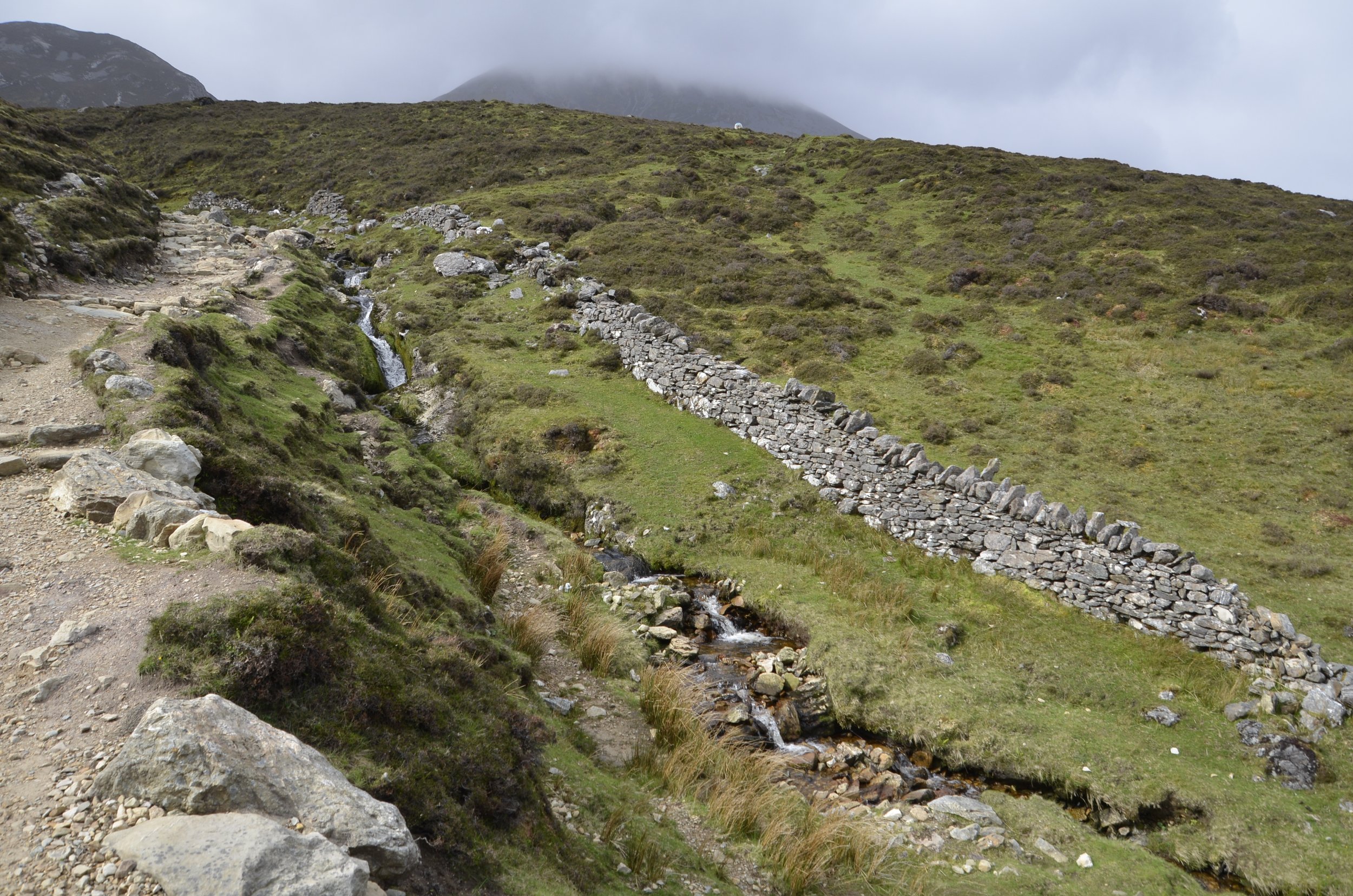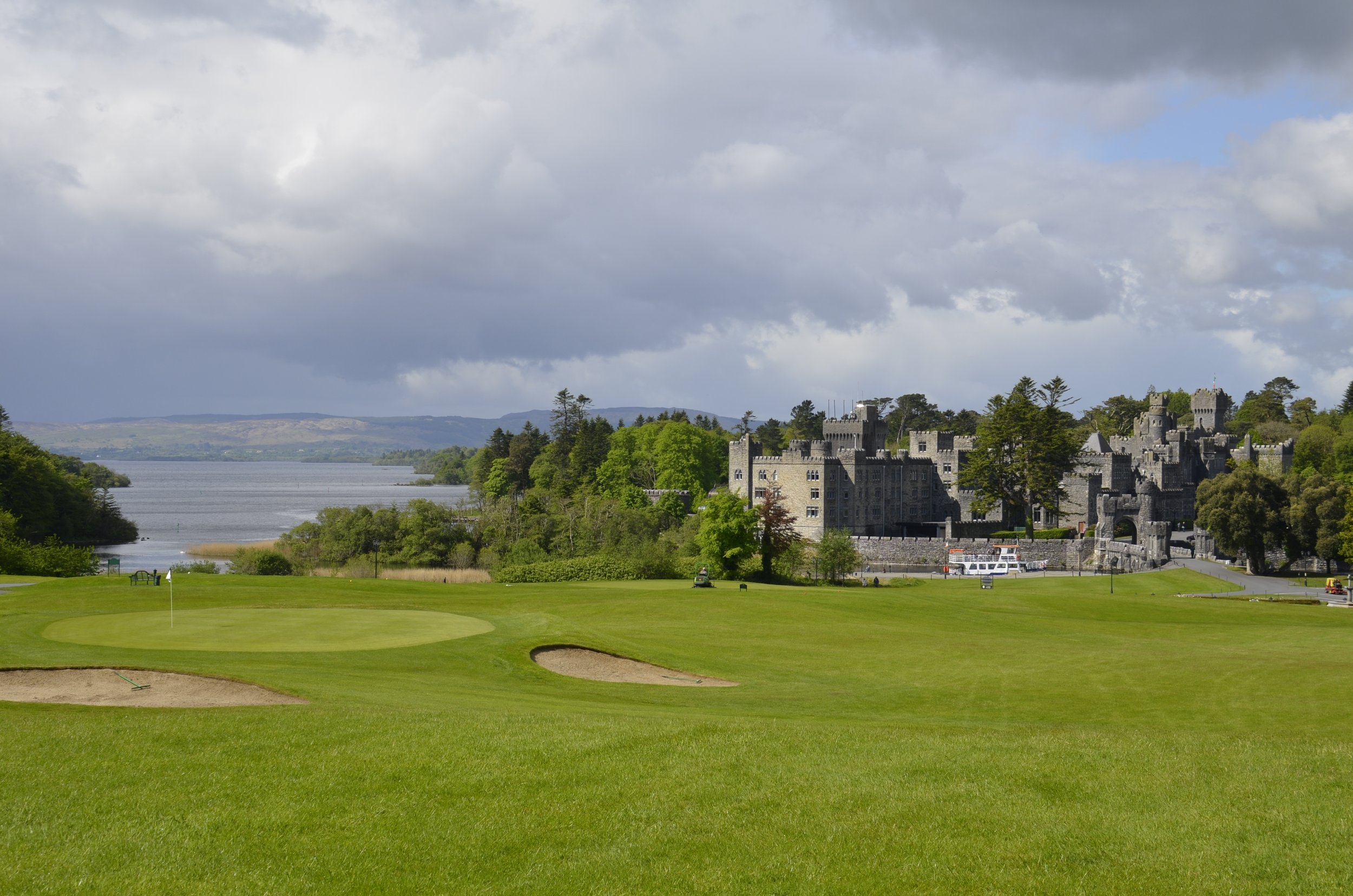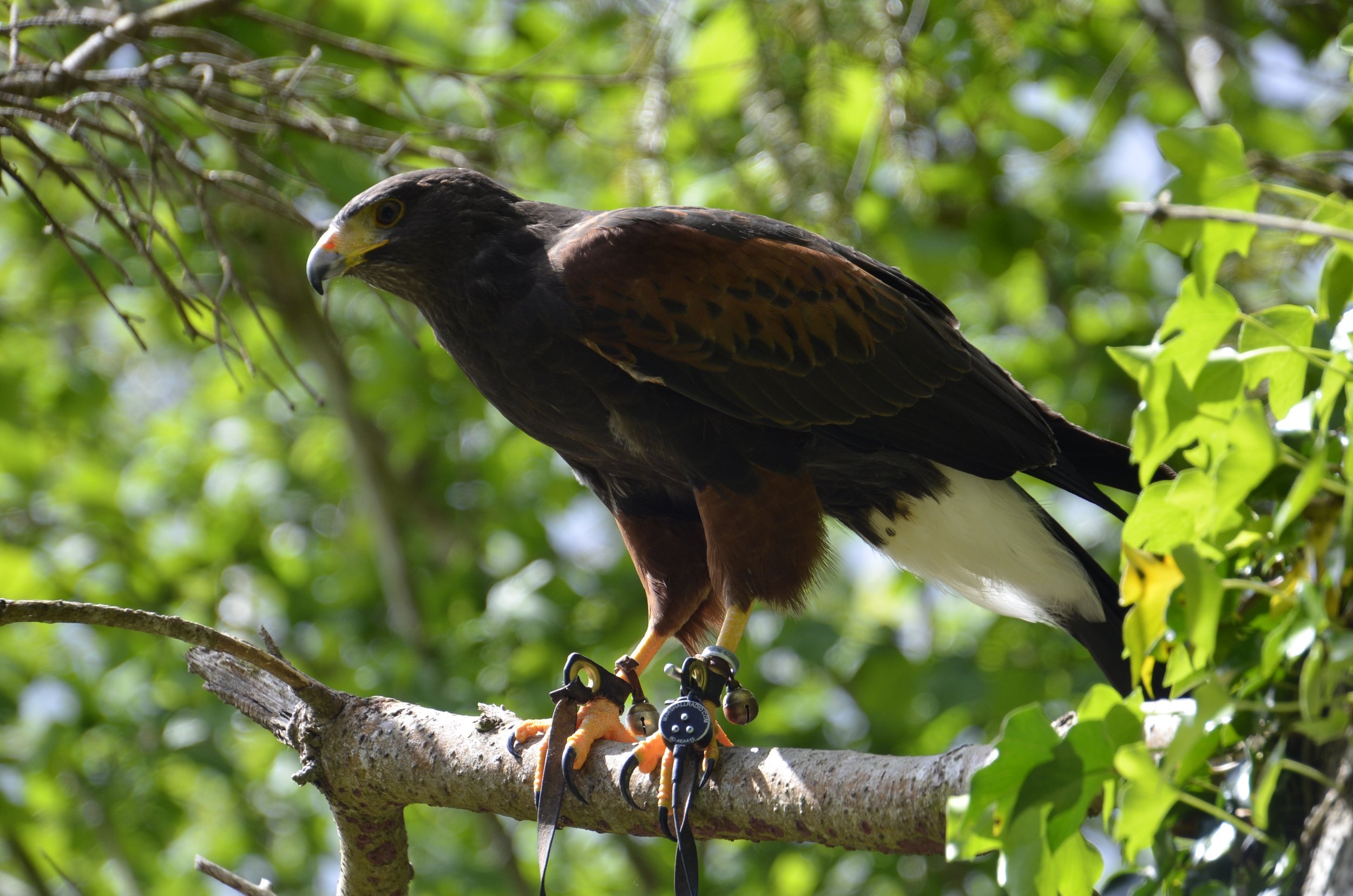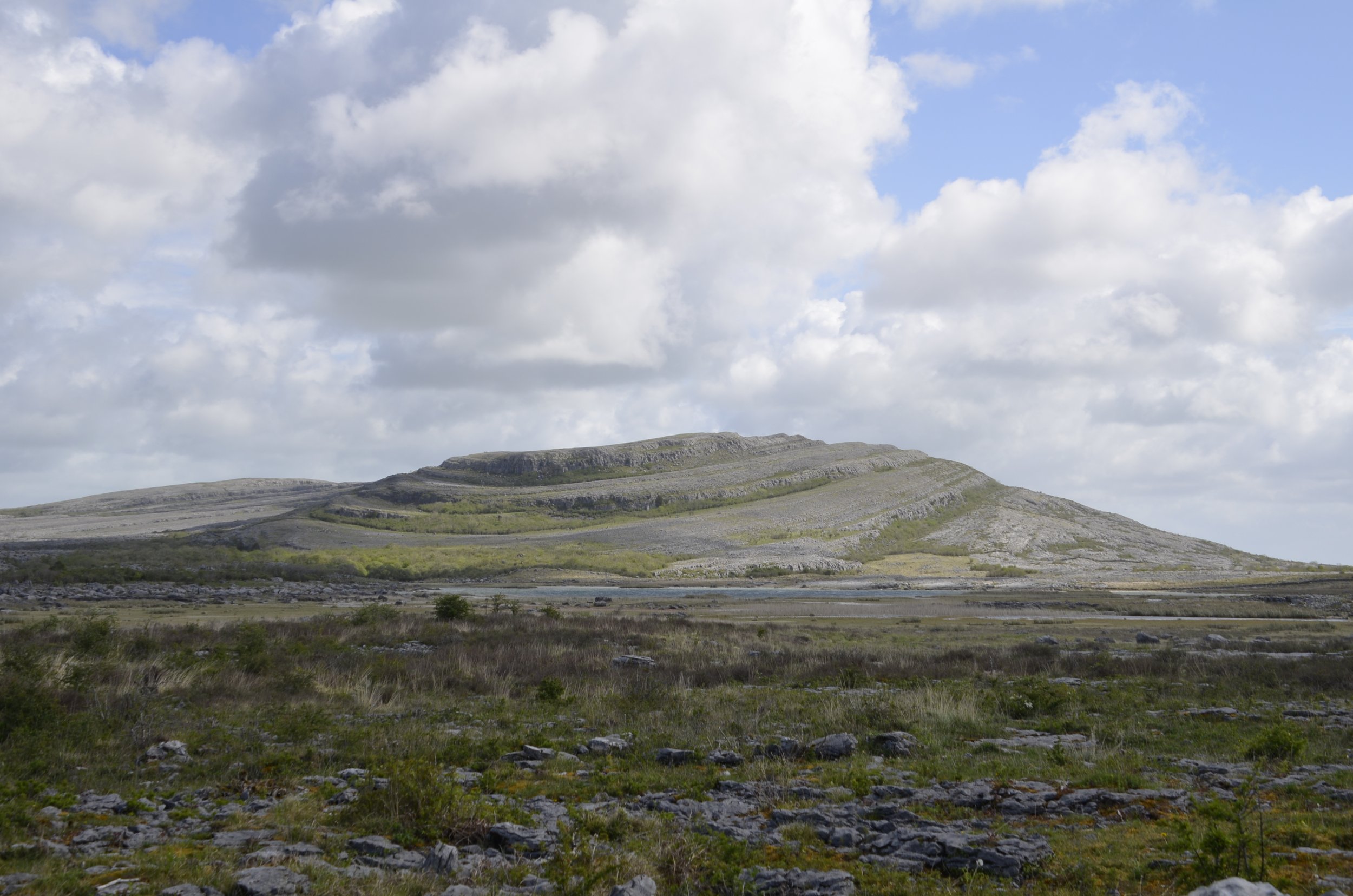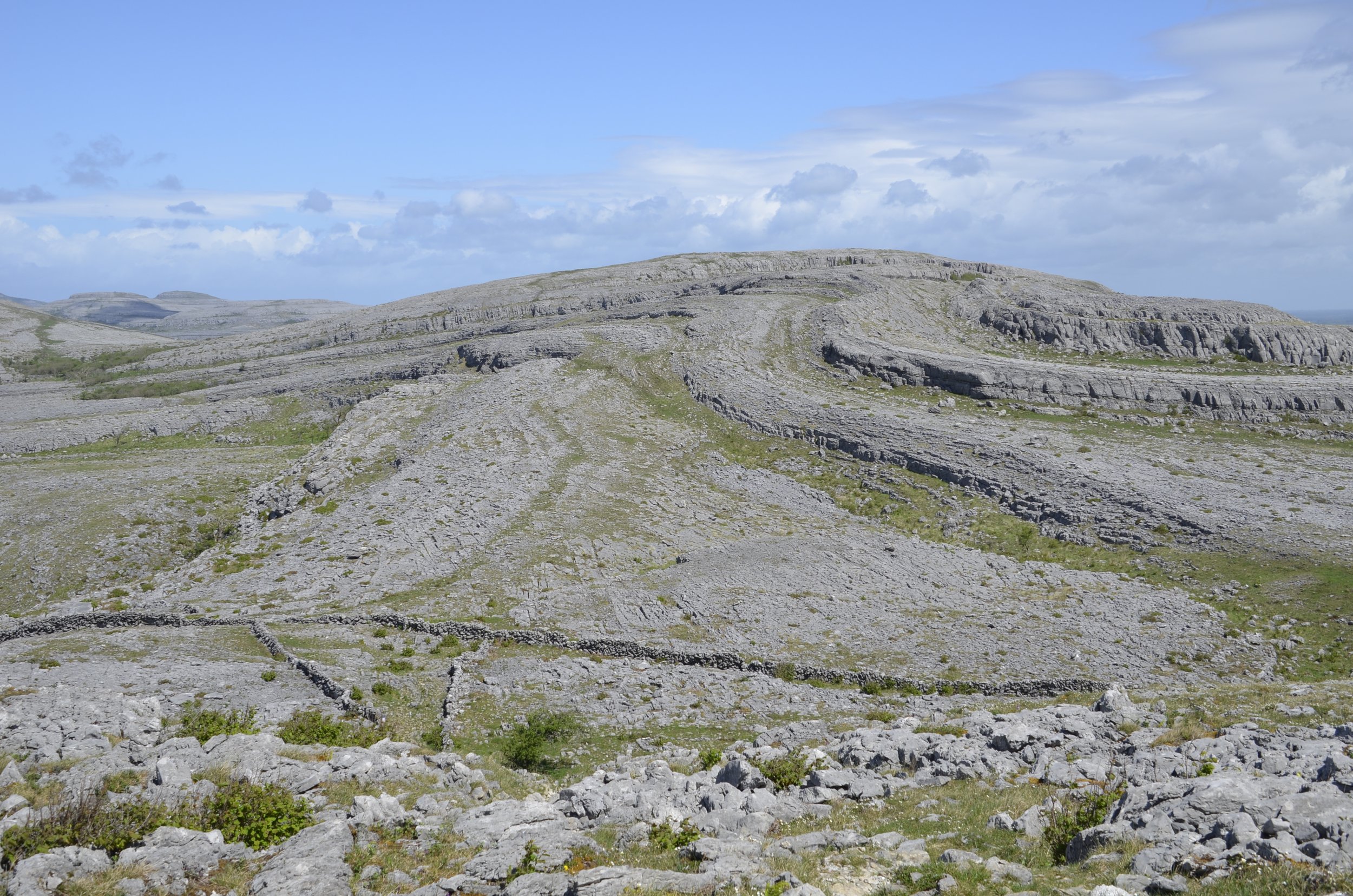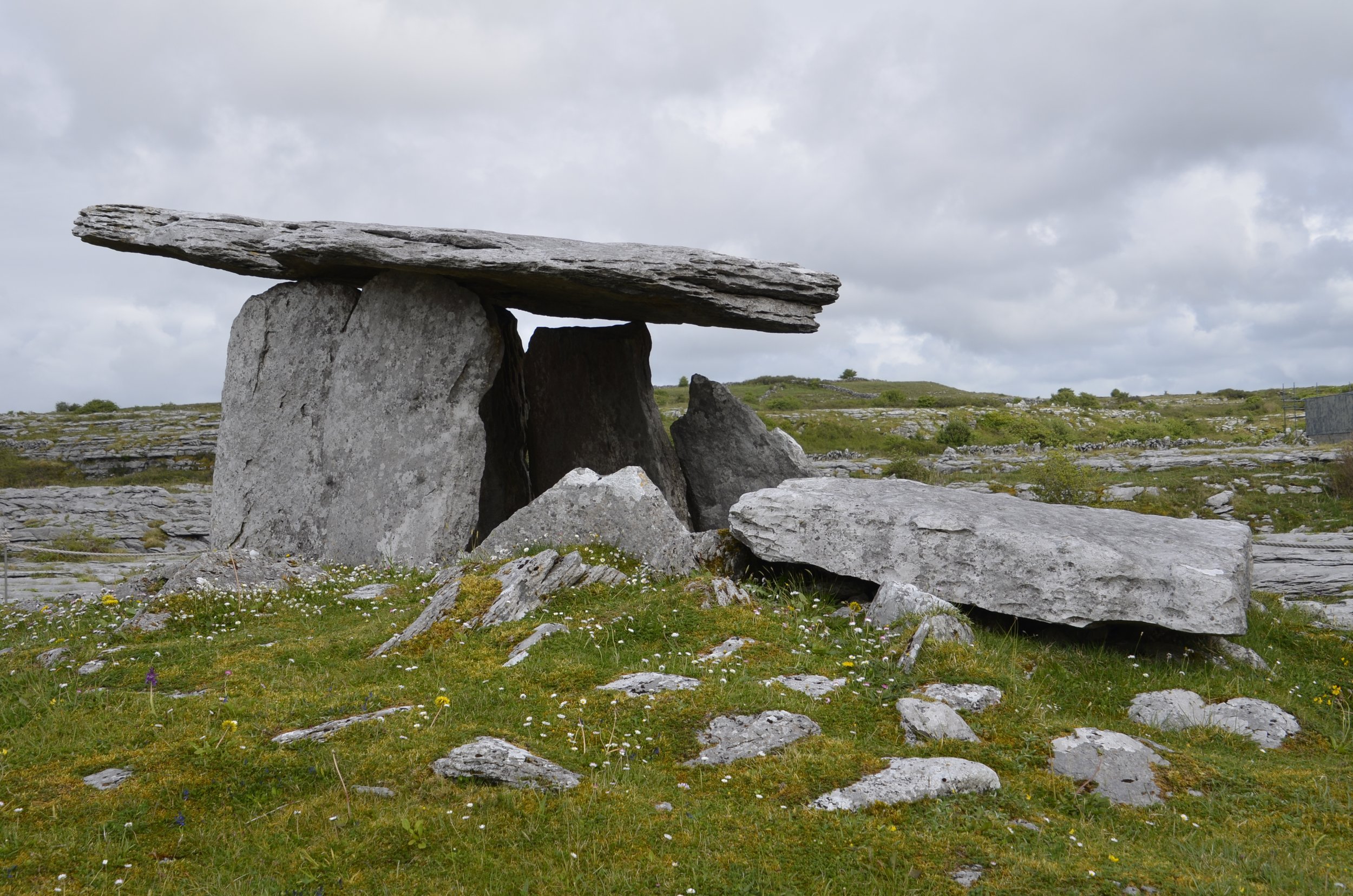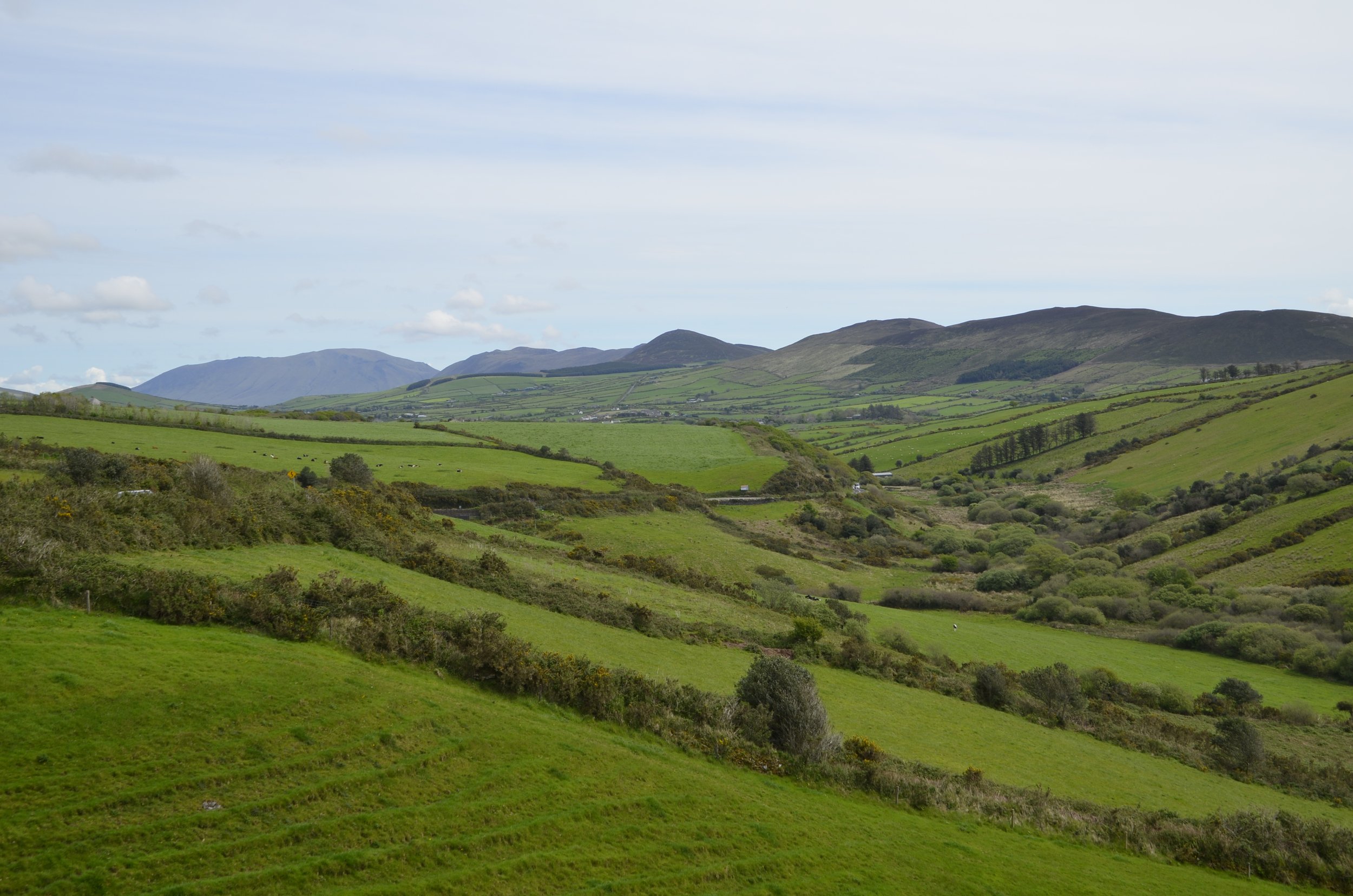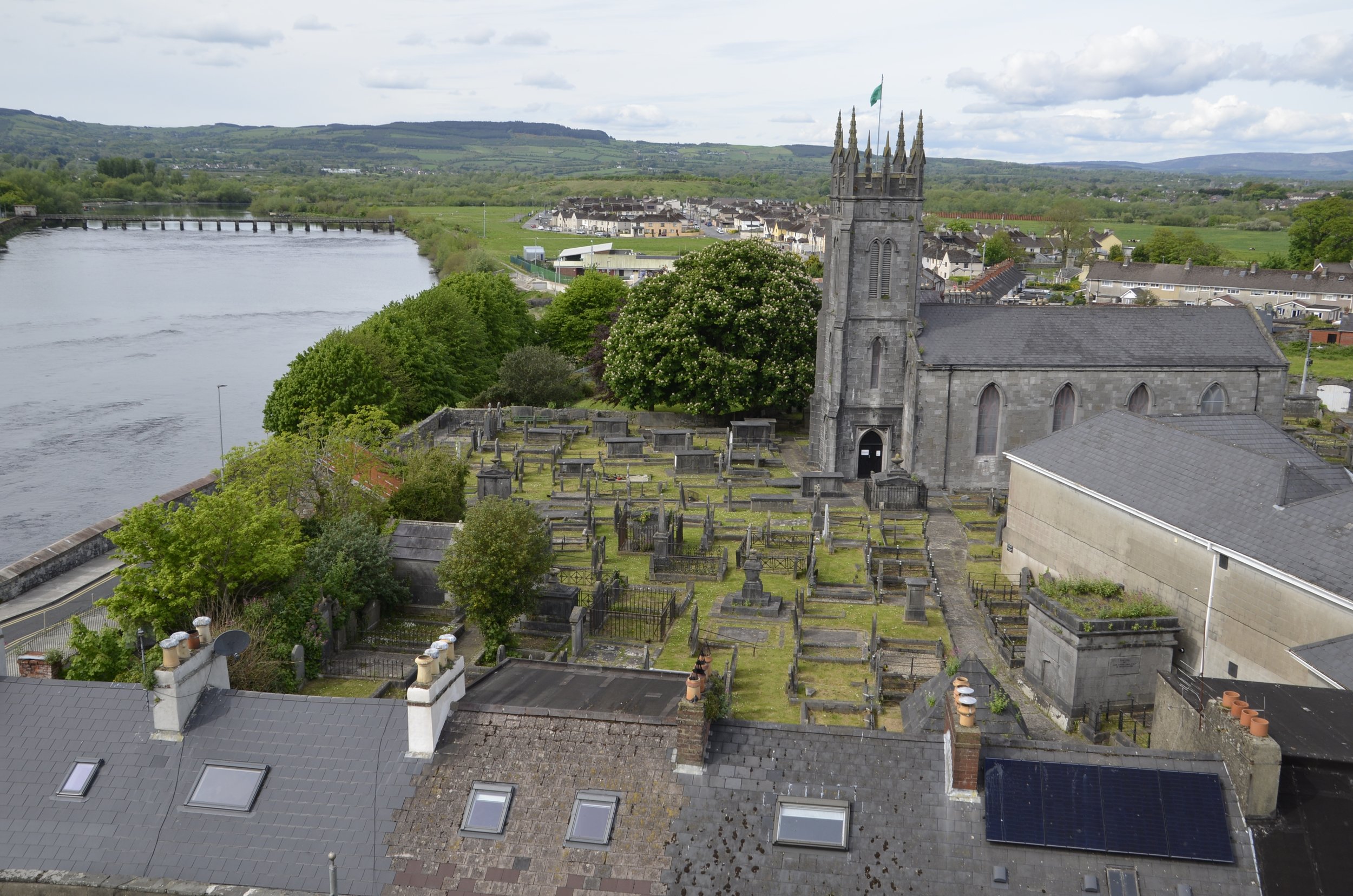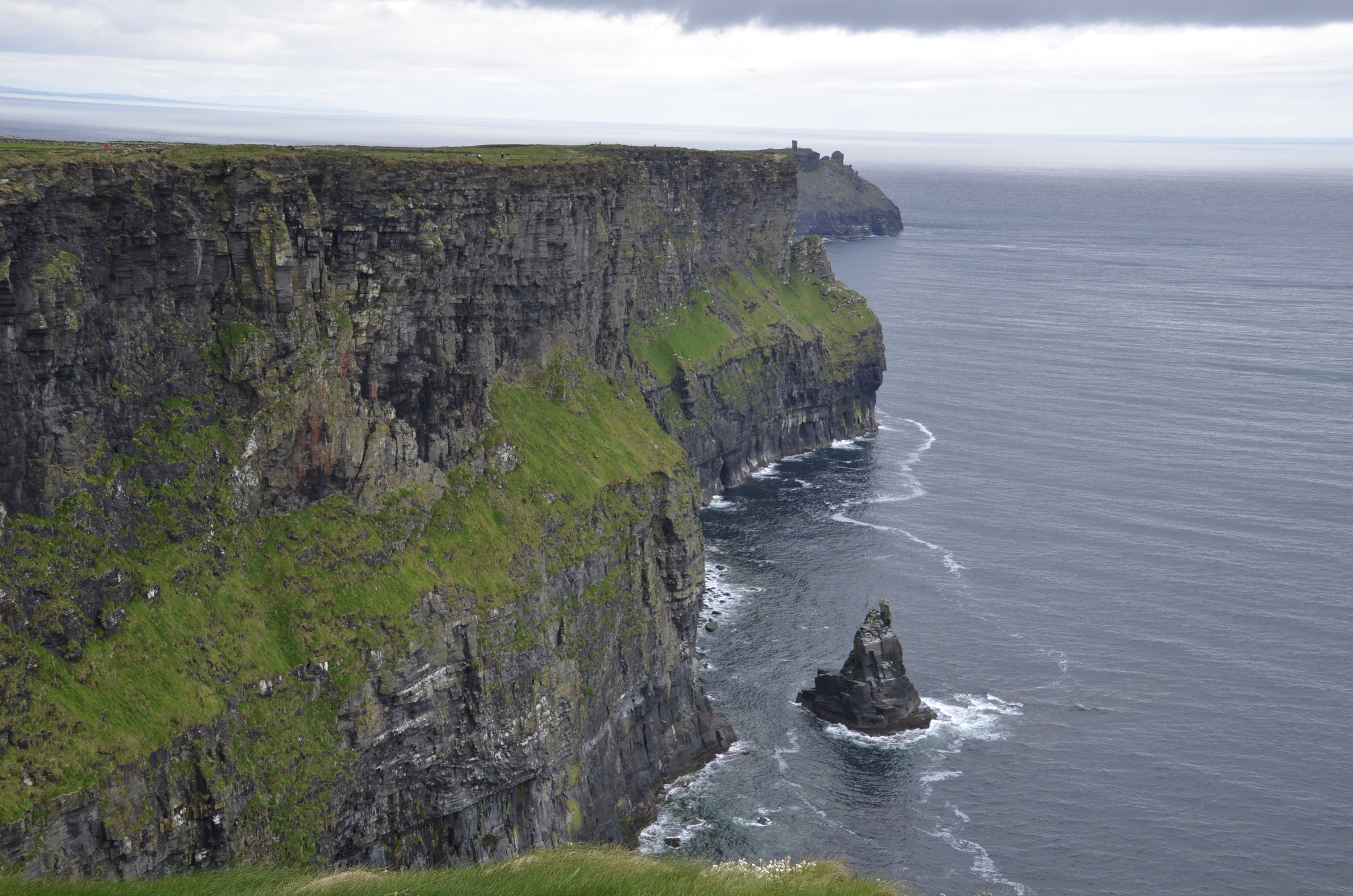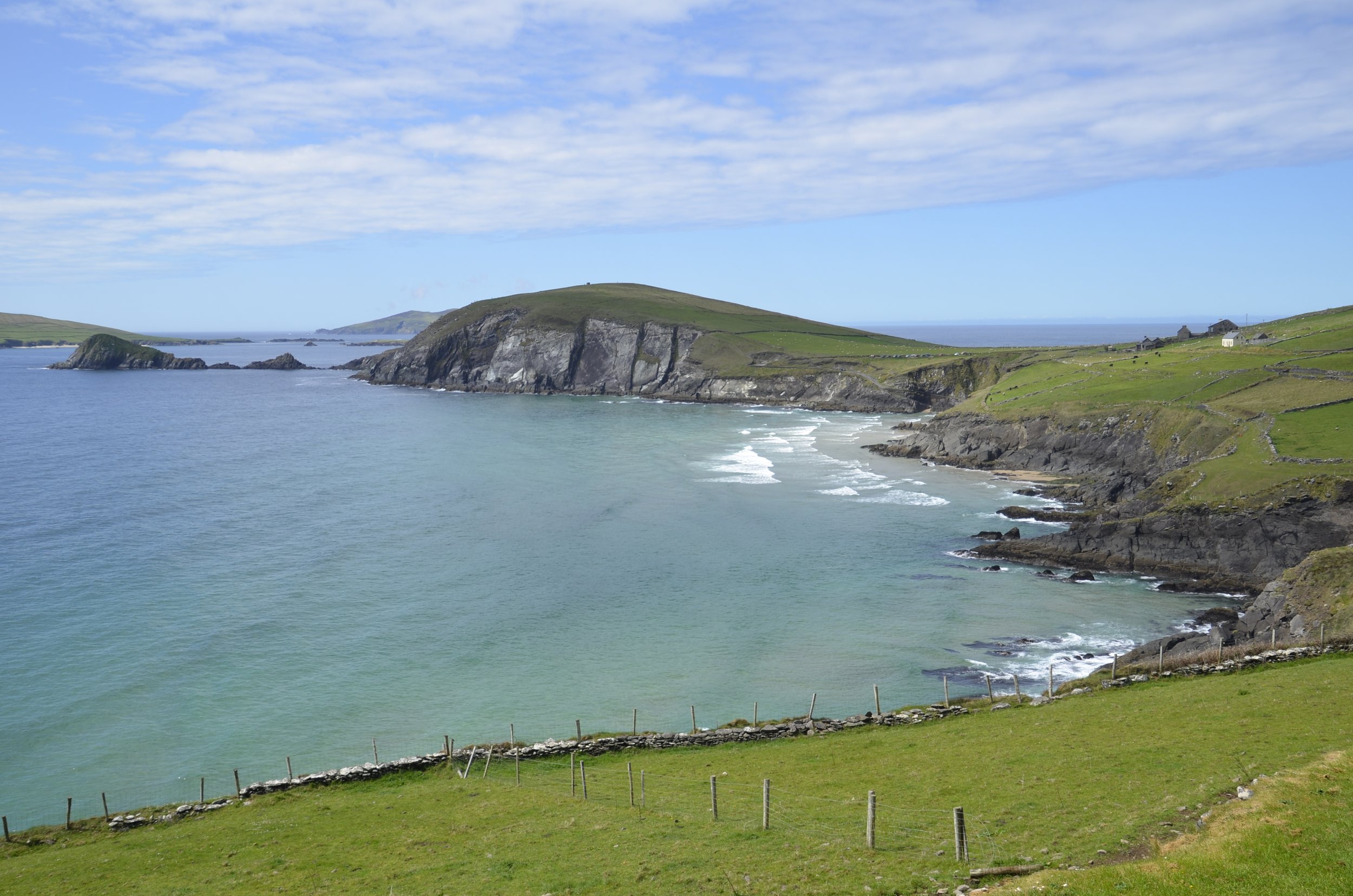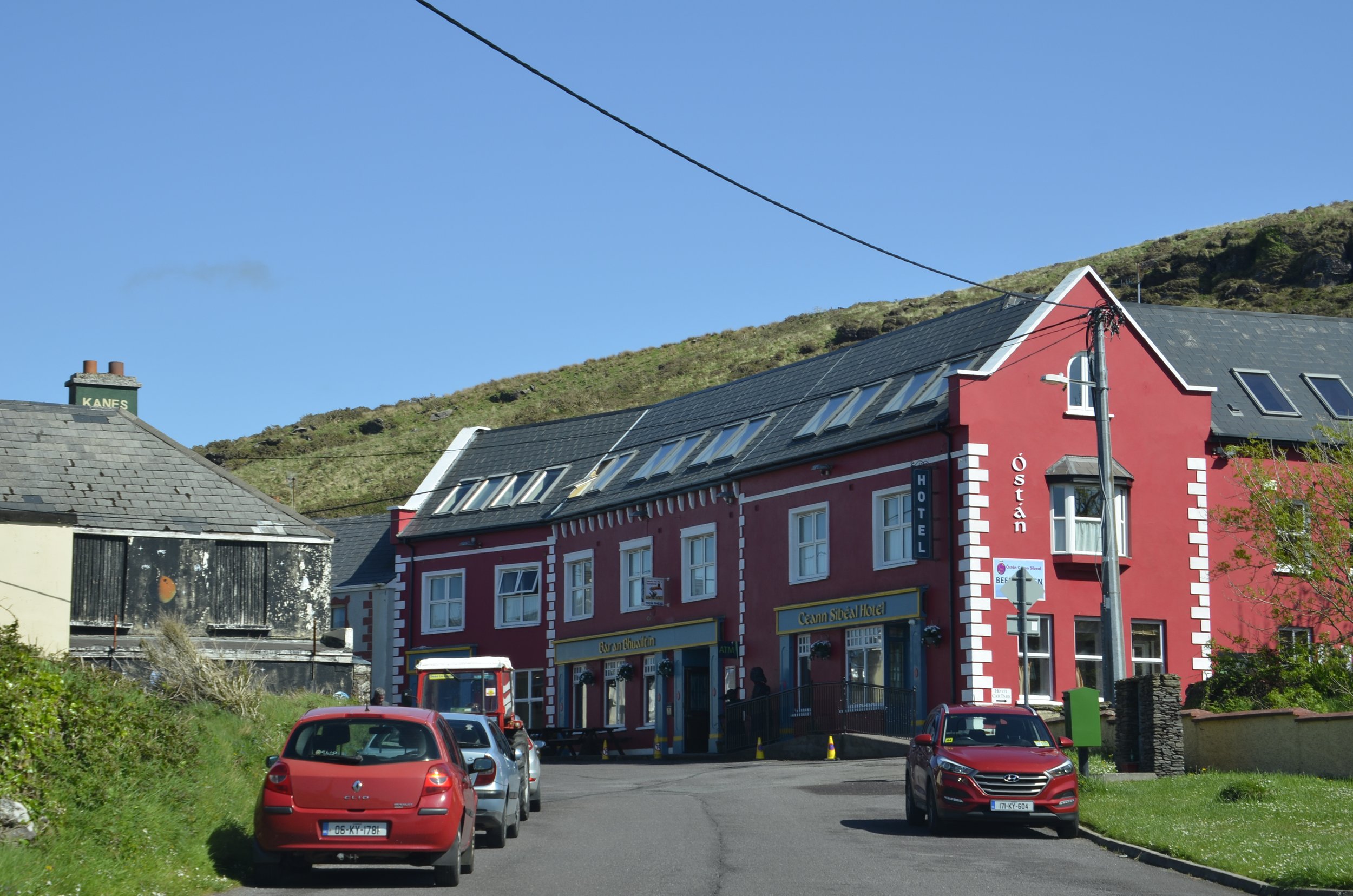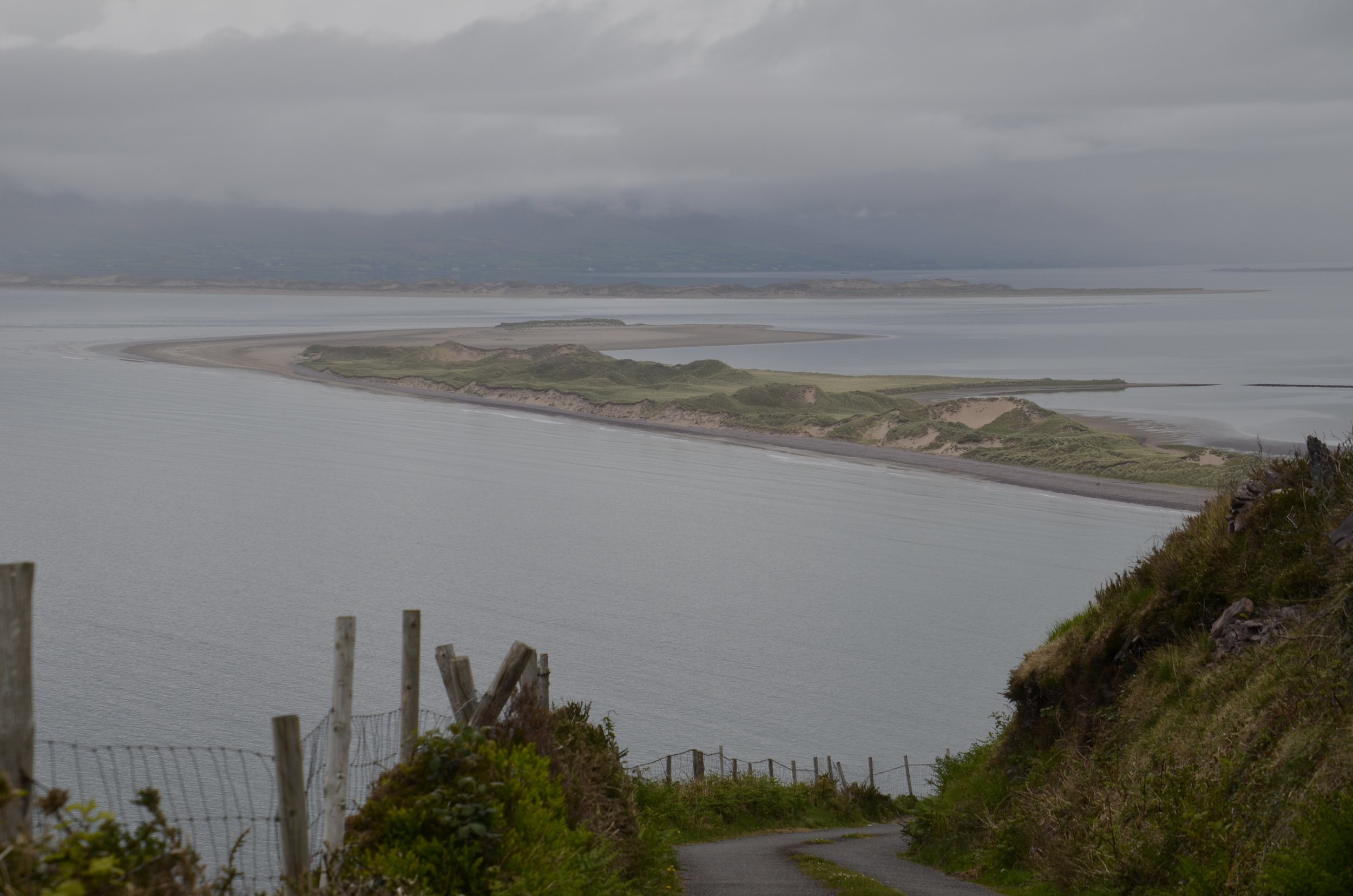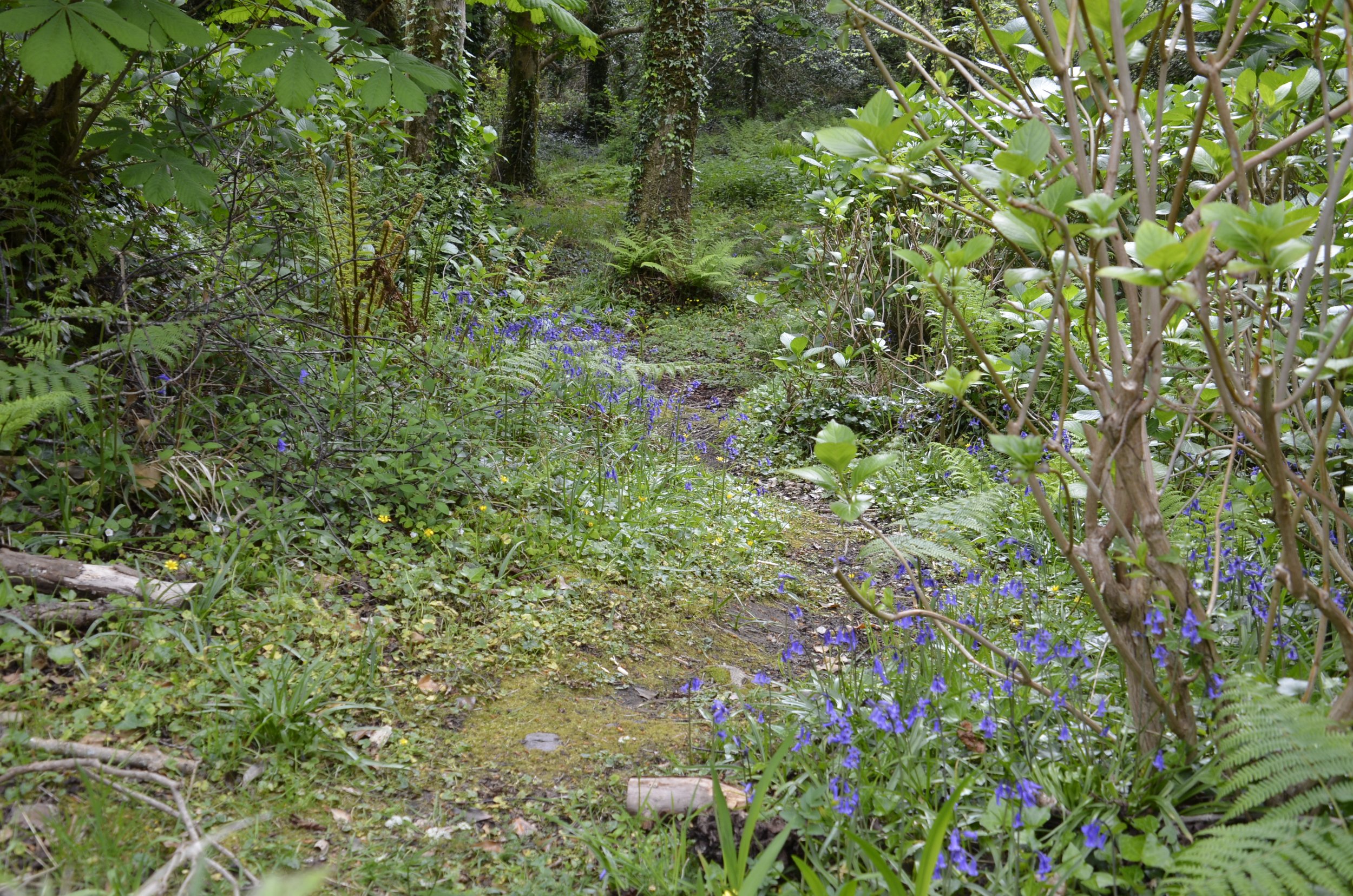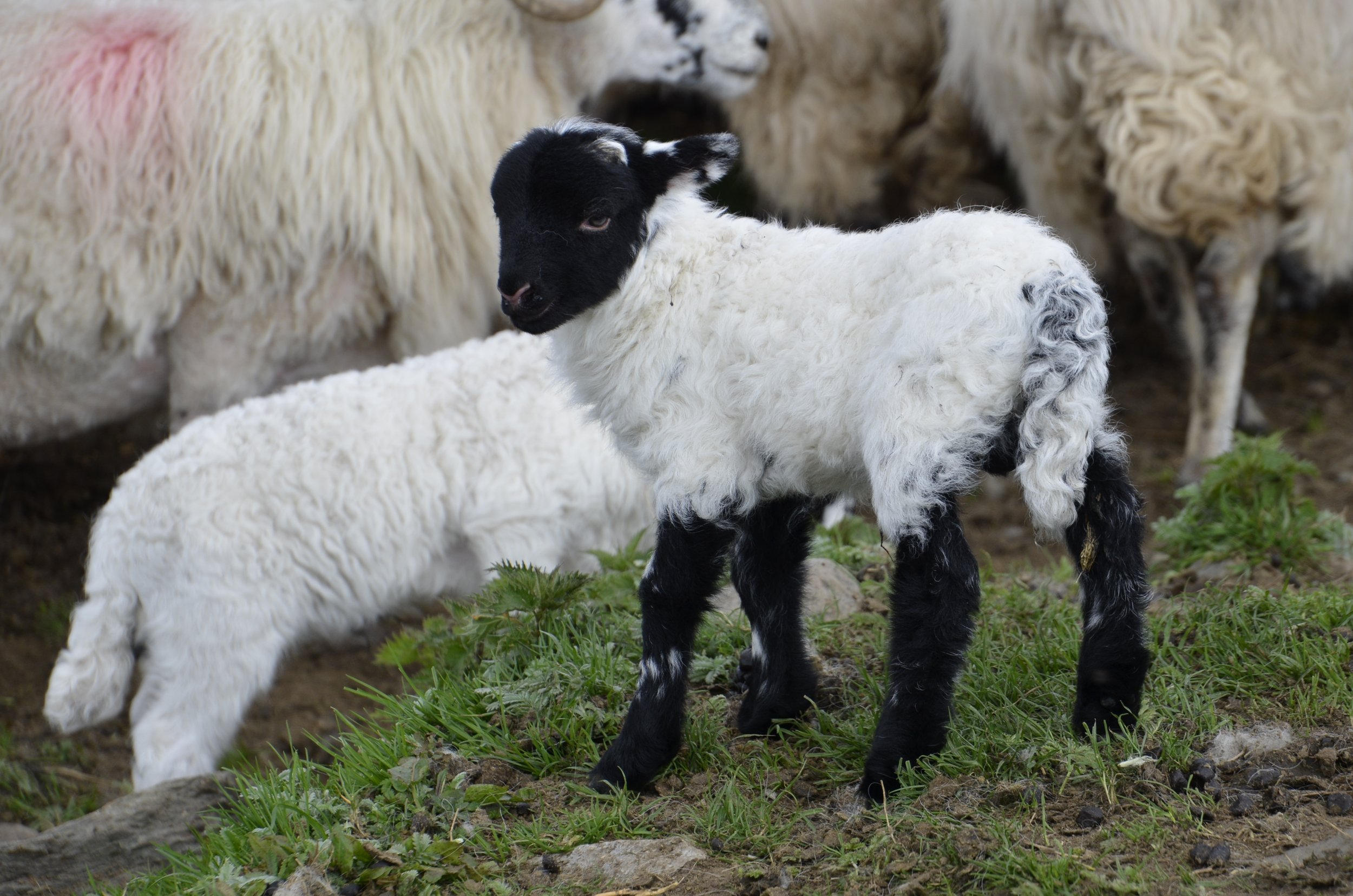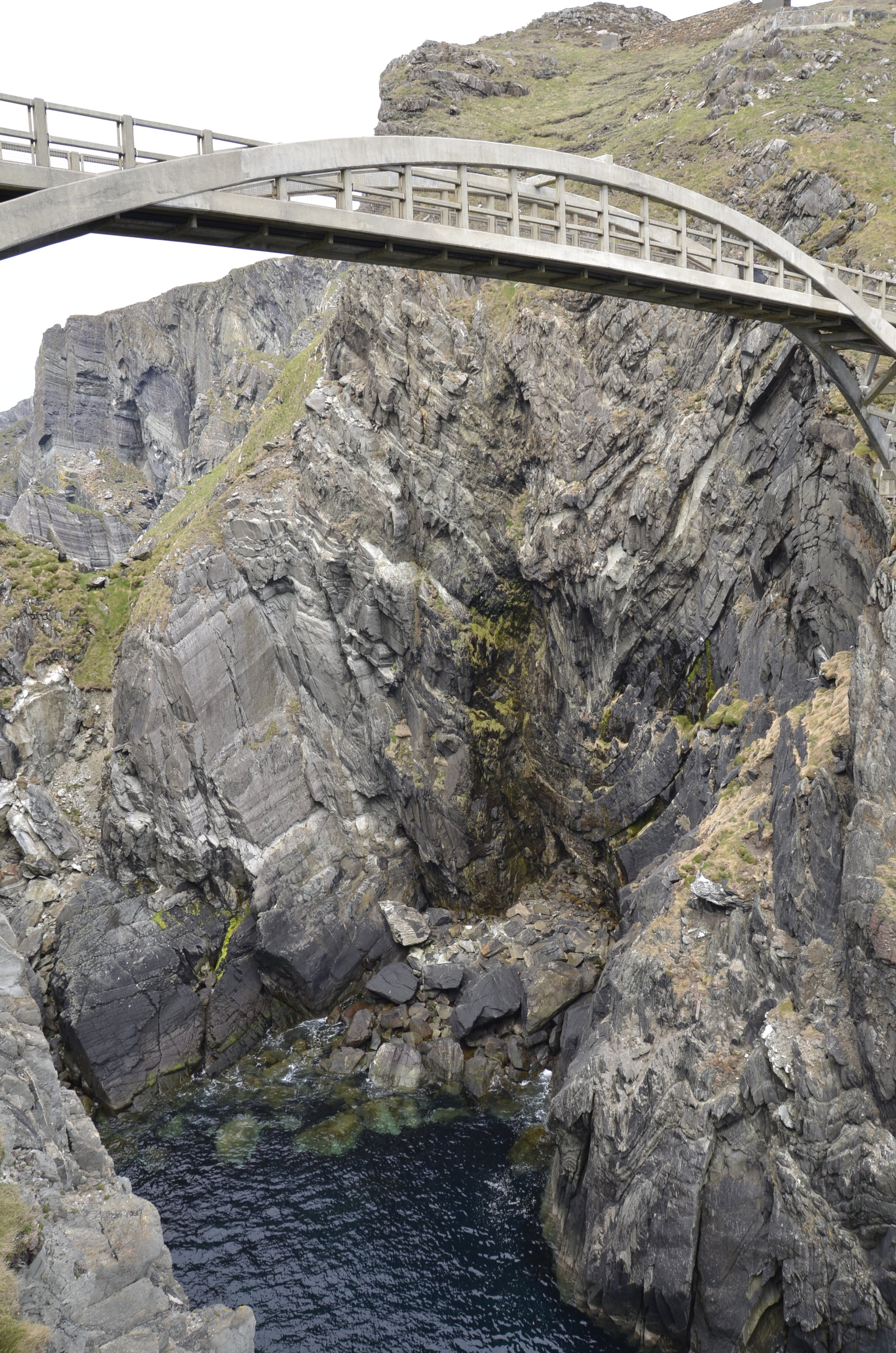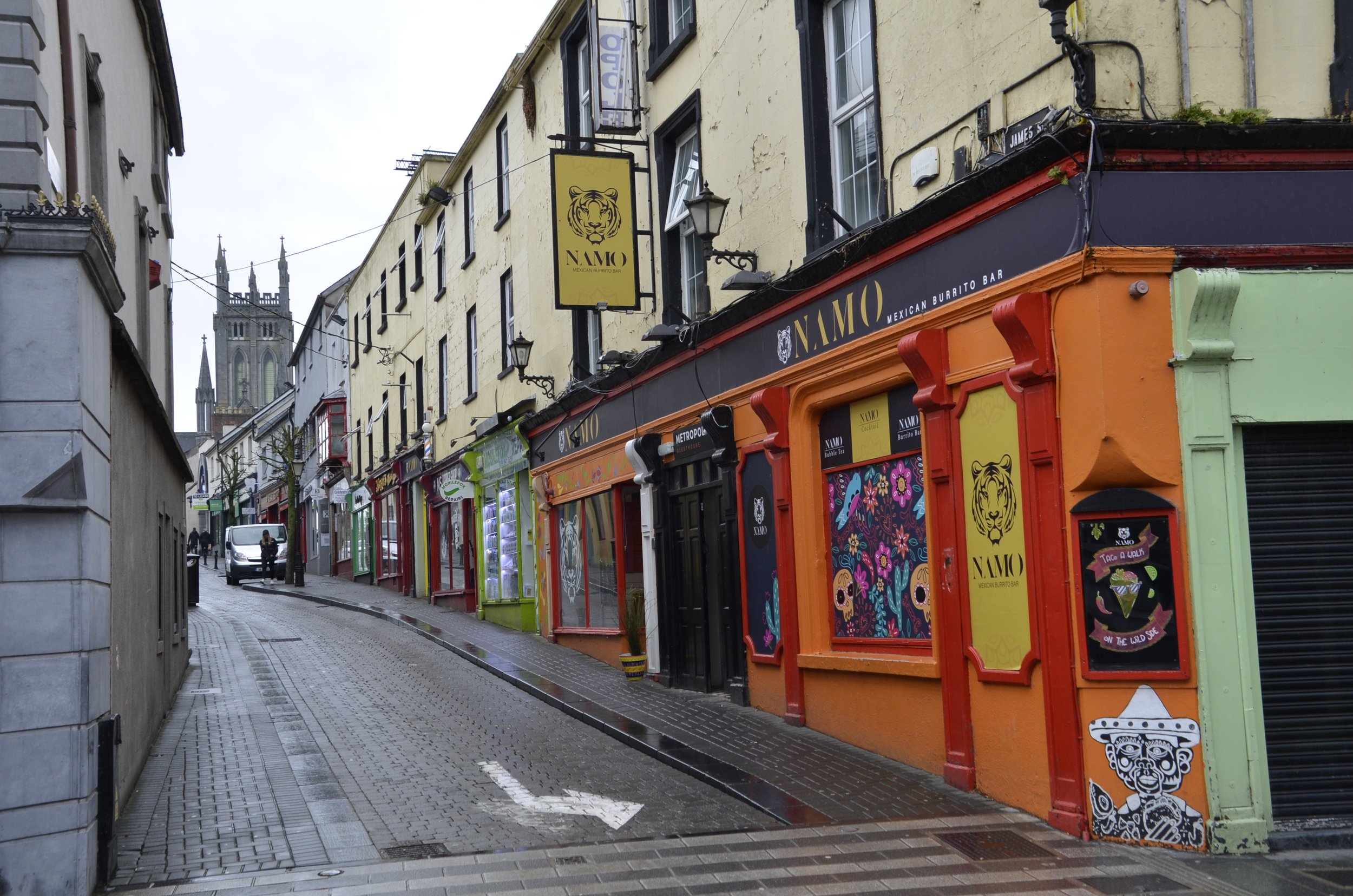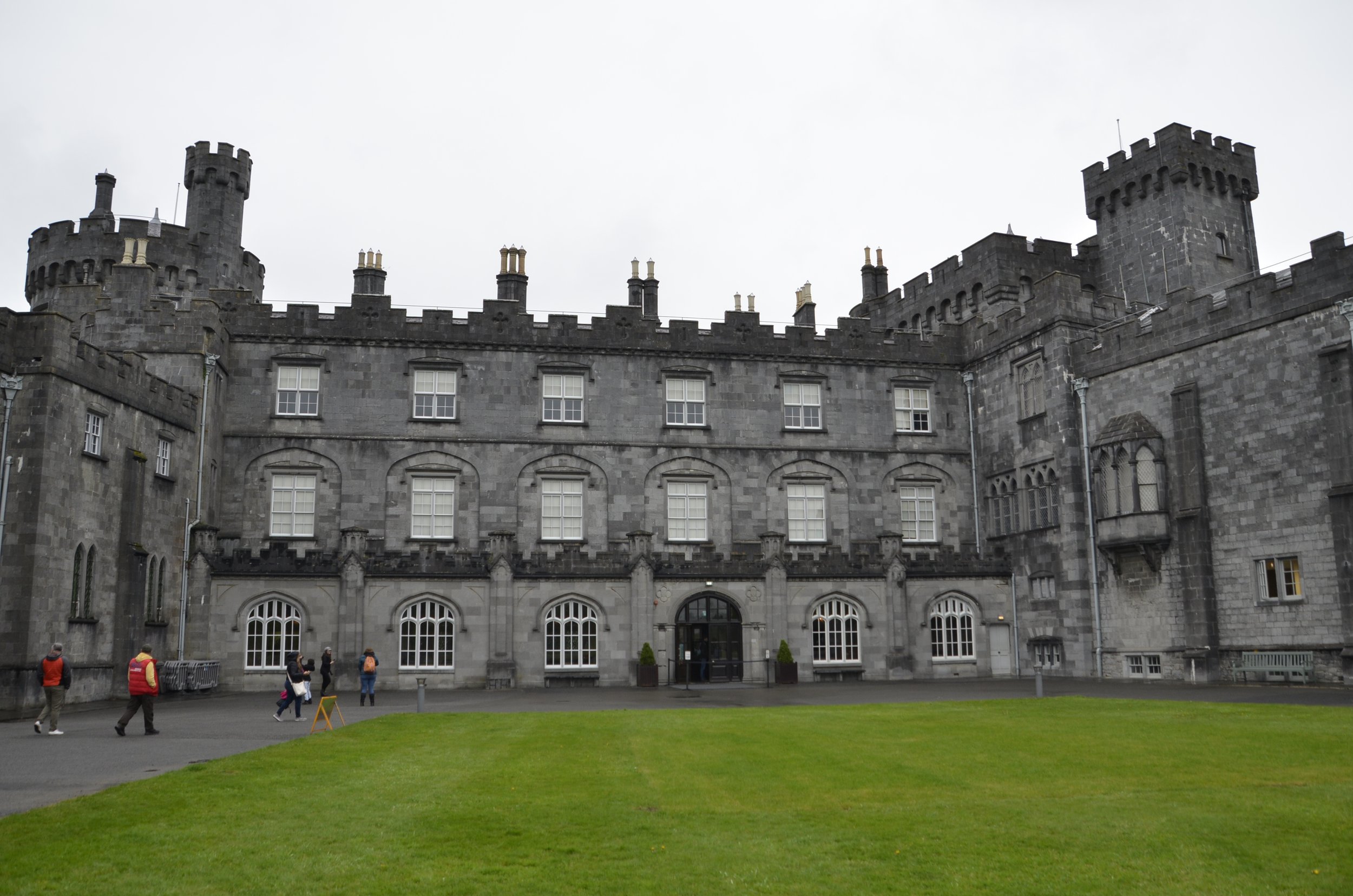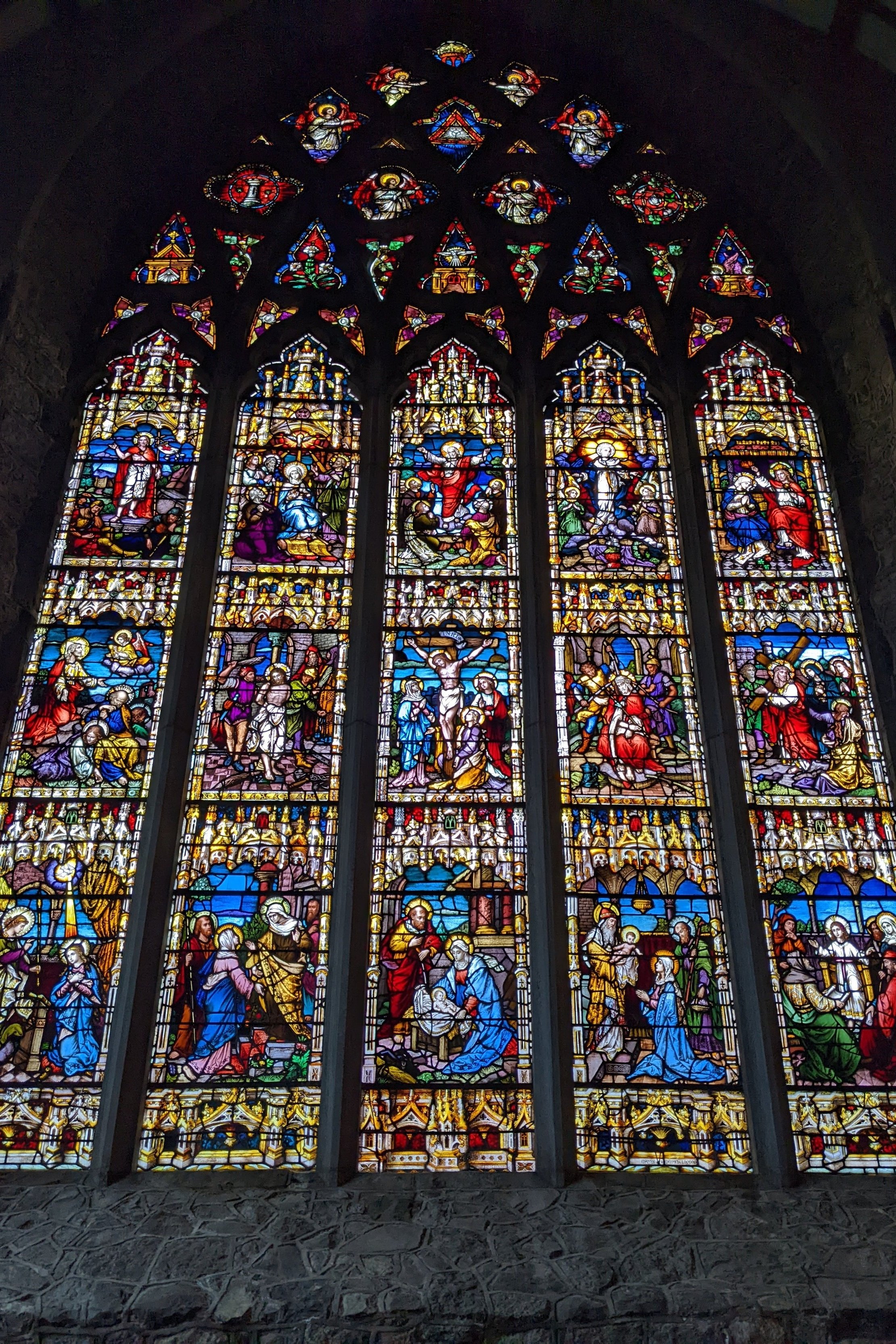Last Irish post
There are still old buildings to be shown…
… starting with Mellifont Abbey, the first Cistercian monastery in Ireland, founded in 1142.
I liked the entry gate -
A quick aside to show a remarkable tree we saw blooming all over Ireland - the Goldenchain tree -
We headed way out into the countryside to visit Loughcrew Cairns…
… and climbed up a hill to explore this one -
… finding a carved stone inside (but blocked by a gate).
There was no one around…
… and no signage to get us to the neater looking tomb on a neighboring hill. We had to settle for a long range shot with my camera:
On the way to our next stop, Google Maps took us some back roads (as it commonly does), and we met an “only in Ireland” roadblock: (as usual with a video, be sure and open this post in a browser window)
There are also old carvings to be seen. We stopped in Kells (from where The Book of Kells illuminated manuscript was taken, which resides in the library at Trinity College in Dublin) to see the High Crosses there. Irish High Crosses are free standing stone crosses that are richly decorated.
The round tower dates from before 1076, and the cross from the early 9th century.
Stories from the bible are commonly depicted in the carvings.
Well, our B&B host told us of a site where there were more and better crosses than at Kells. Monasterboice was a treasure trove -
(this was why we thought they were called “high” crosses)
The round tower here was built around 968 and three of the High Crosses in this cemetery were also erected in the 10th century.
This one was even taller!
Apparently, the chipping off at the base of the cross was done by emigrants for mementos before they left for America during the Great Famine of the late 1840’s -
We stayed in Drogheda, to easily access all the sites in the Boyne Valley, and the town itself had a couple of neat structures. The Magdalene Tower is the belfry and all that remains of a 14th century Dominican Friary -
I went back a second evening to get a different angle and light. ;)
Laurence’s Gate is a 13th century barbicon, which is a fore-work guarding the main gate in the walls into the city (of which nothing remains). This one is considered one of the finest in Europe.
Note the space where a gate could be lowered -
I just thought it was interesting because it’s sitting in the middle of the town with nothing else like it around.
Now, we’re off to Scotland, and because I don’t have a magnificent picture to finish this blog post with, I’ll give you a peek at coming attractions -


